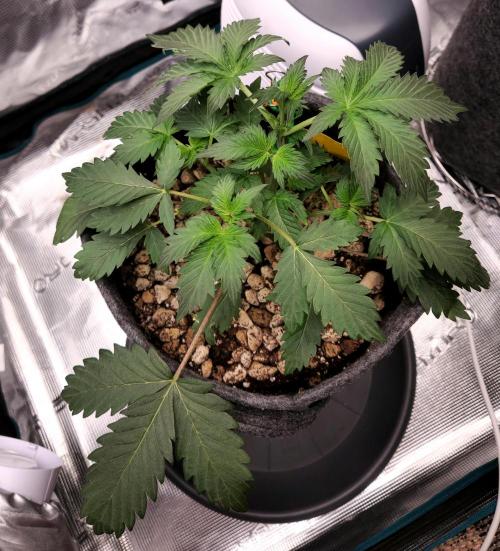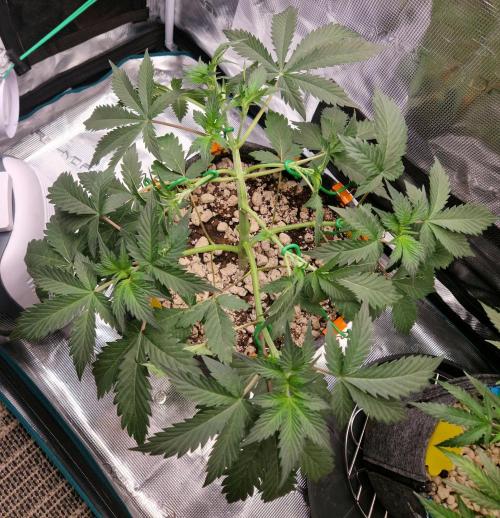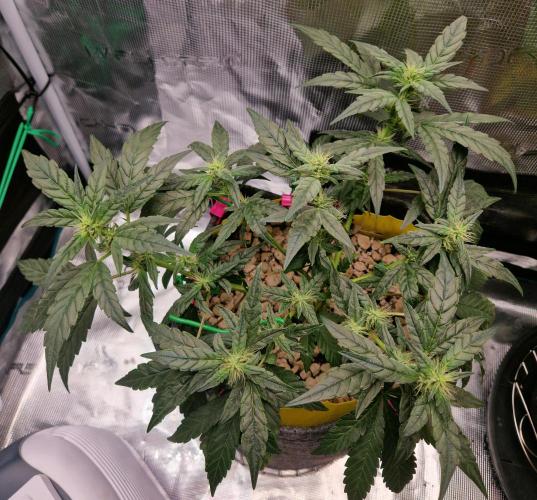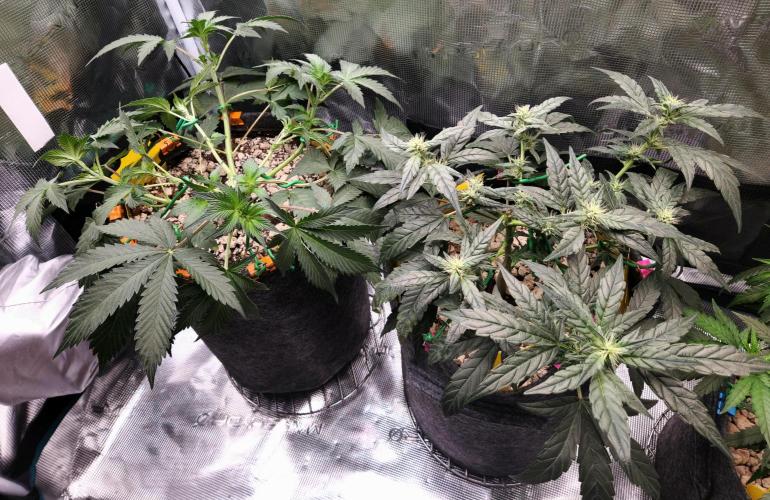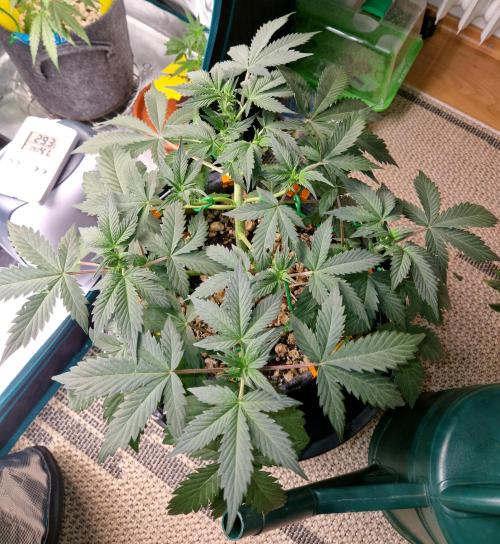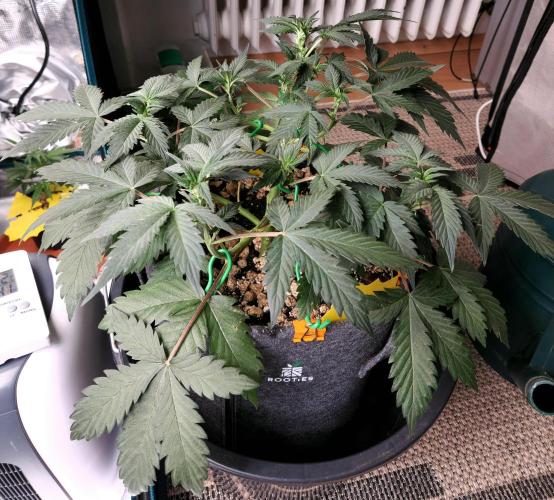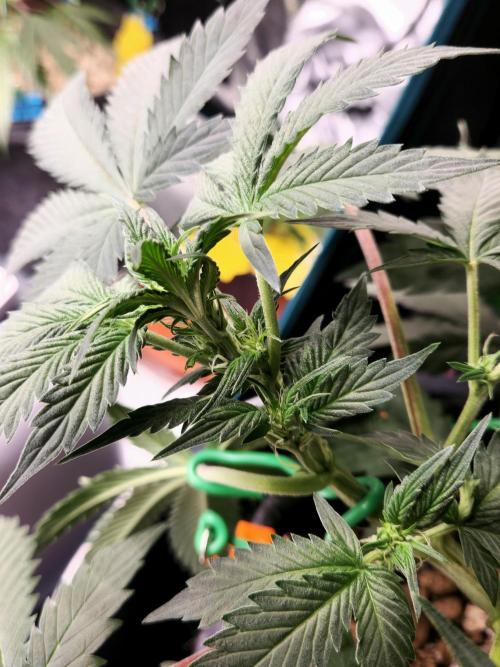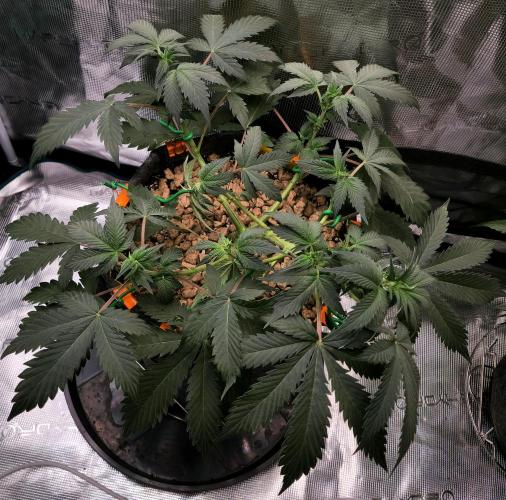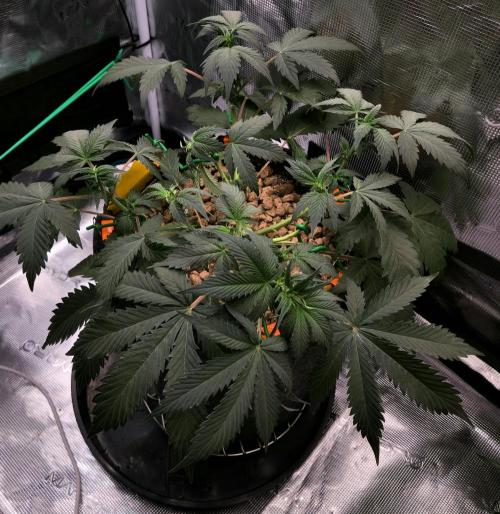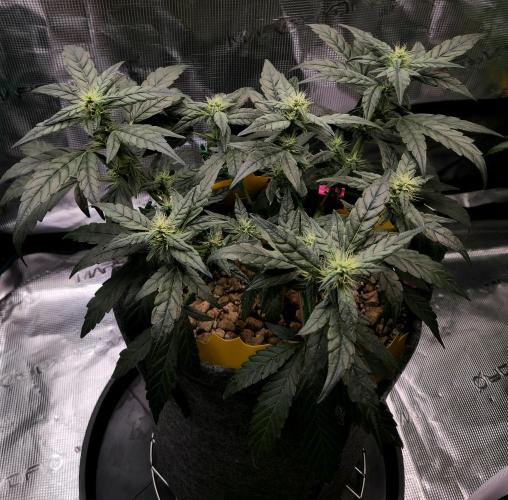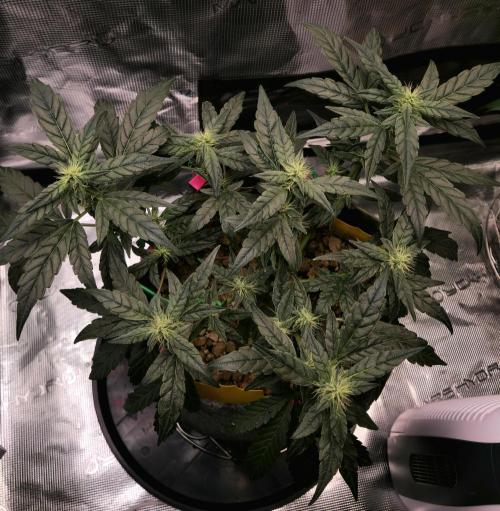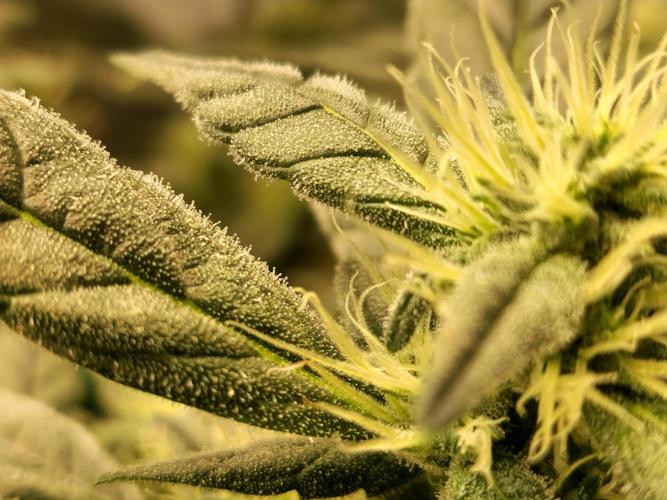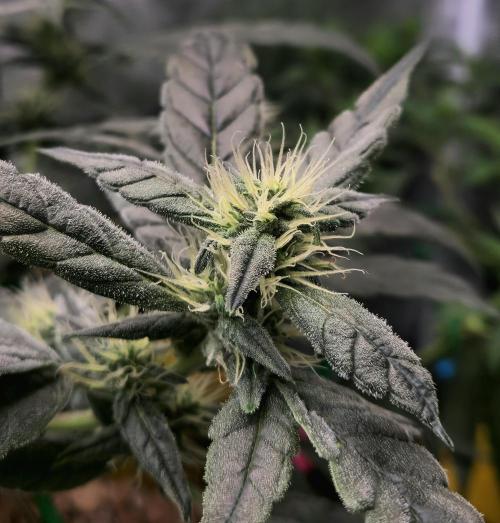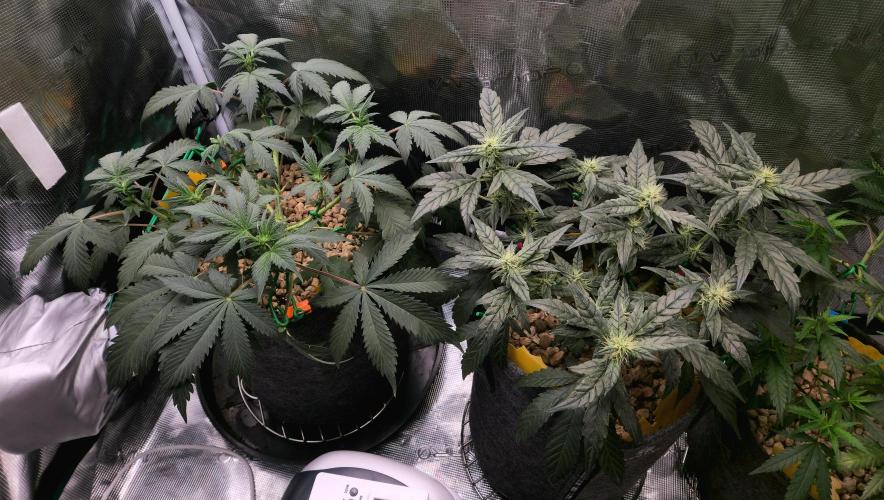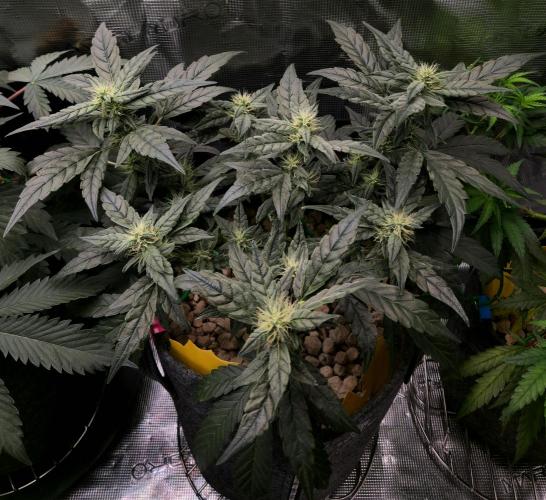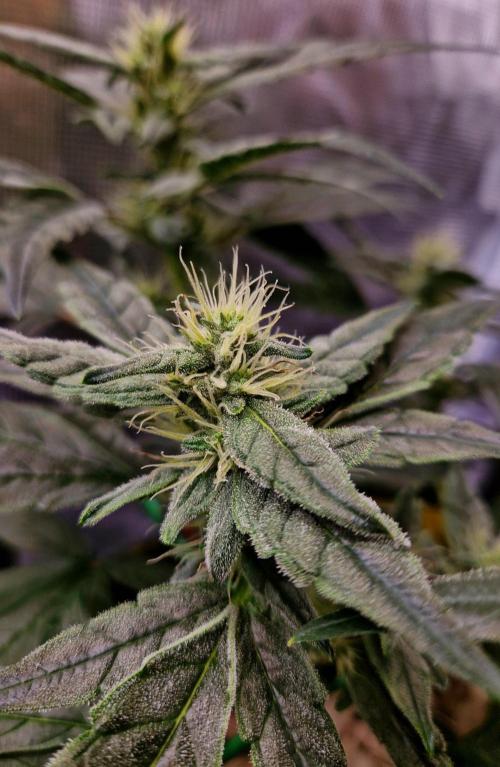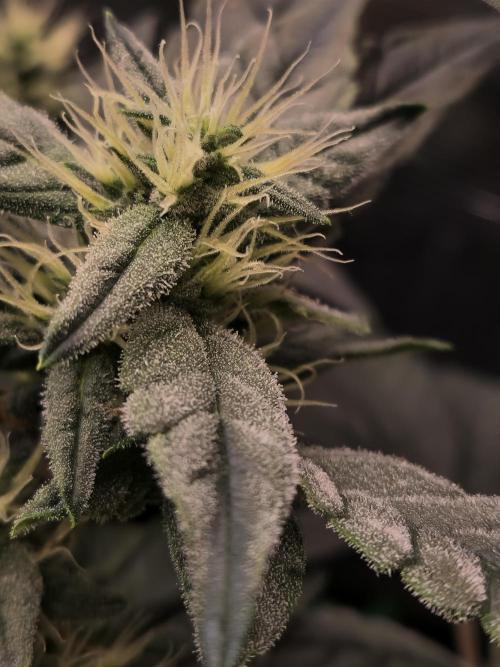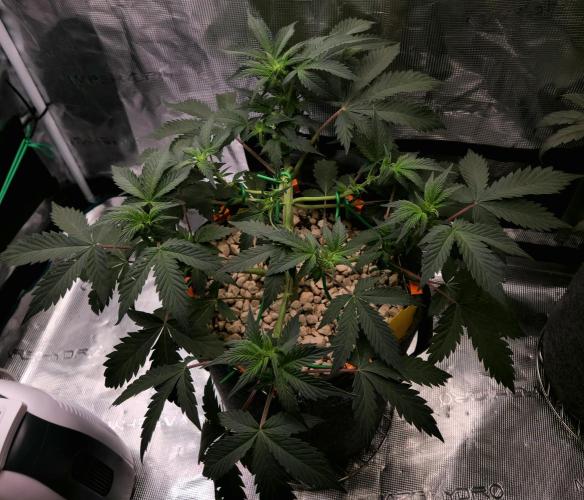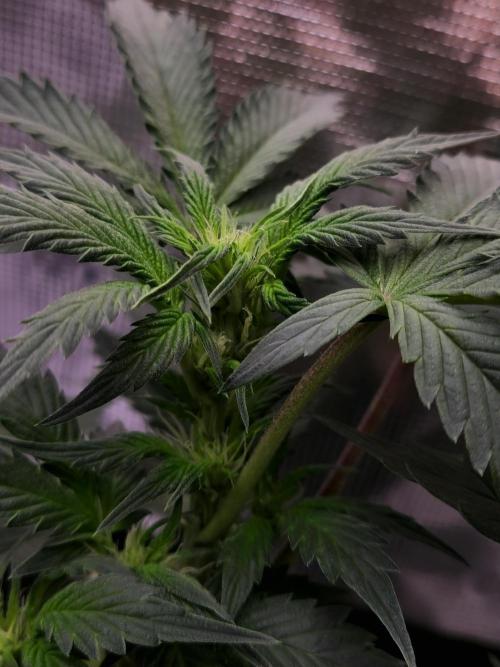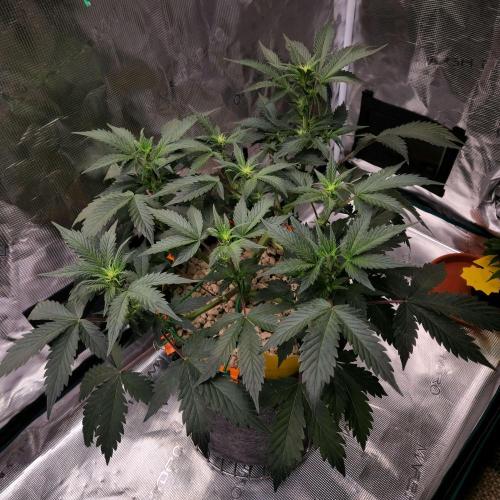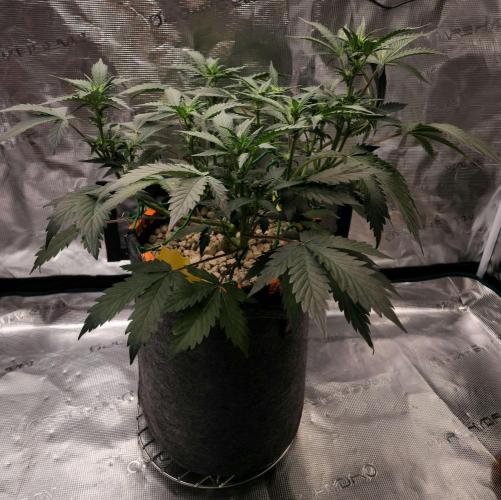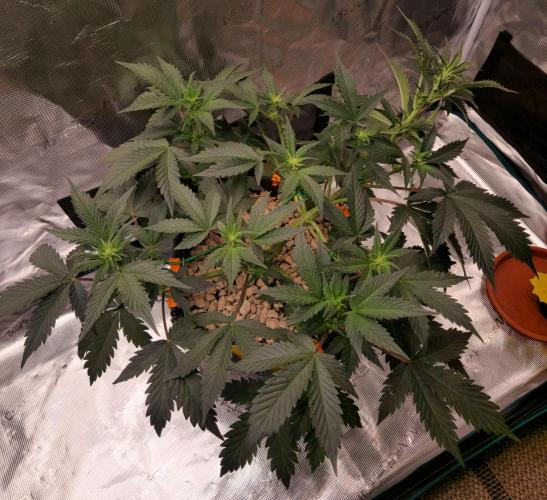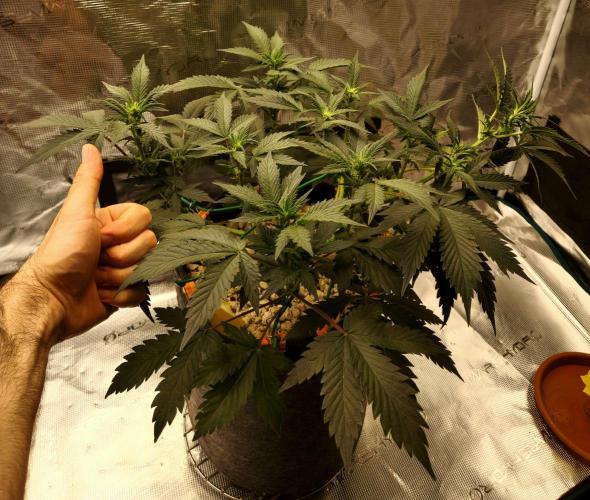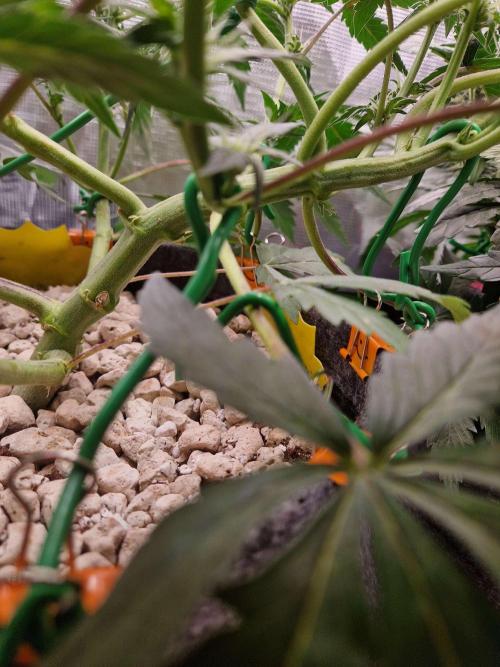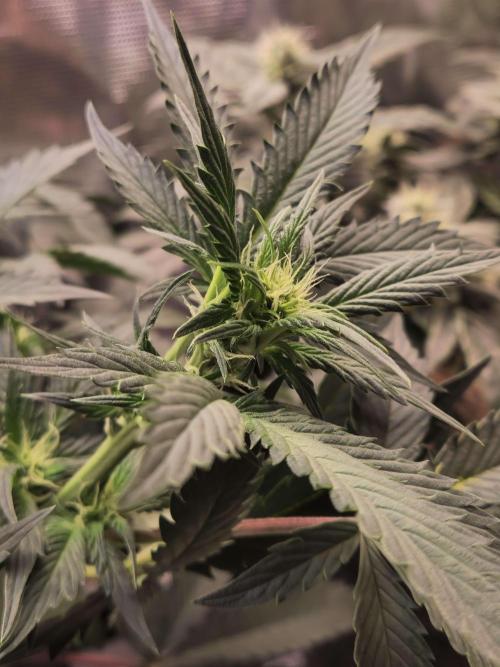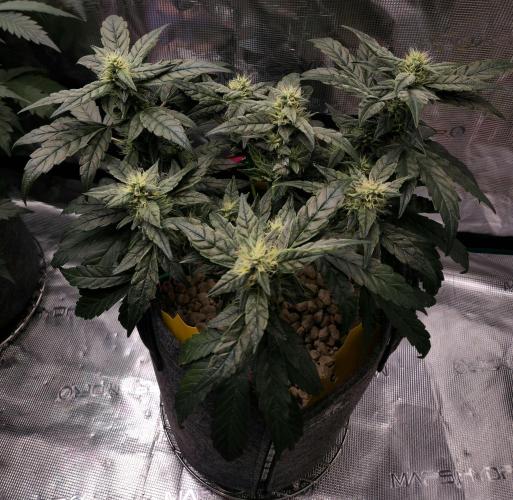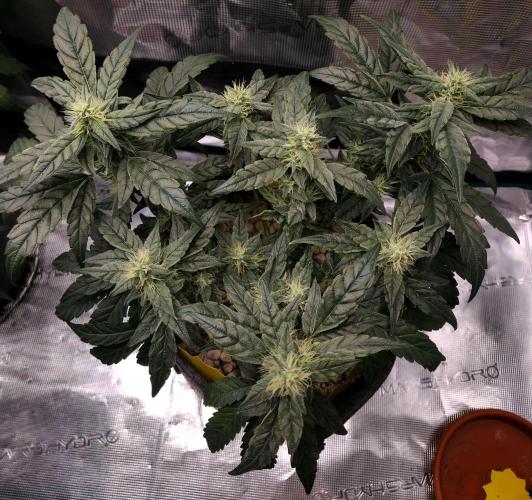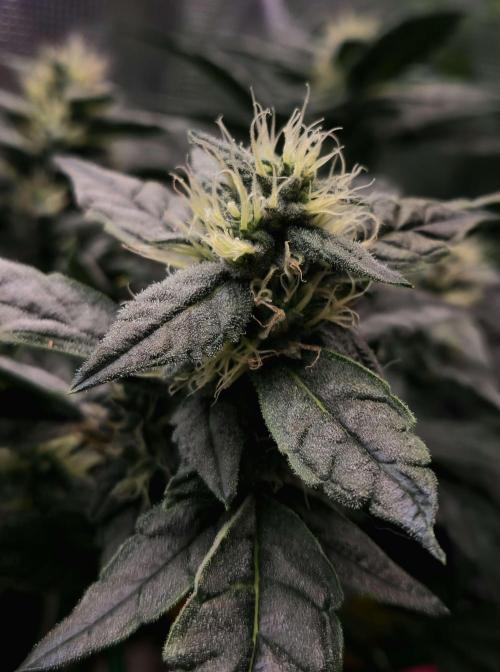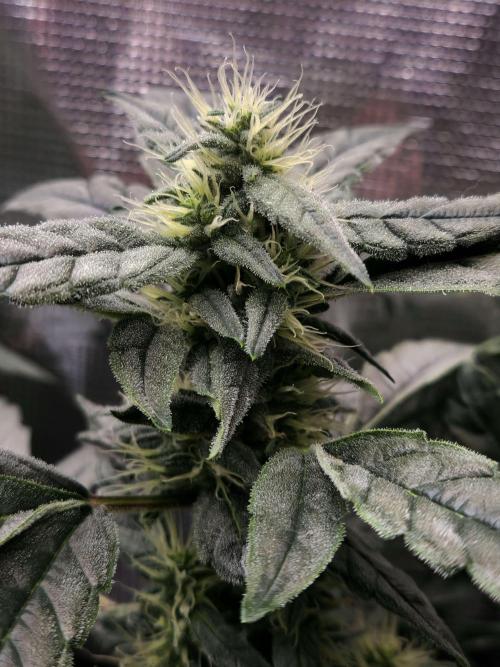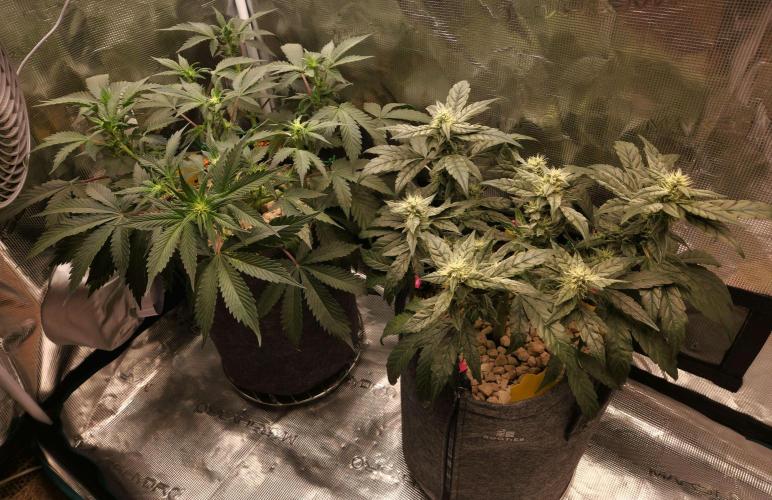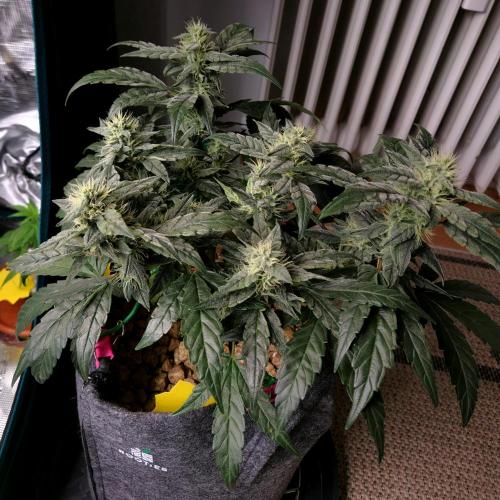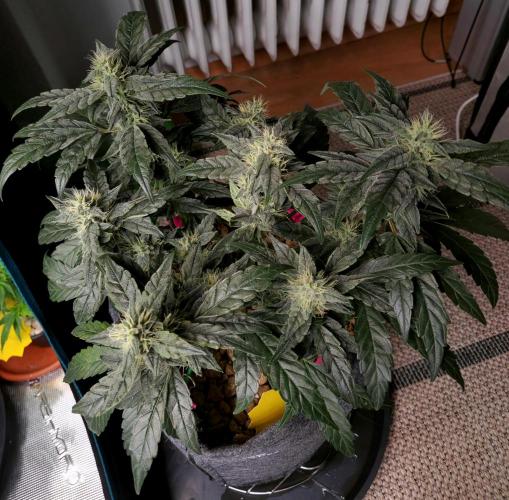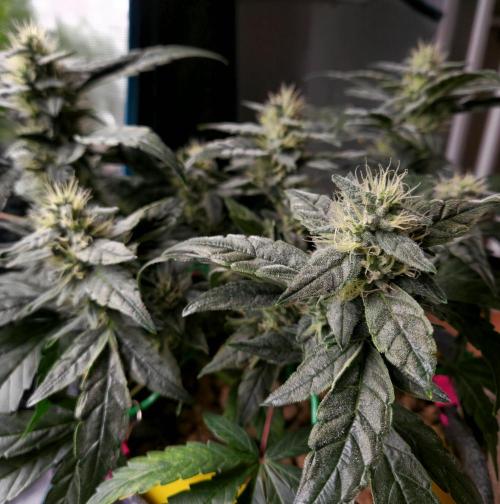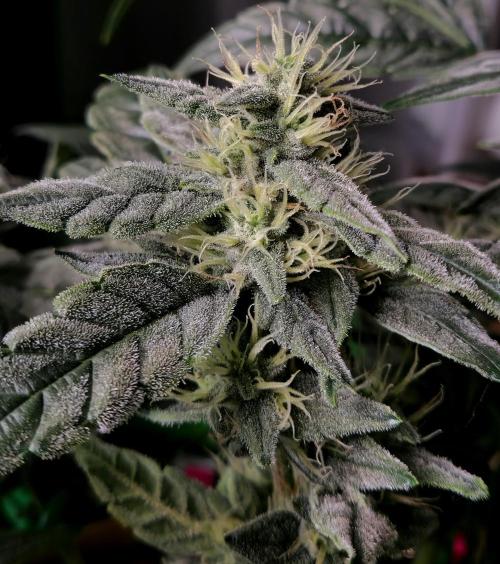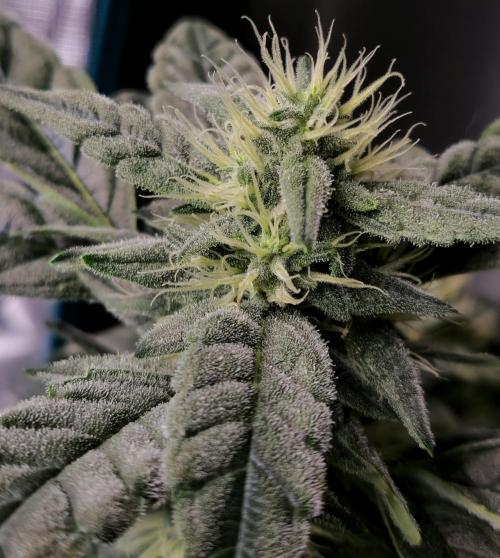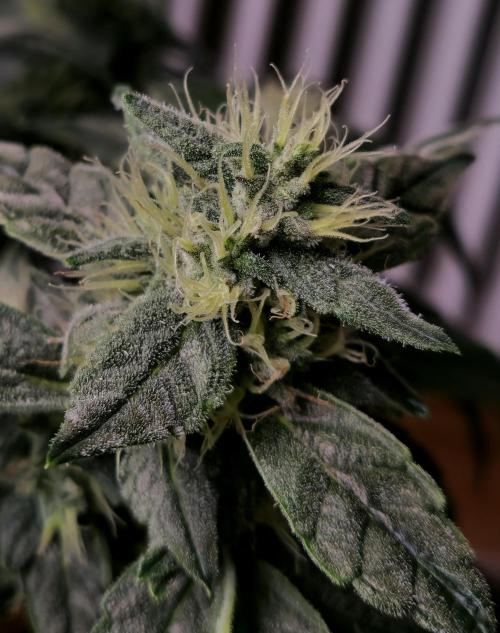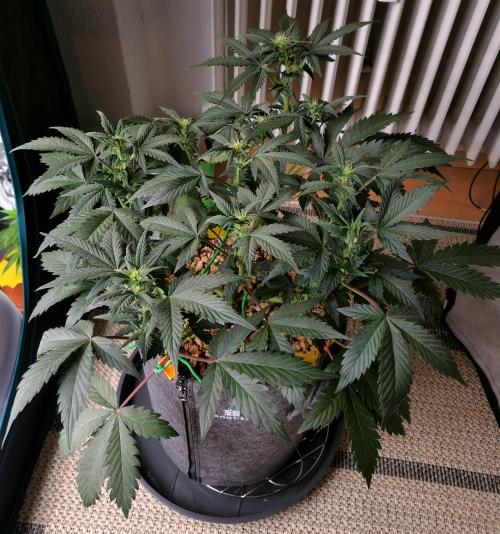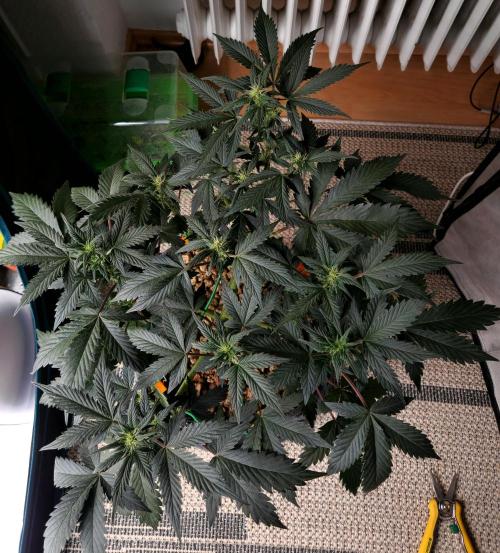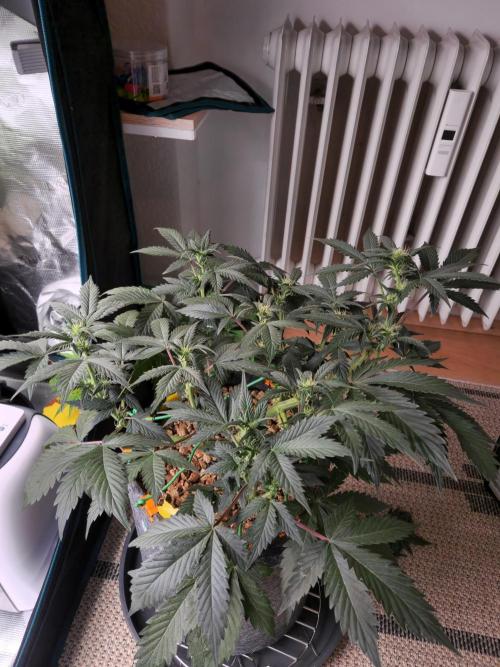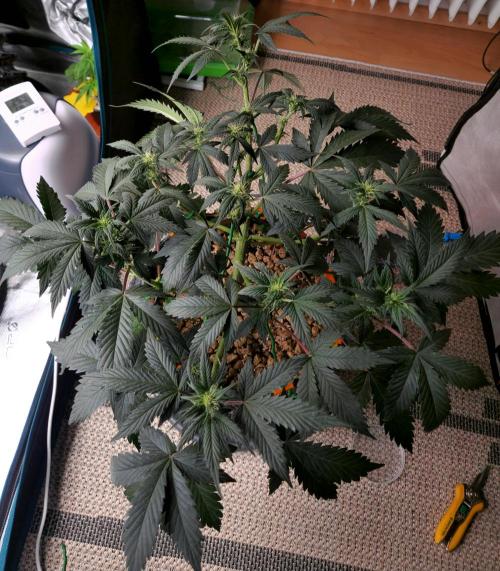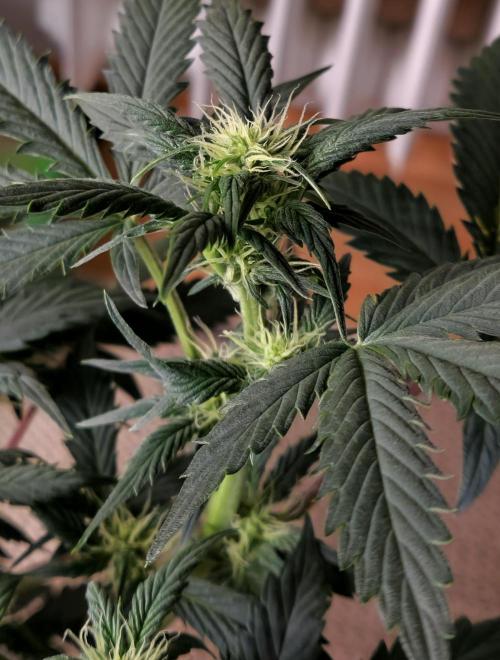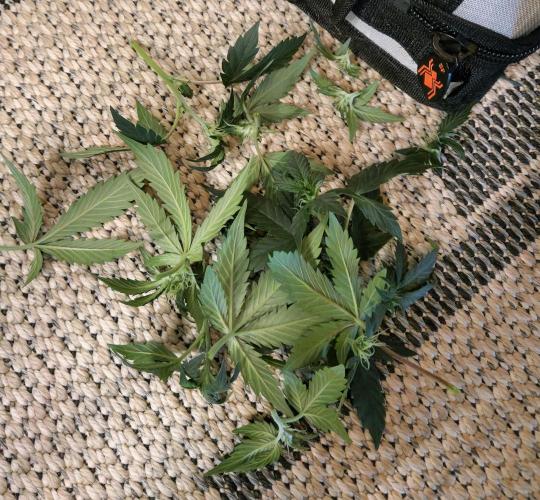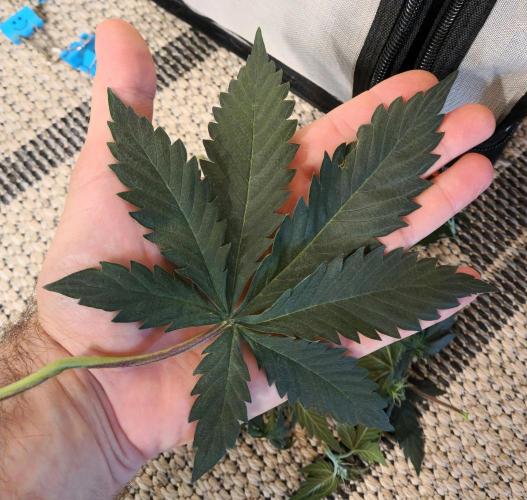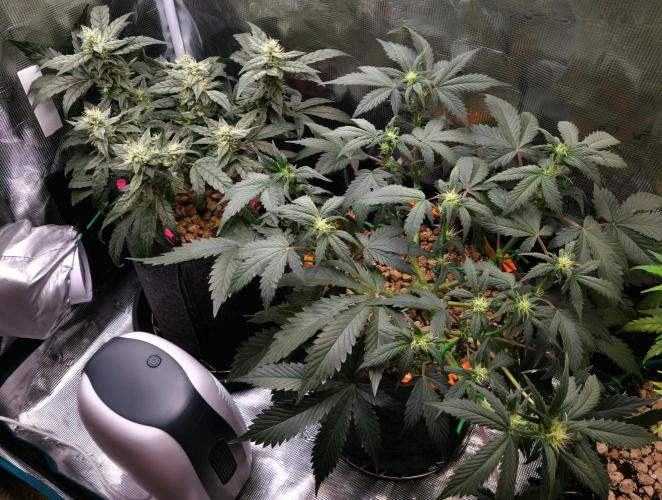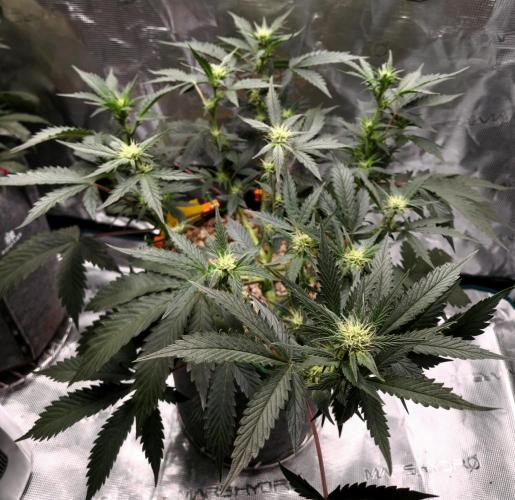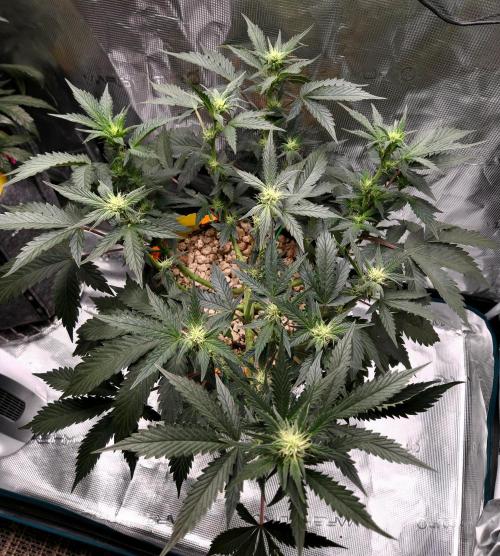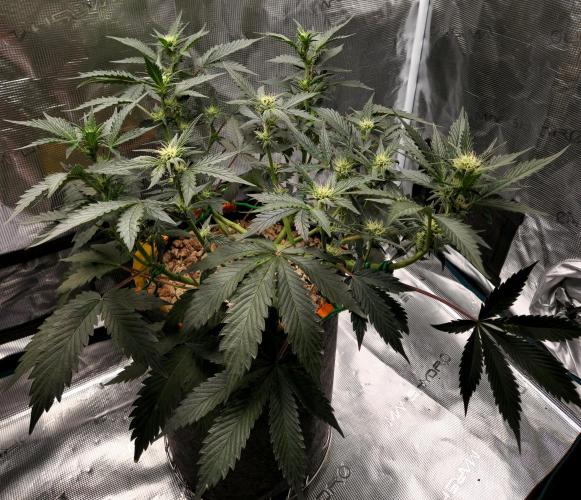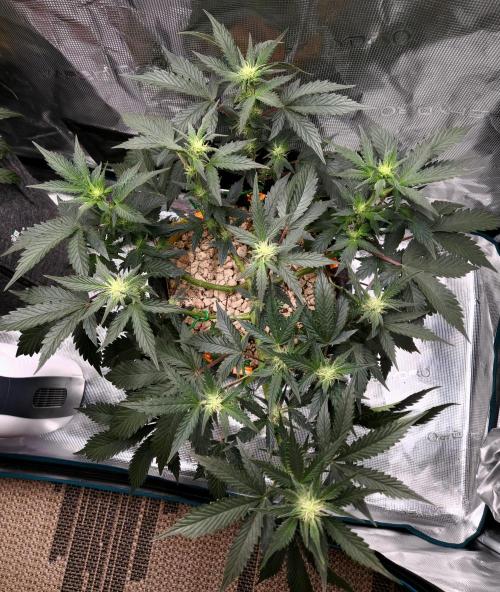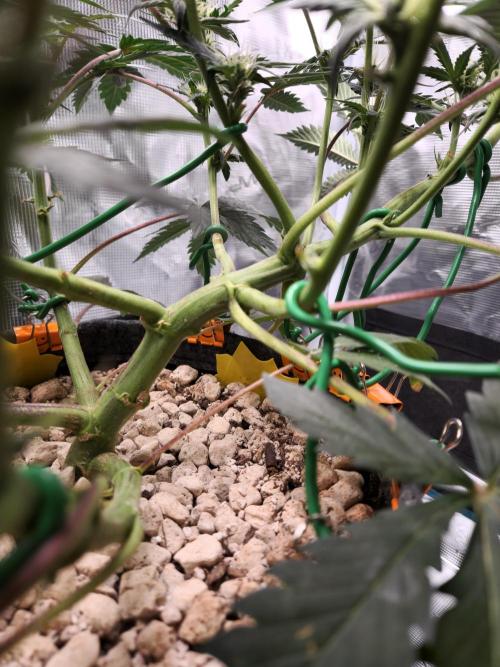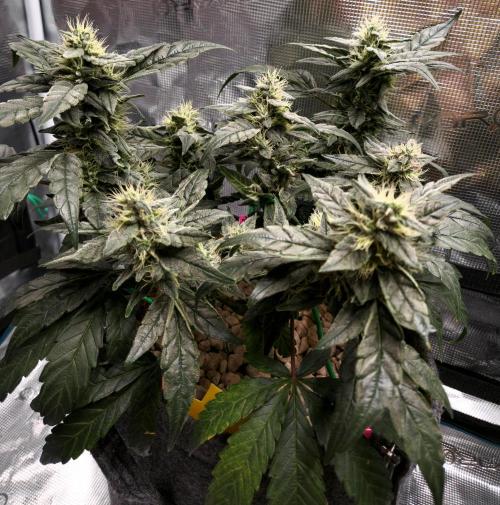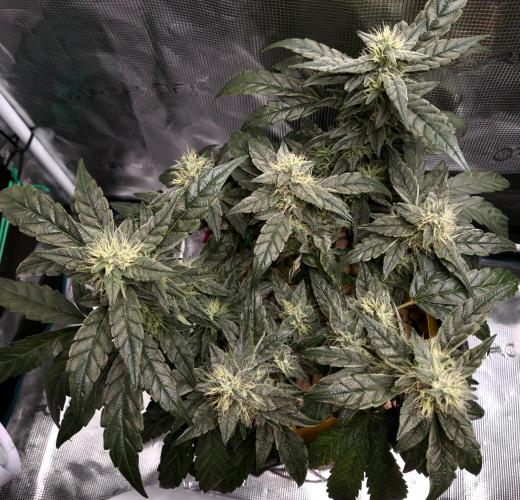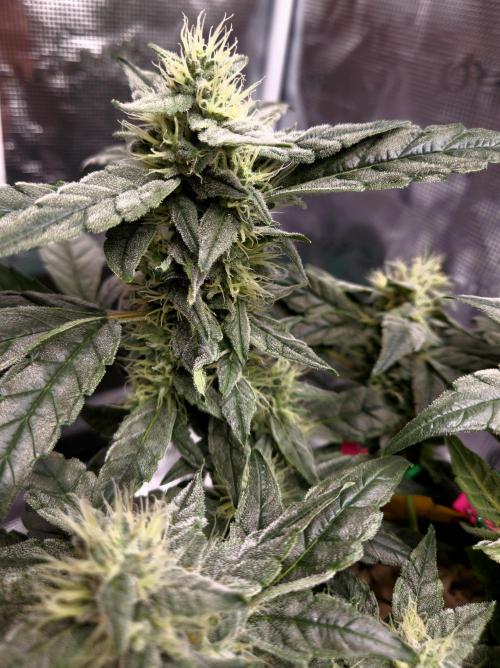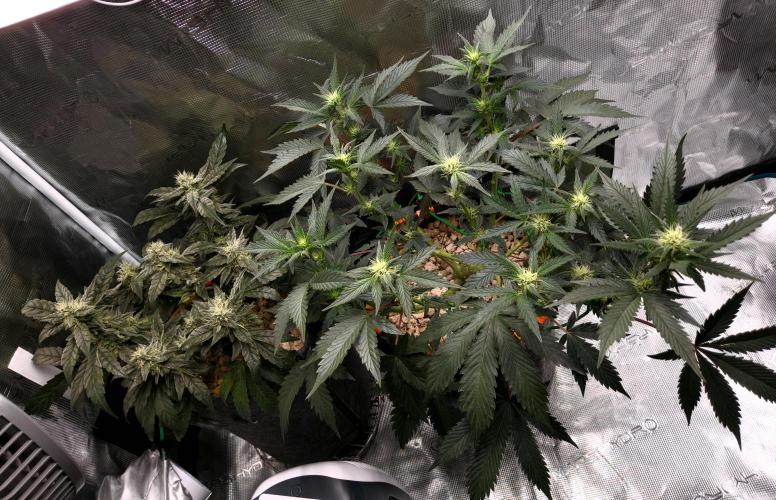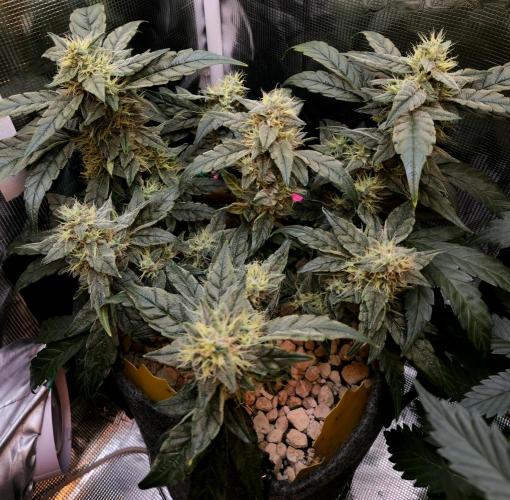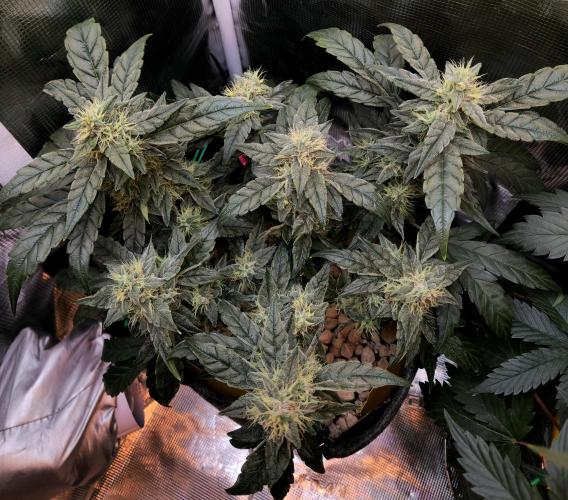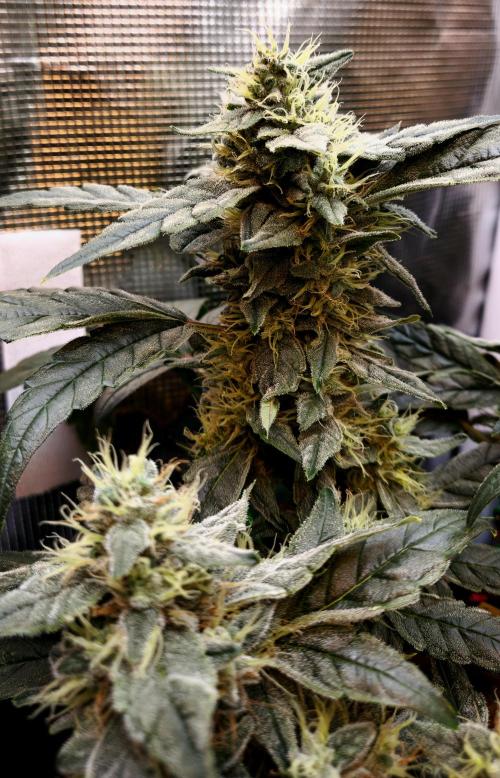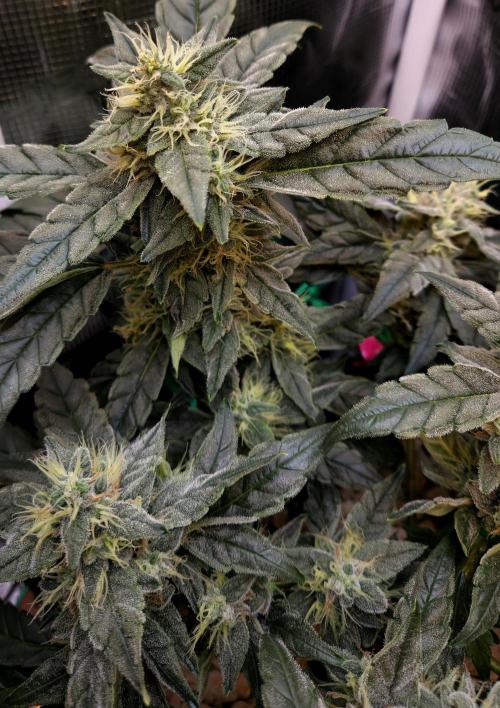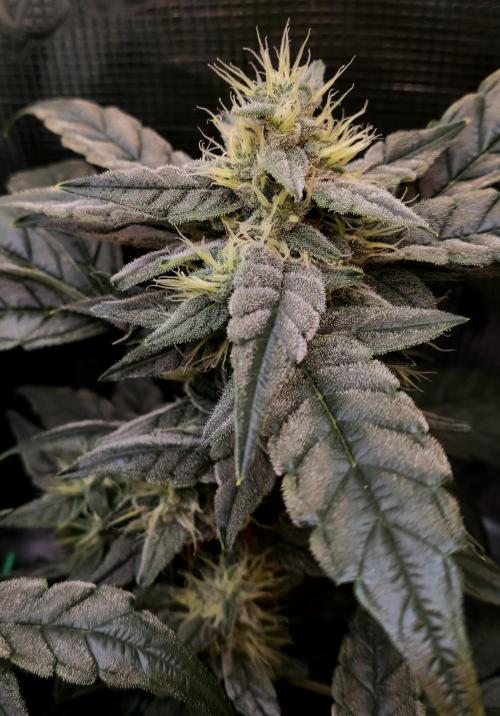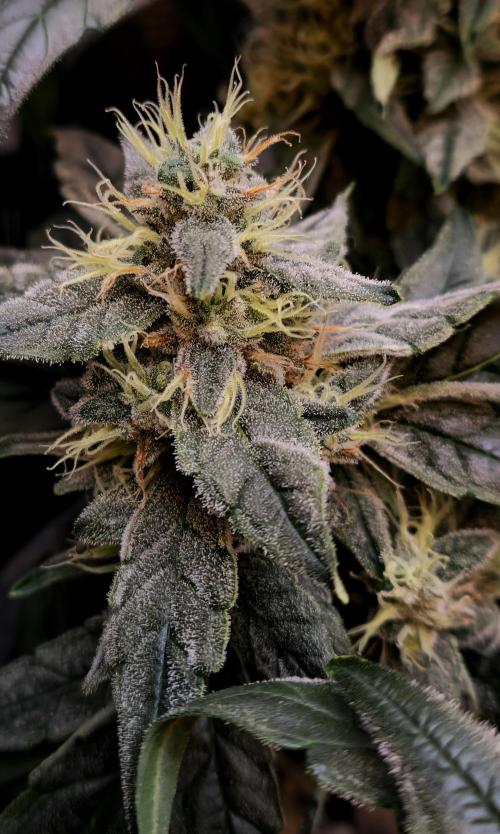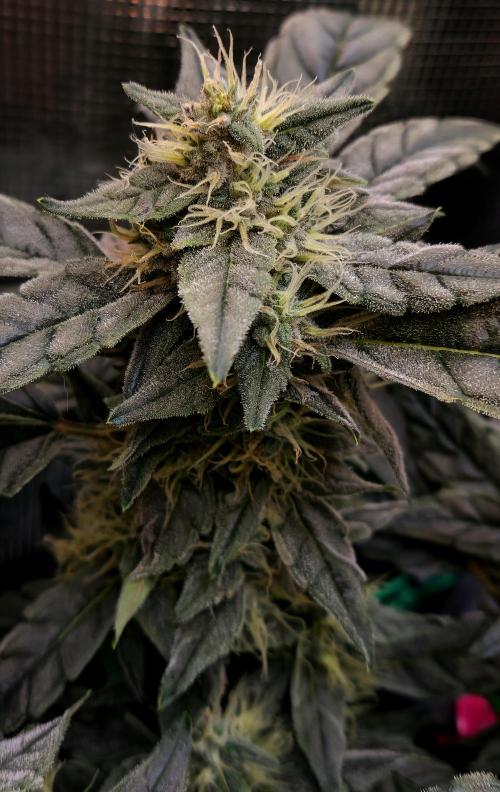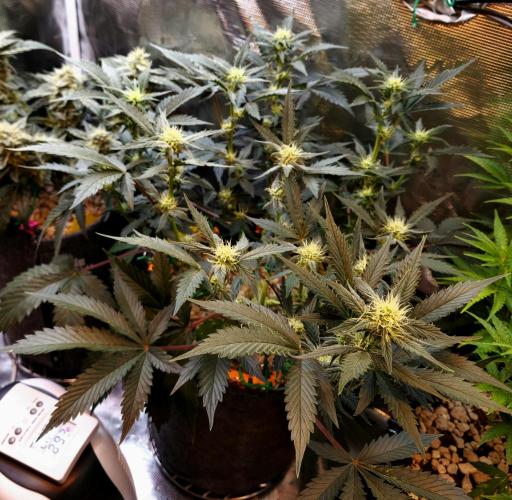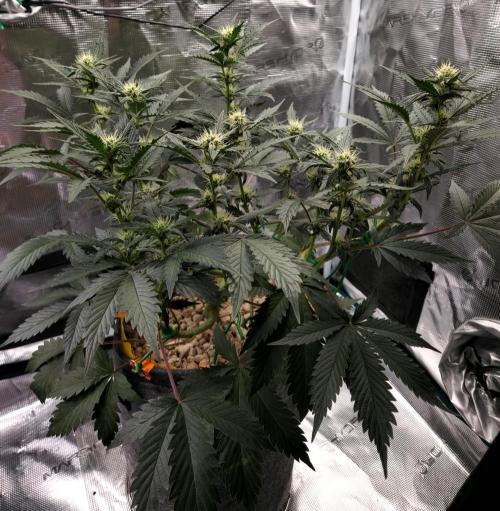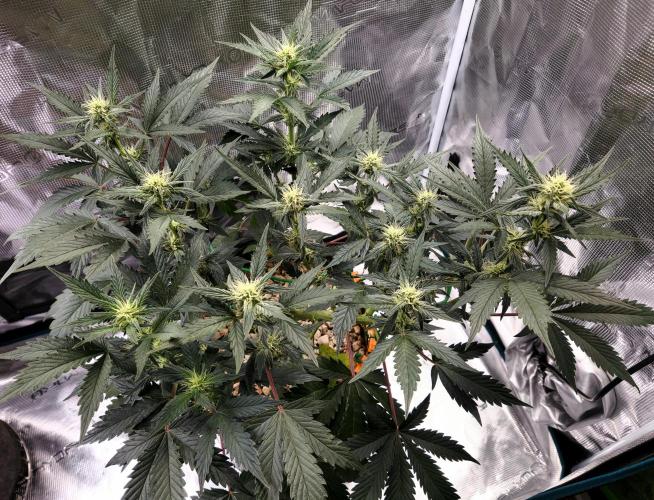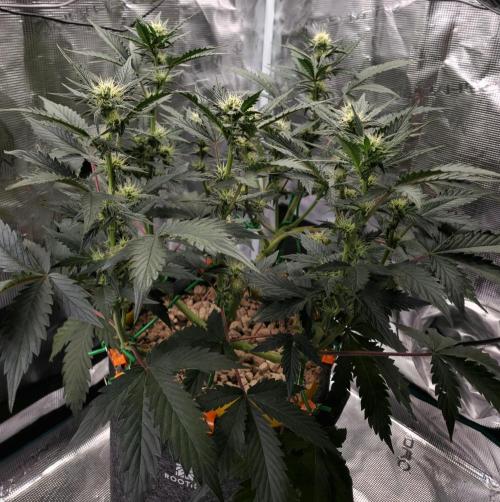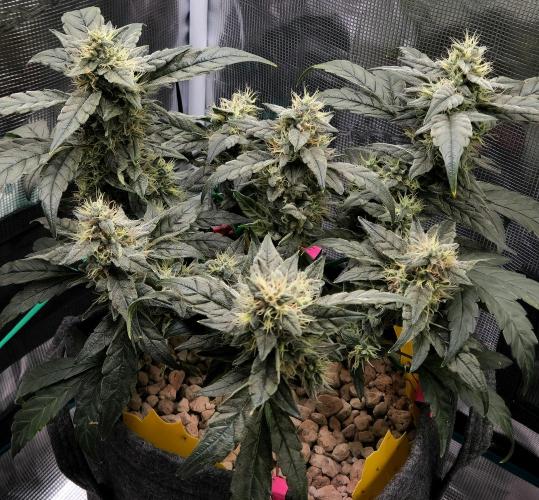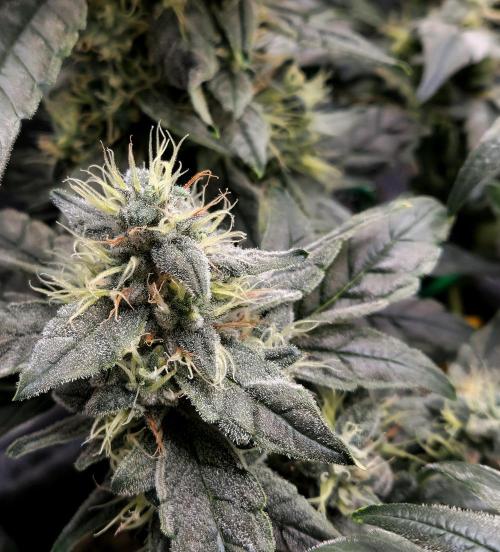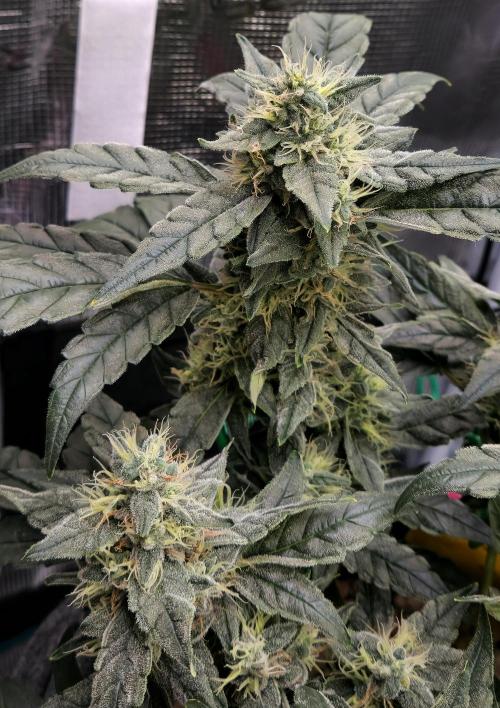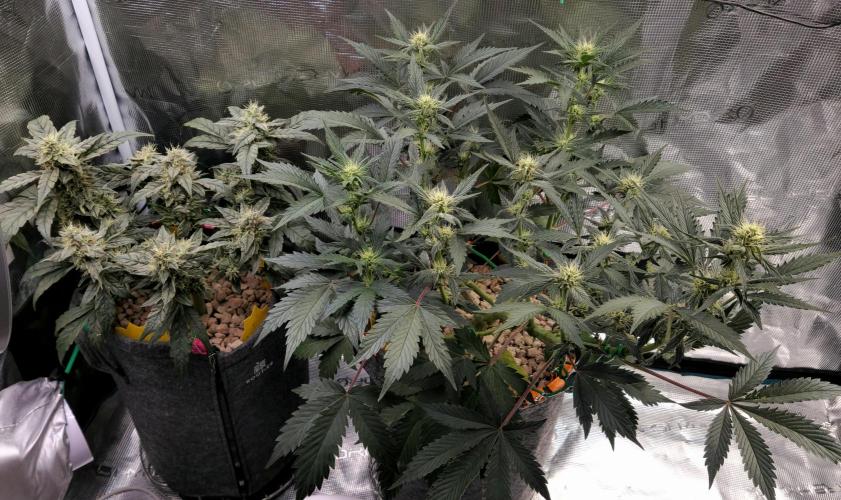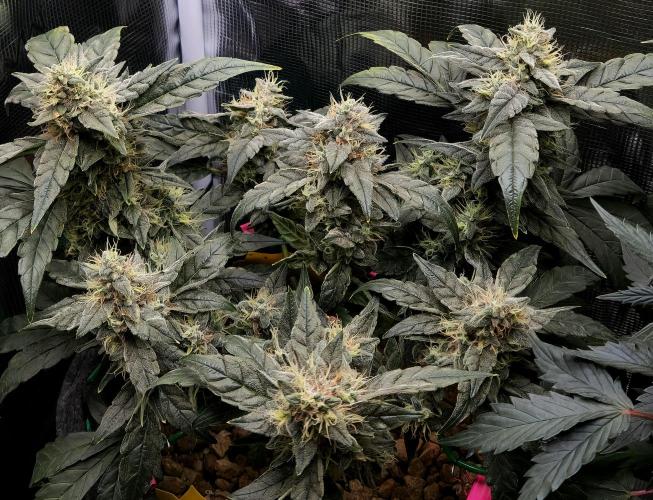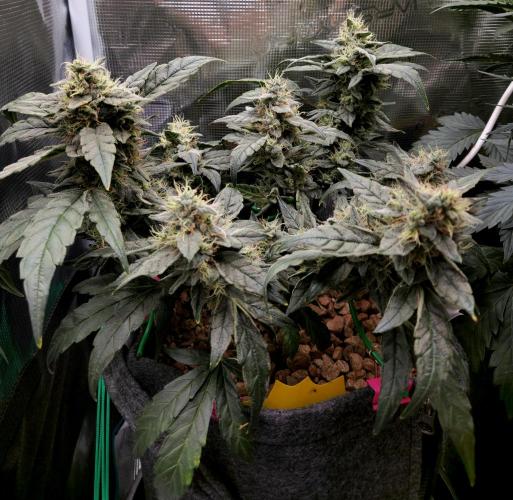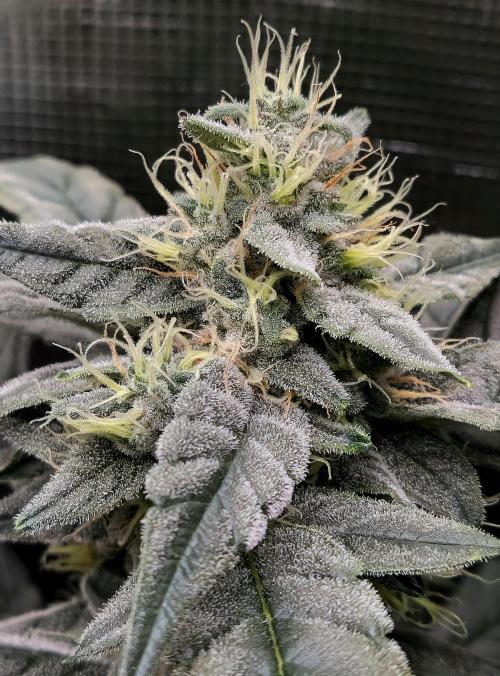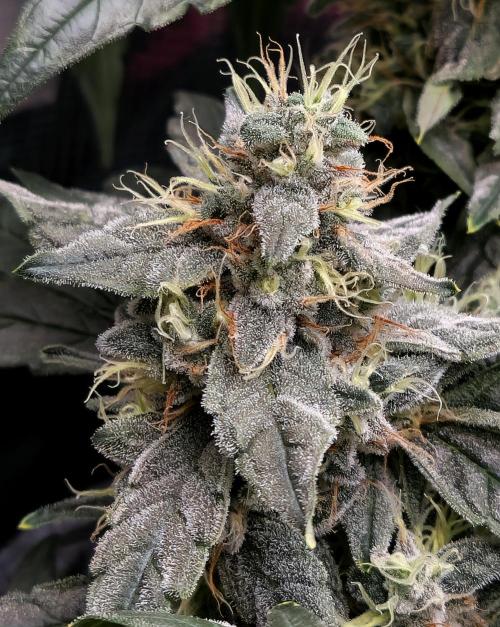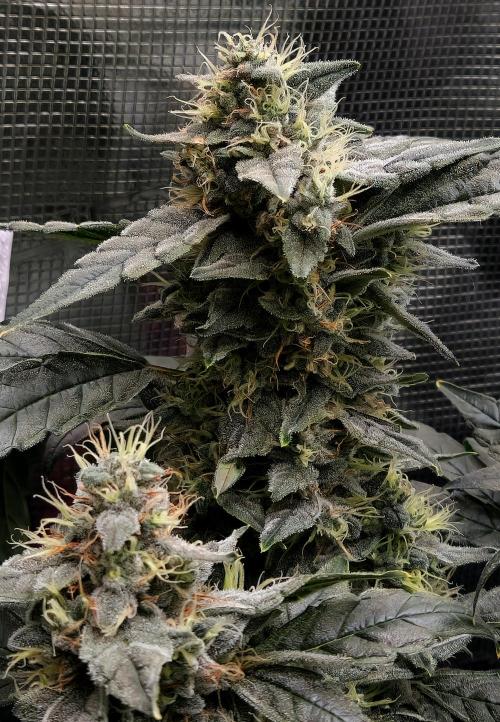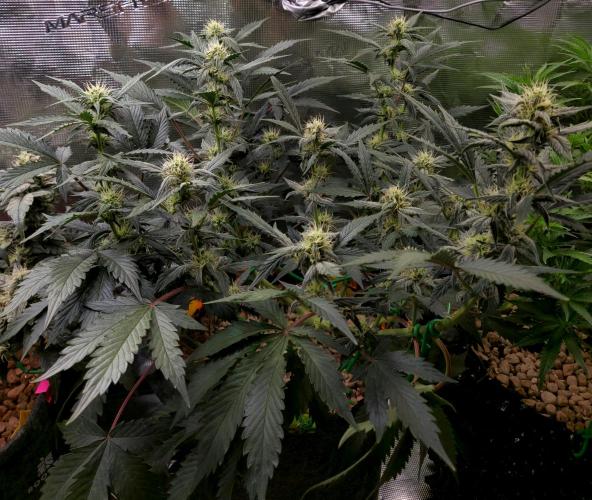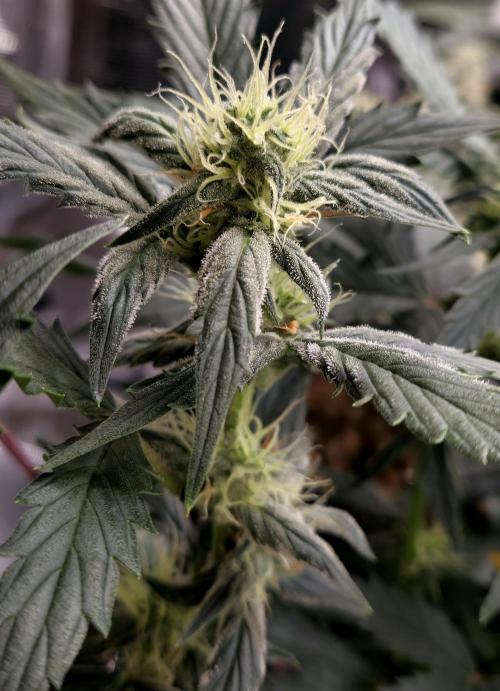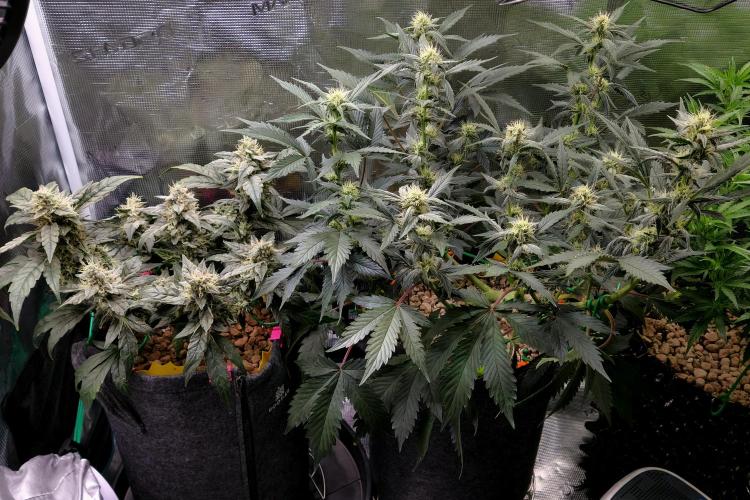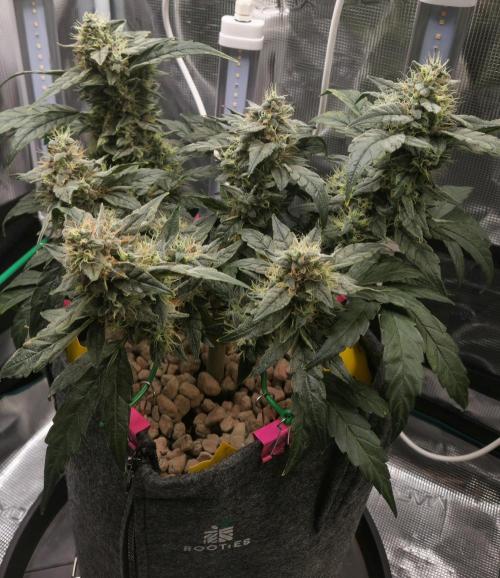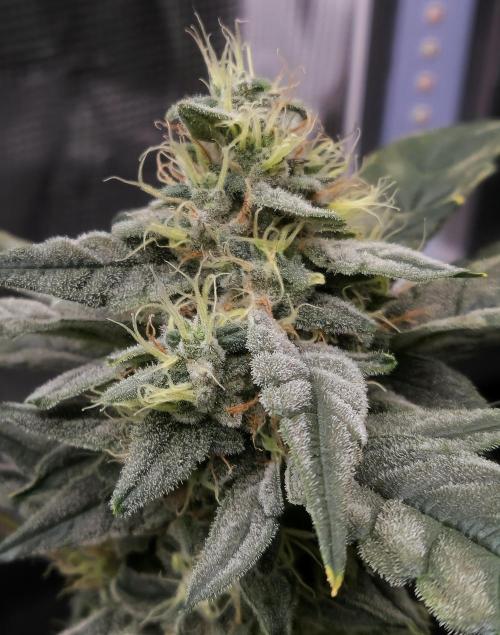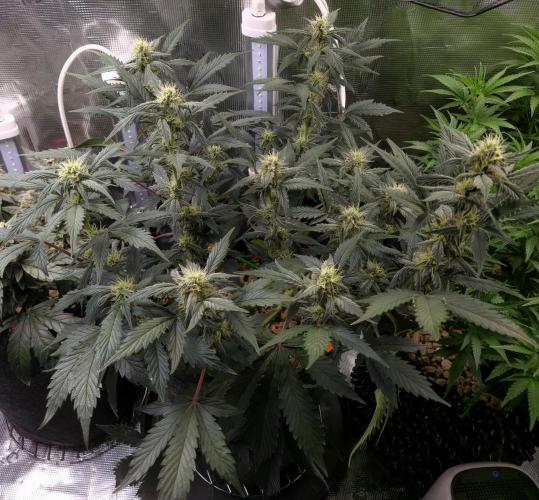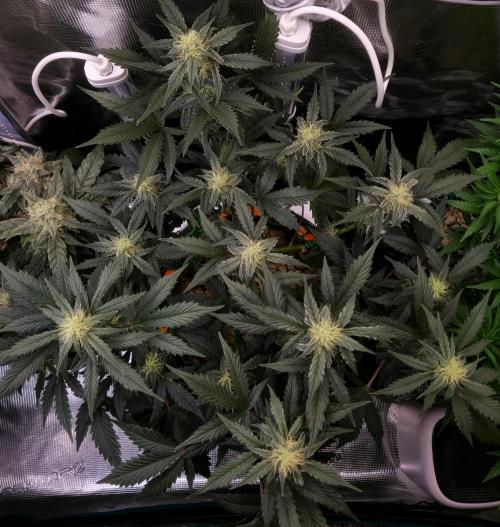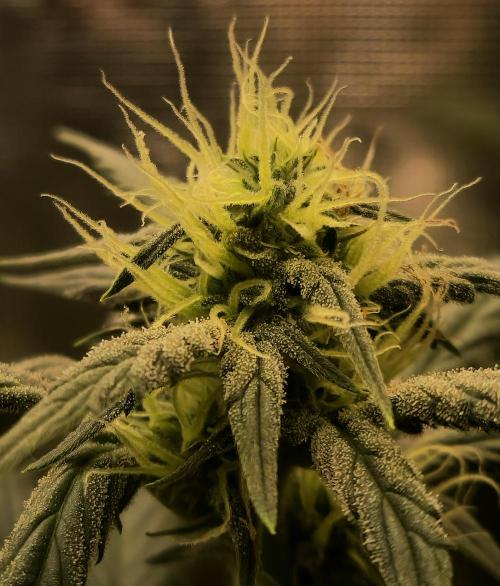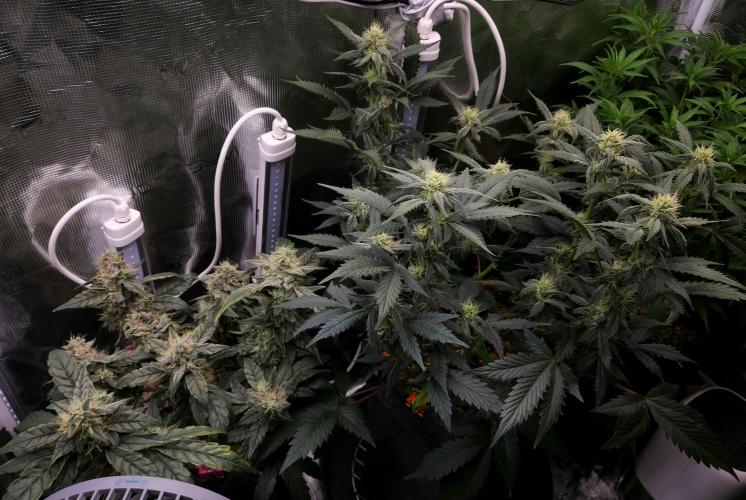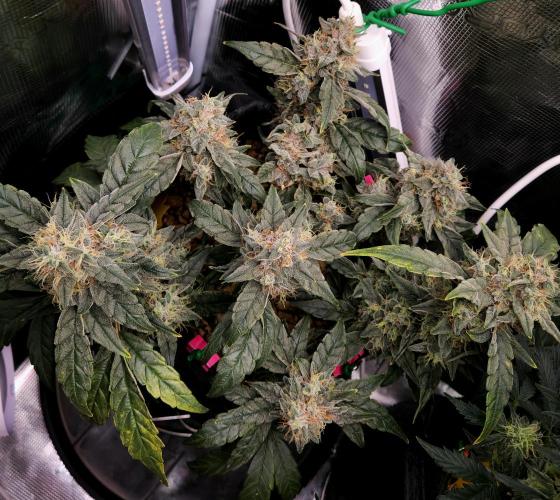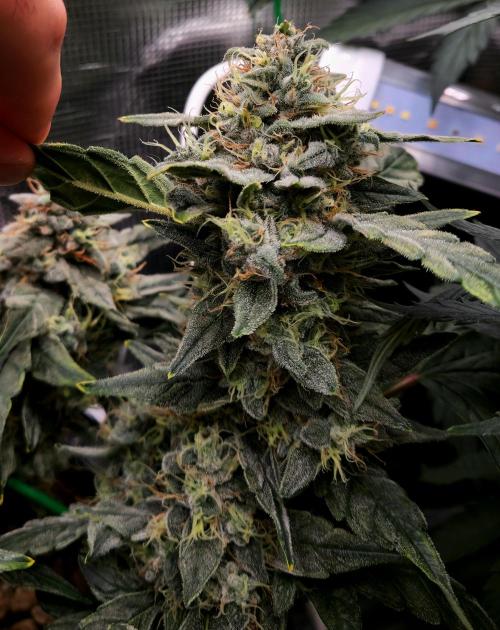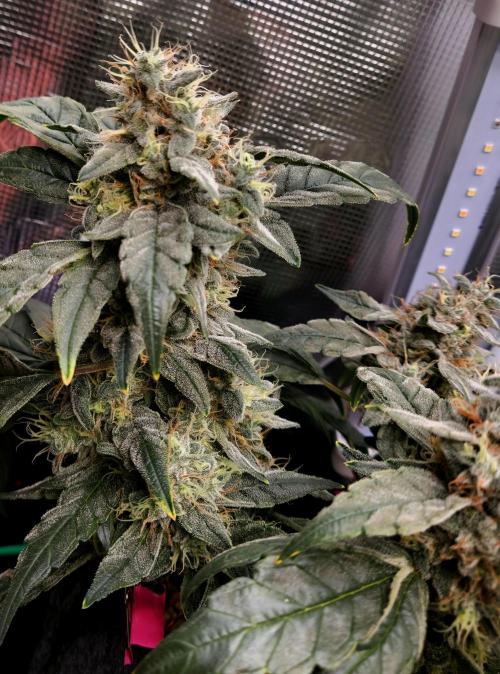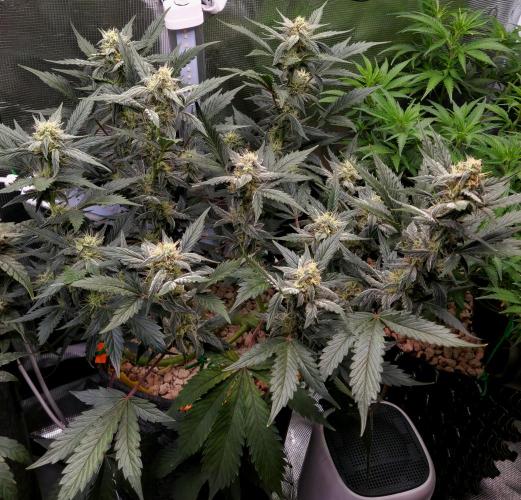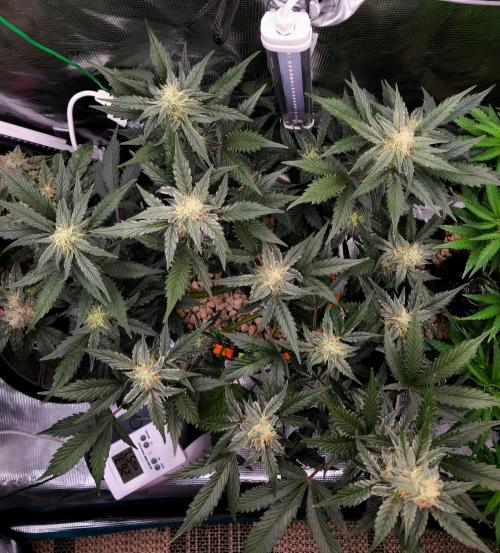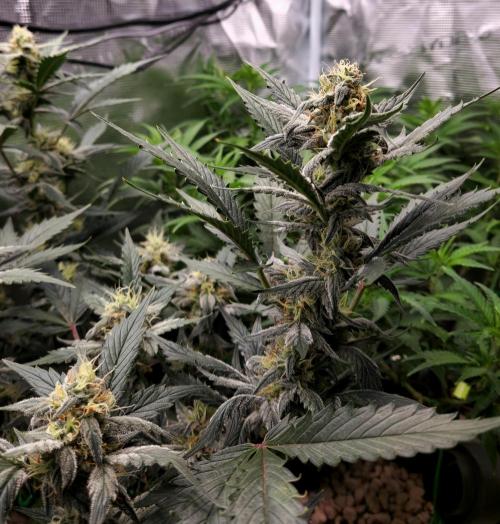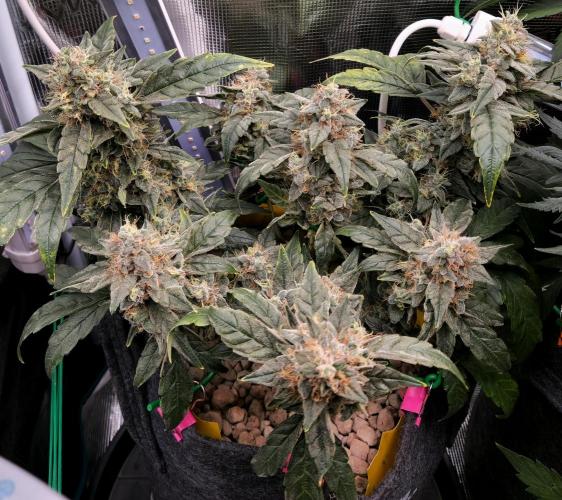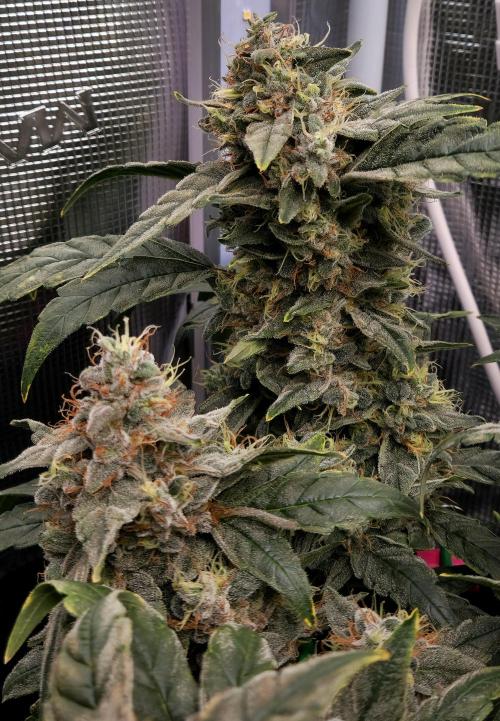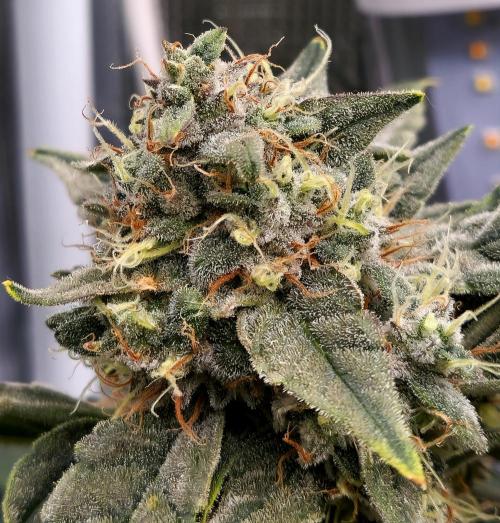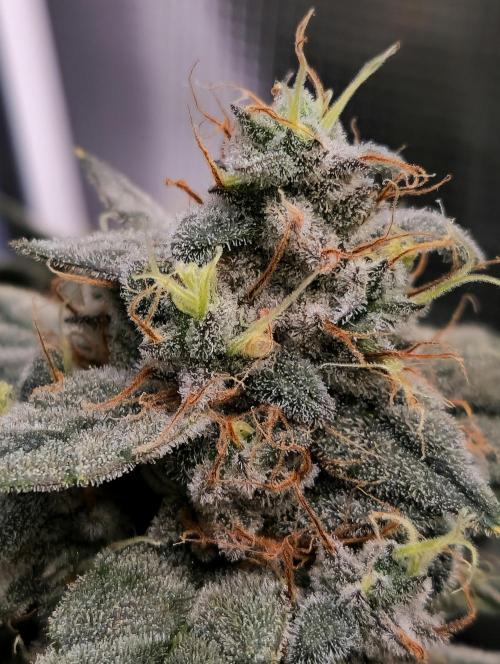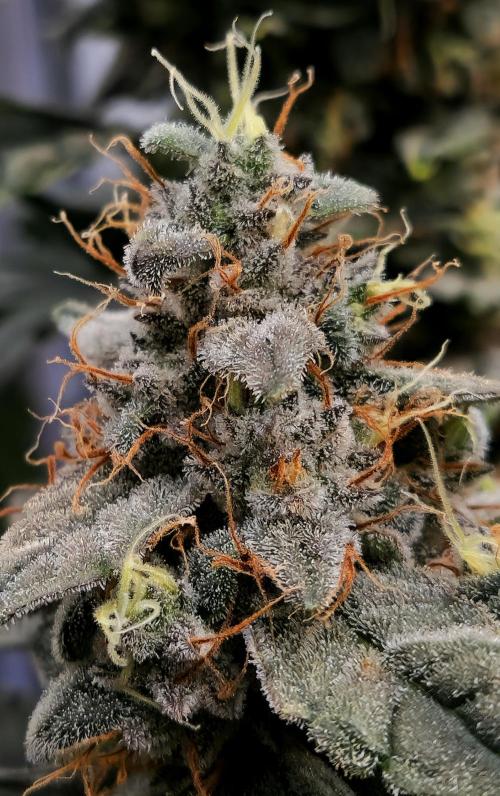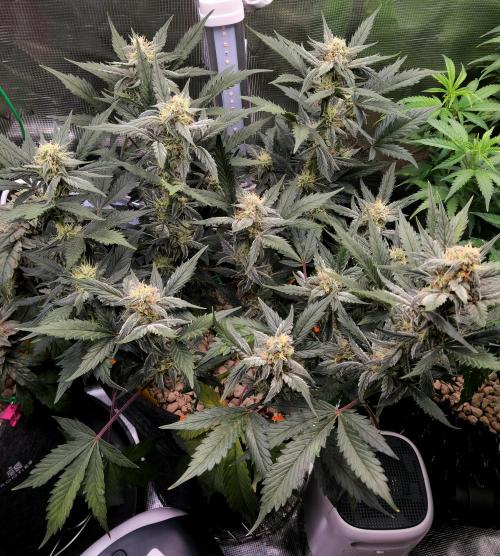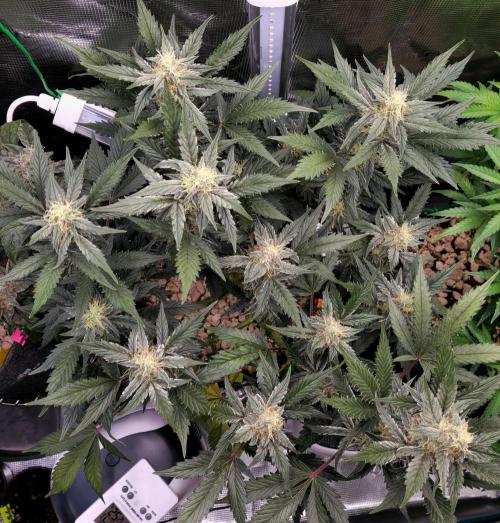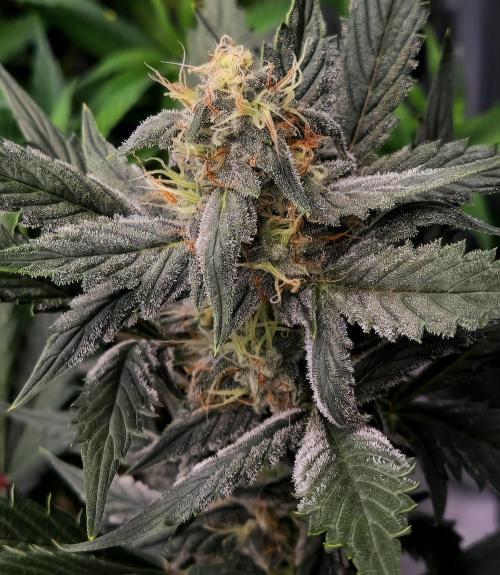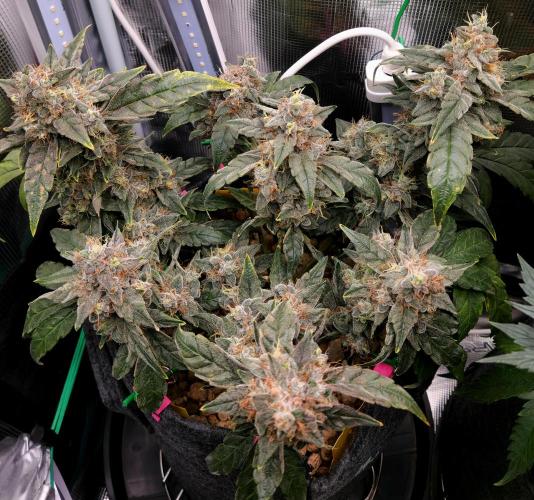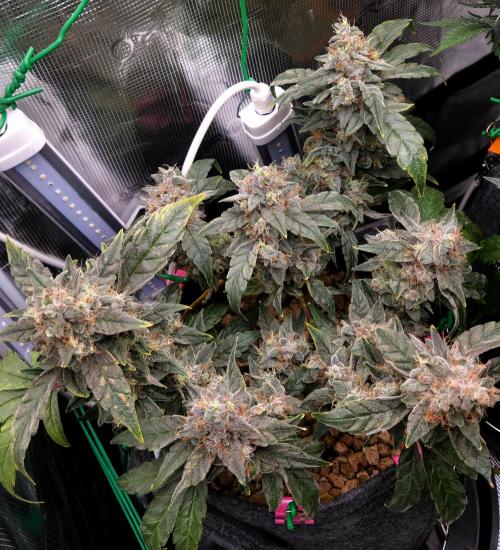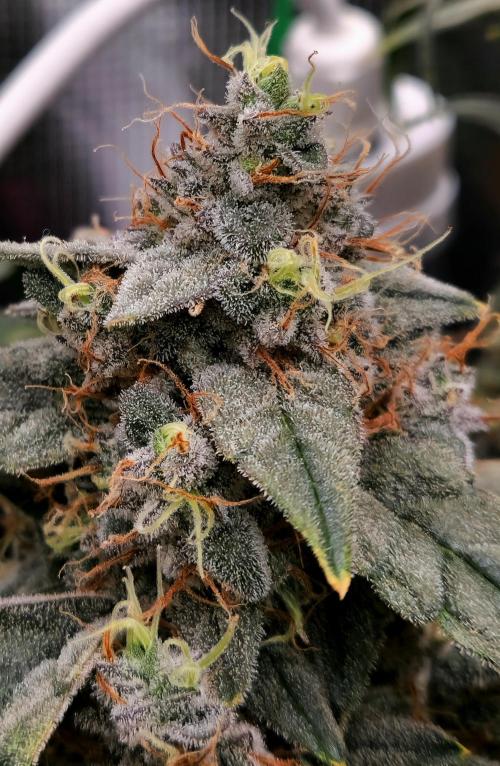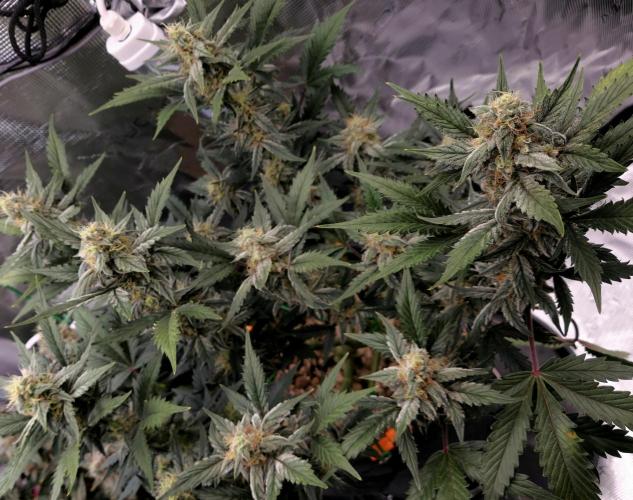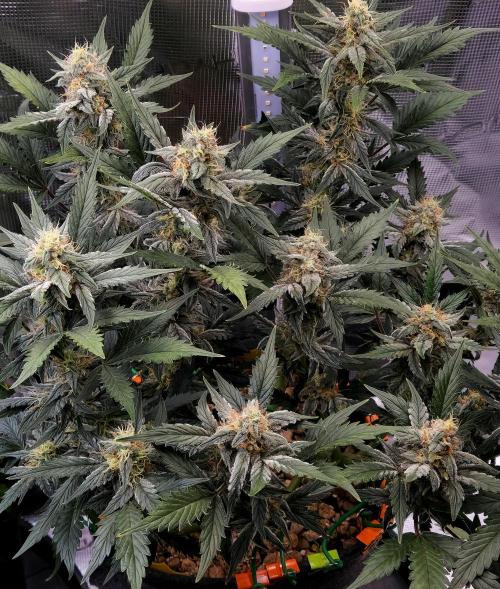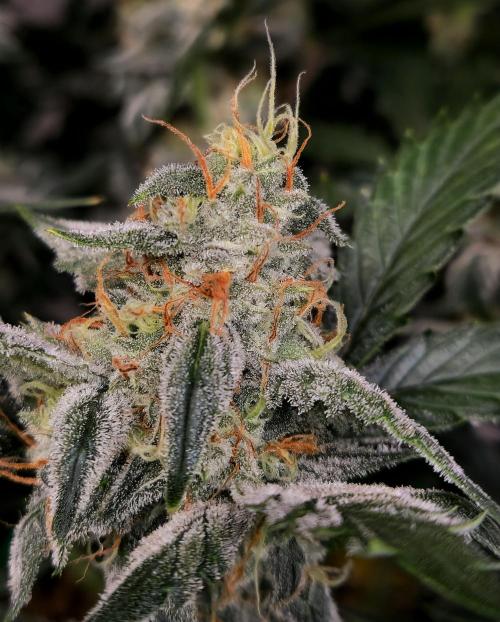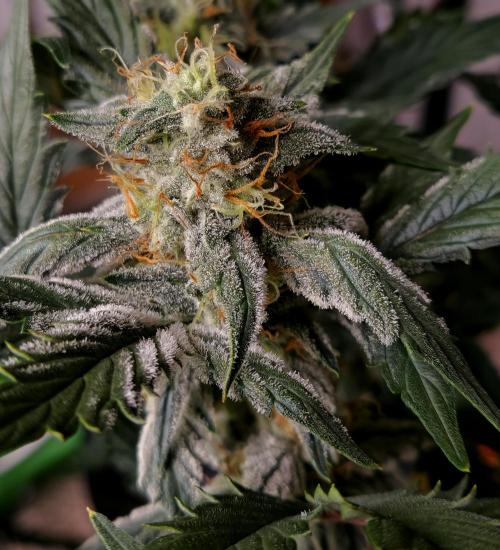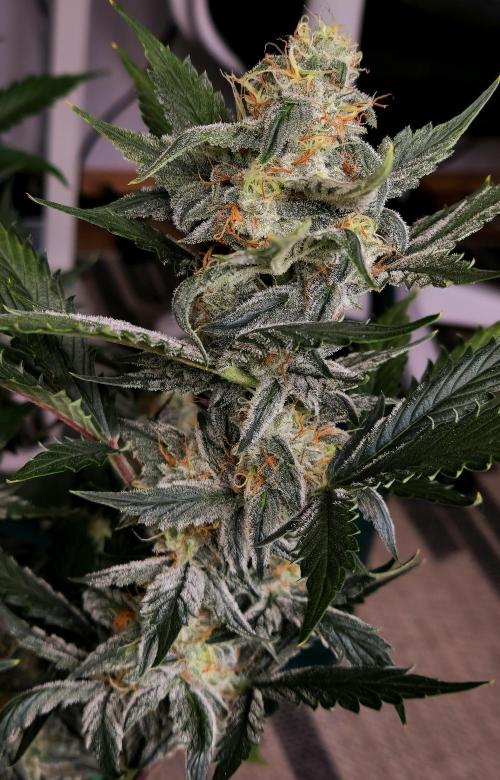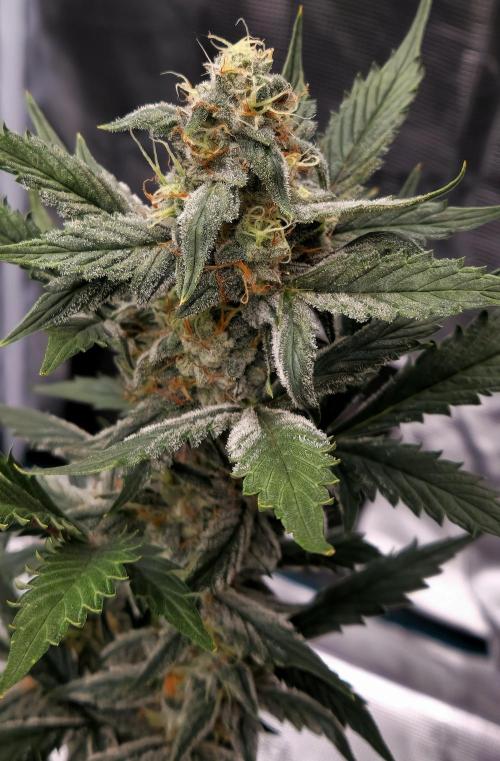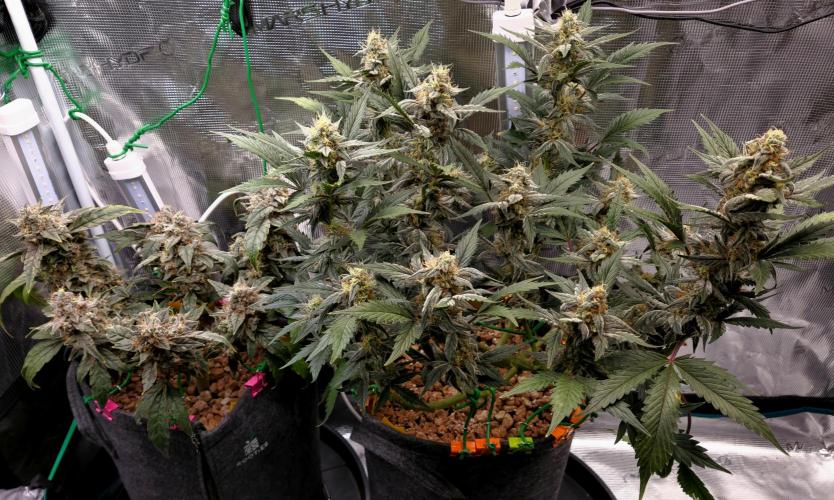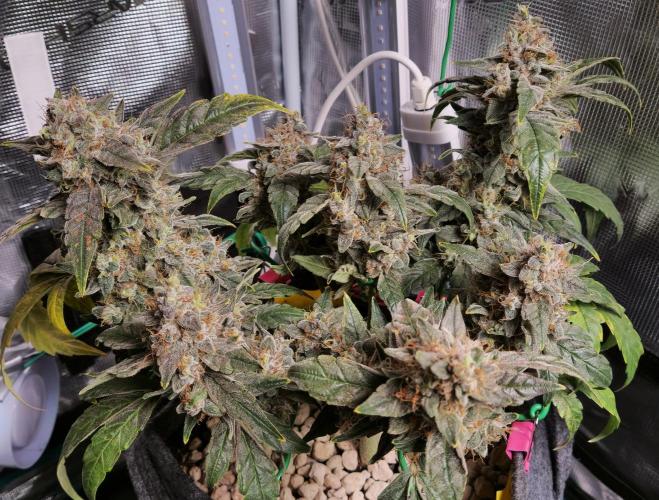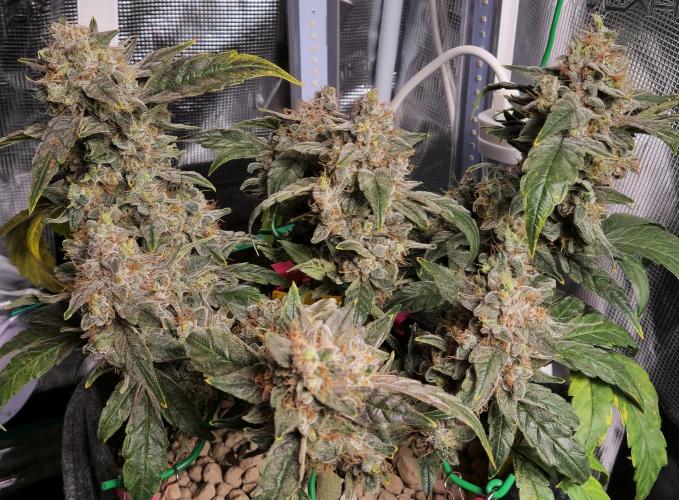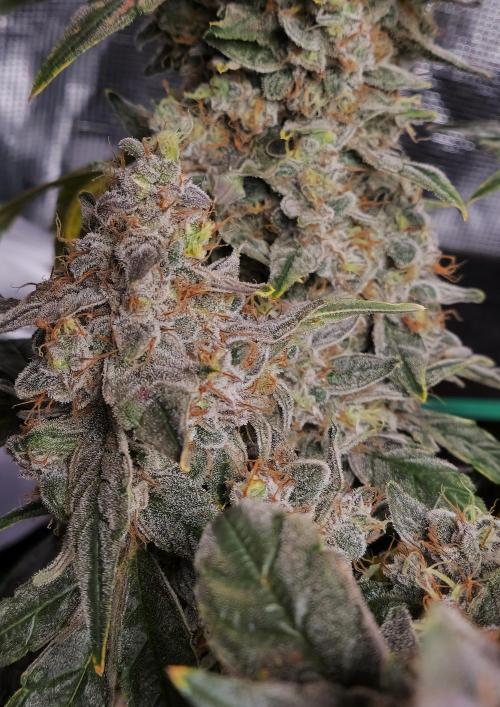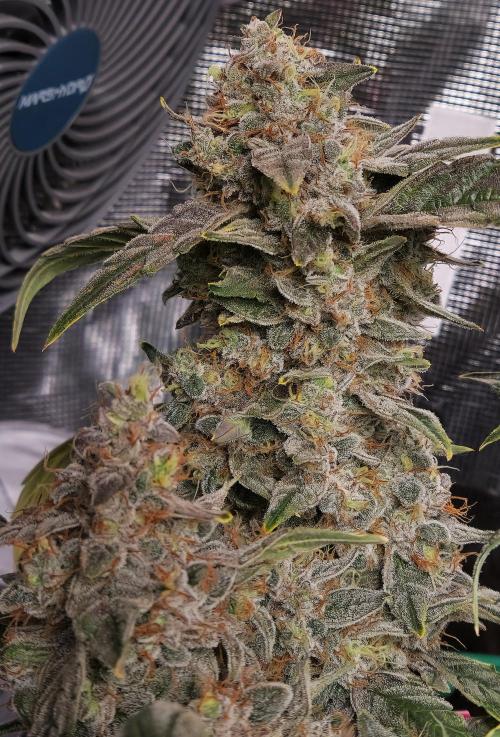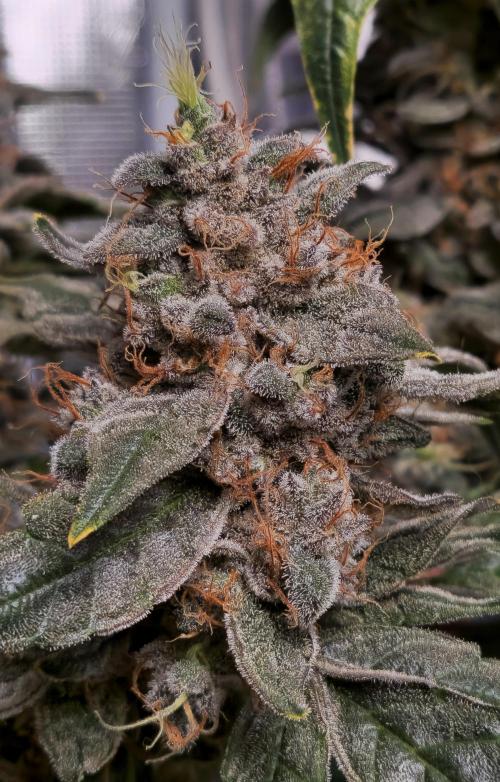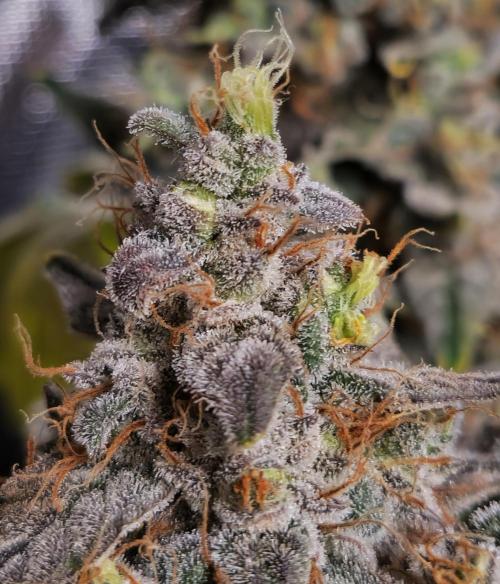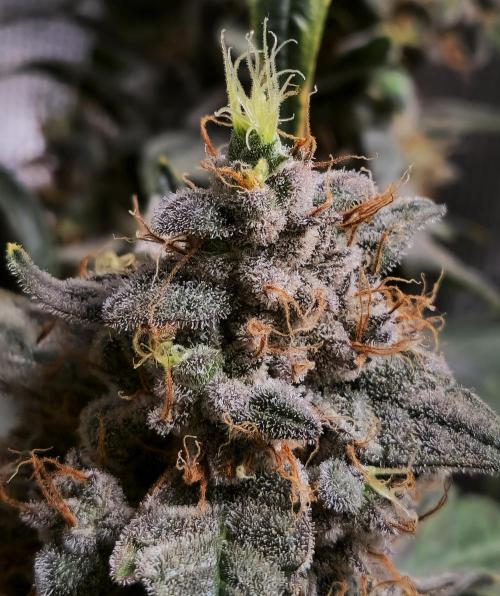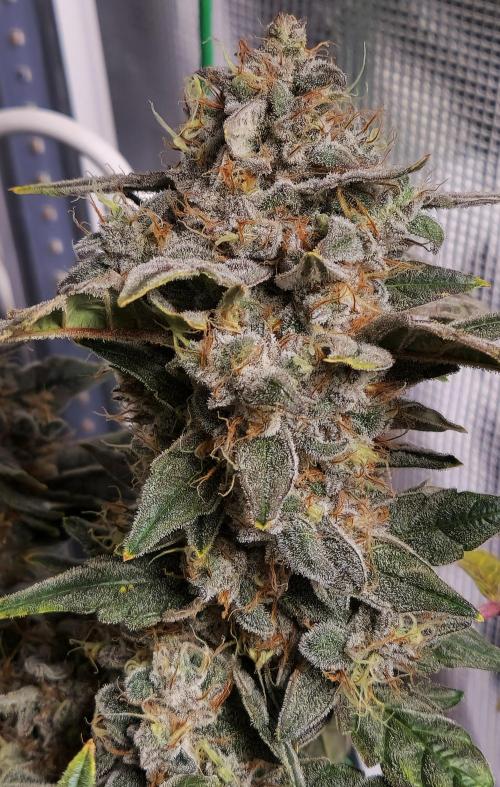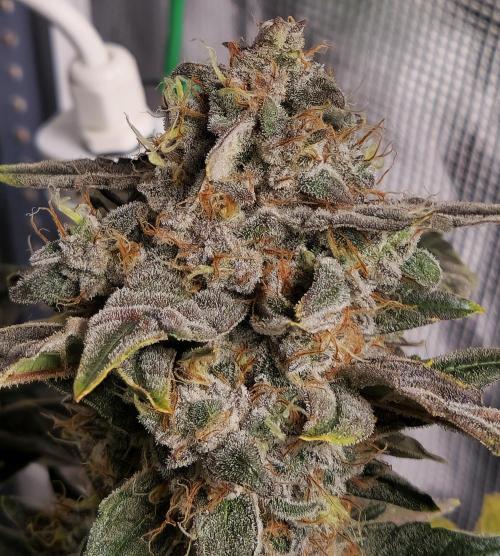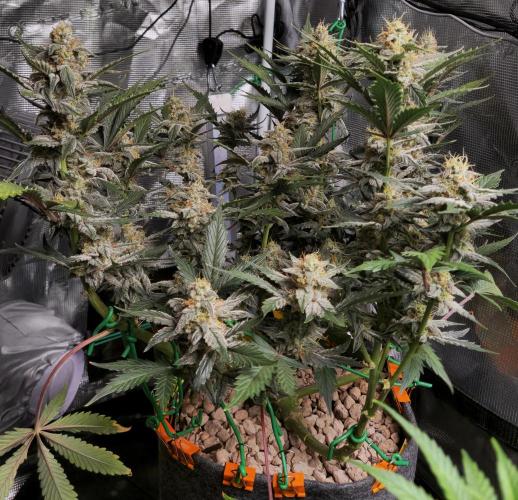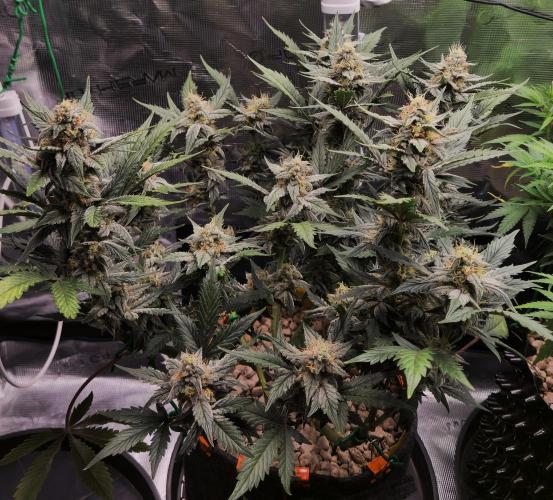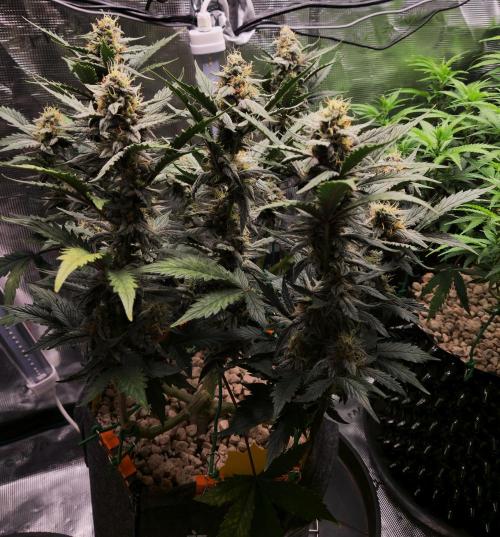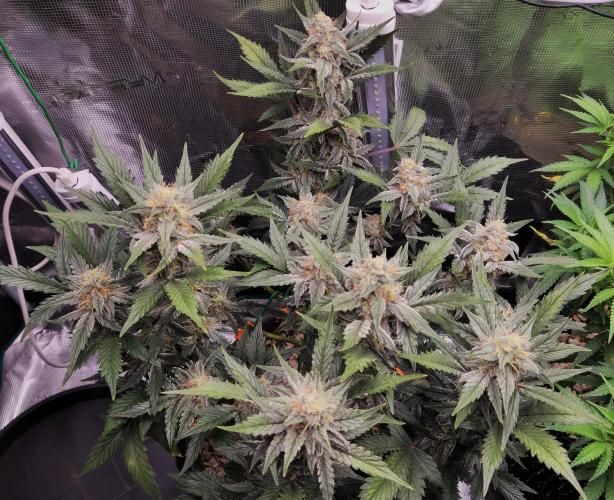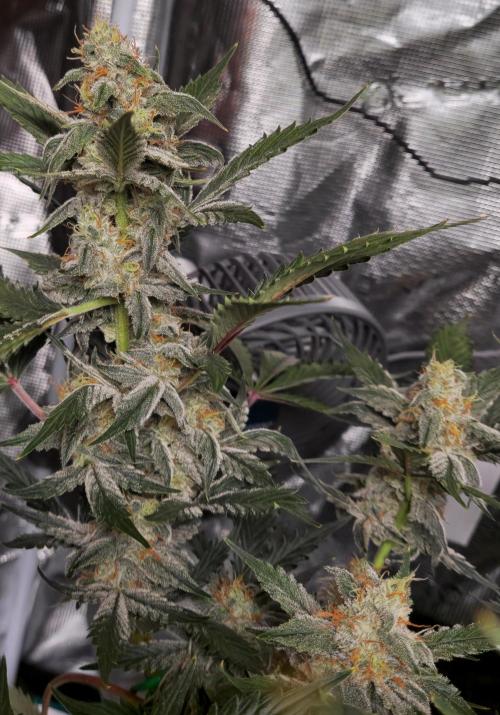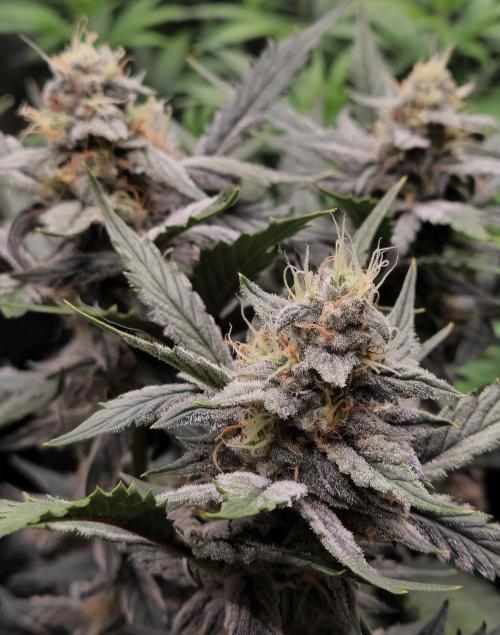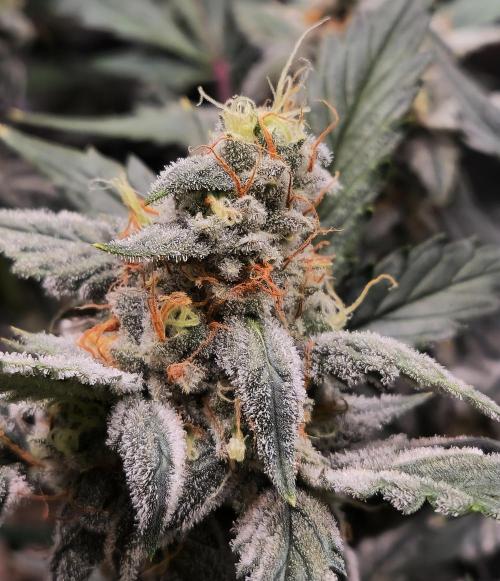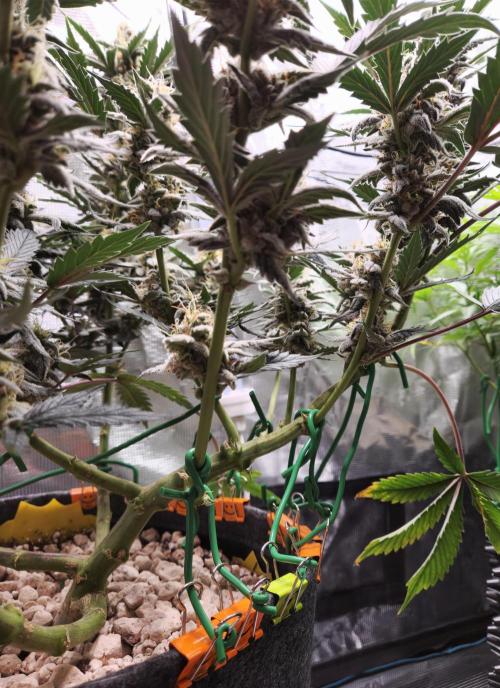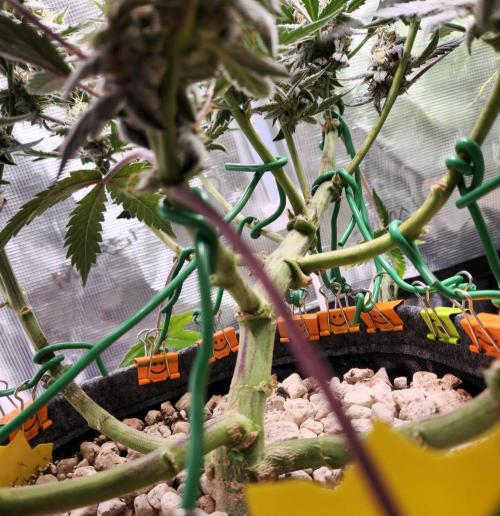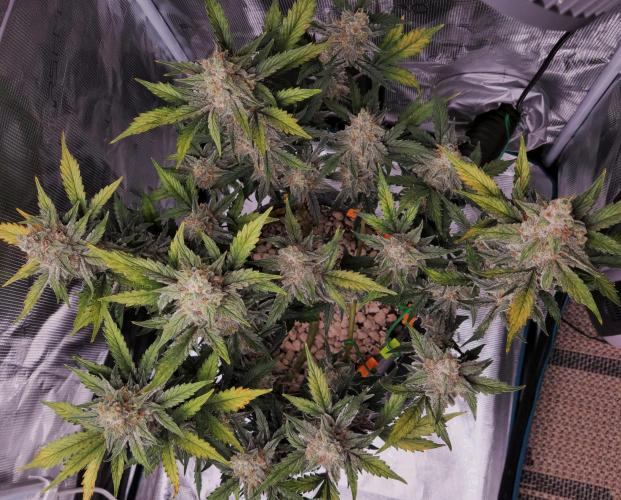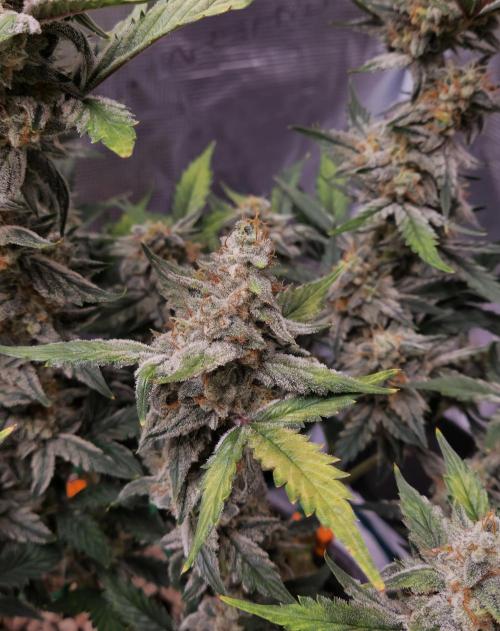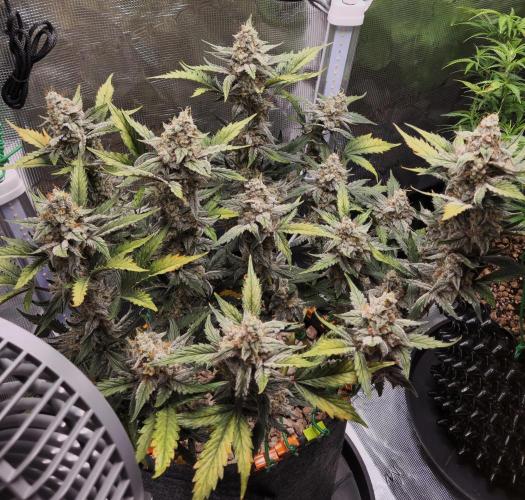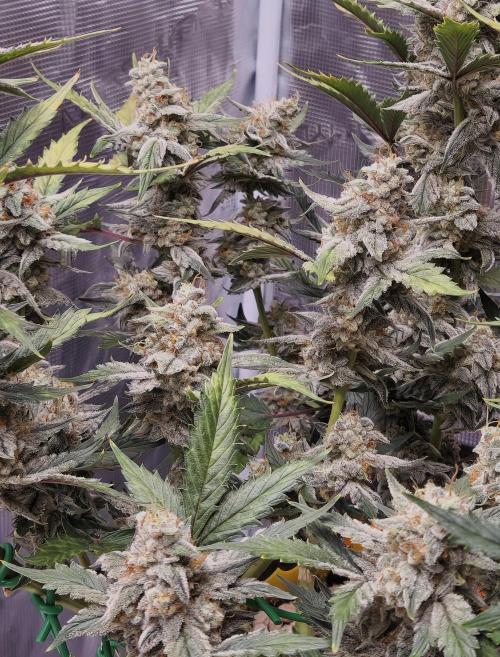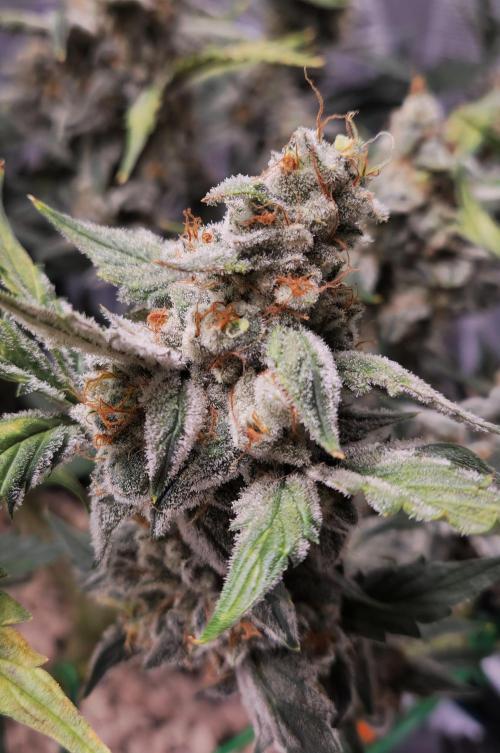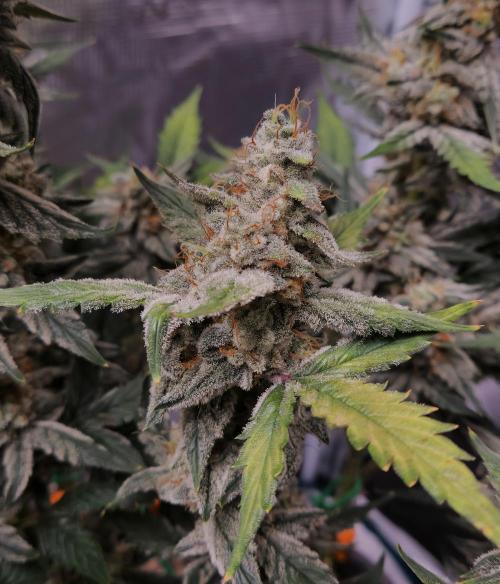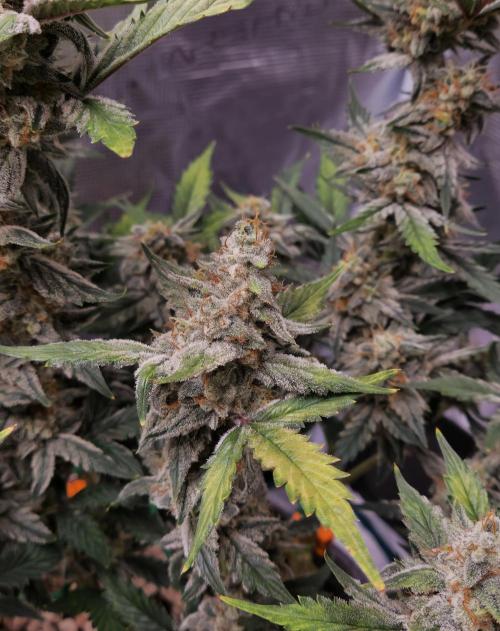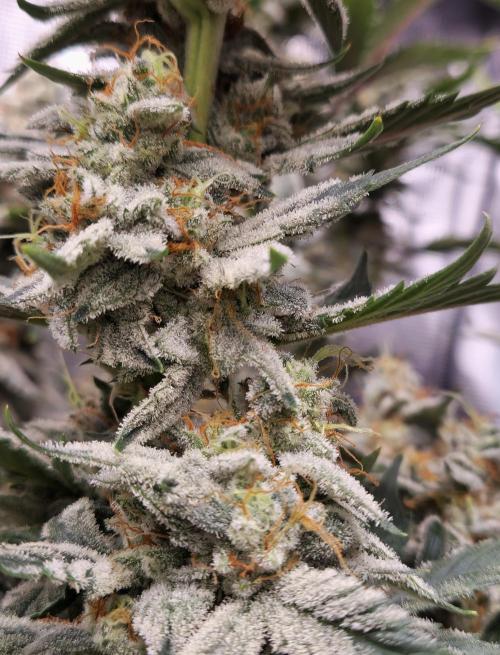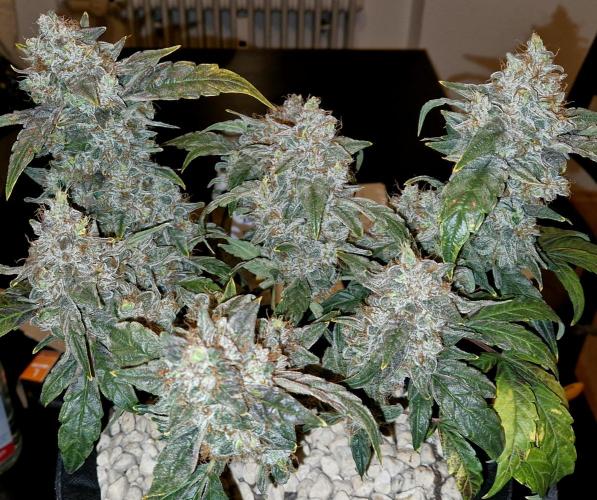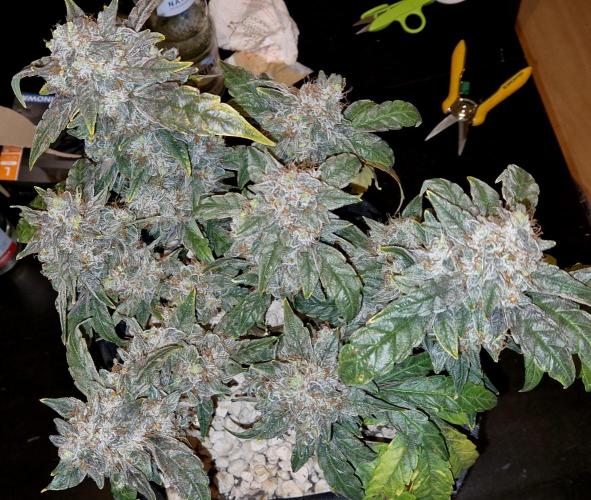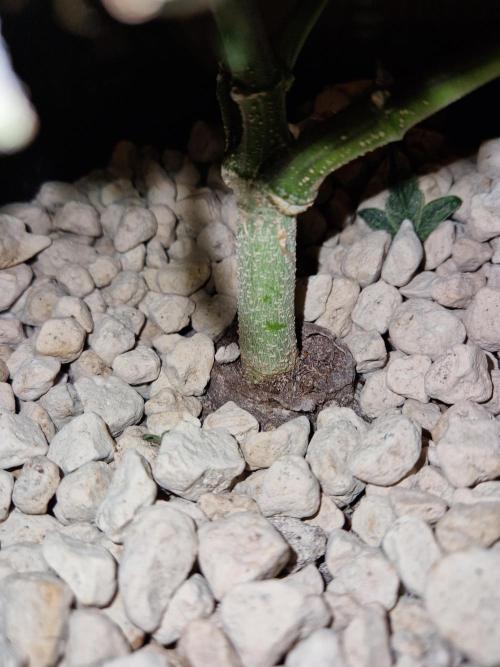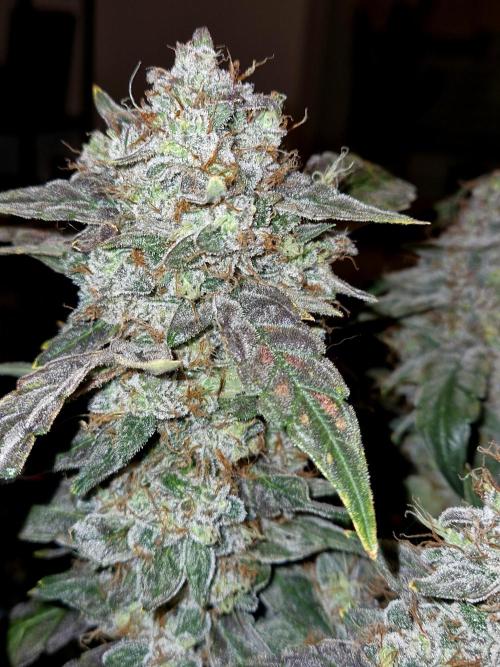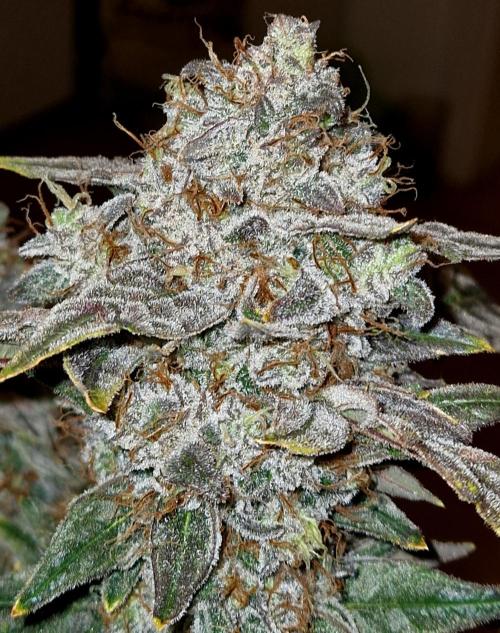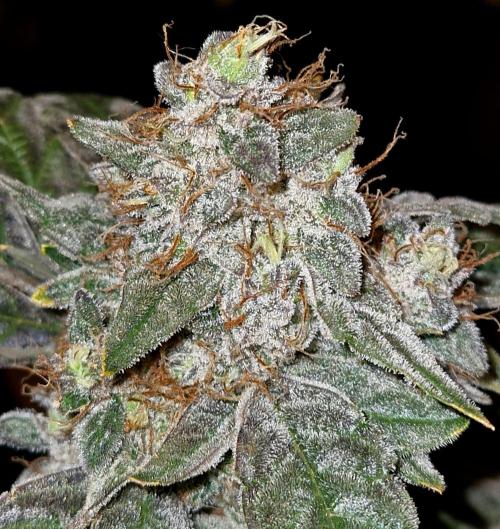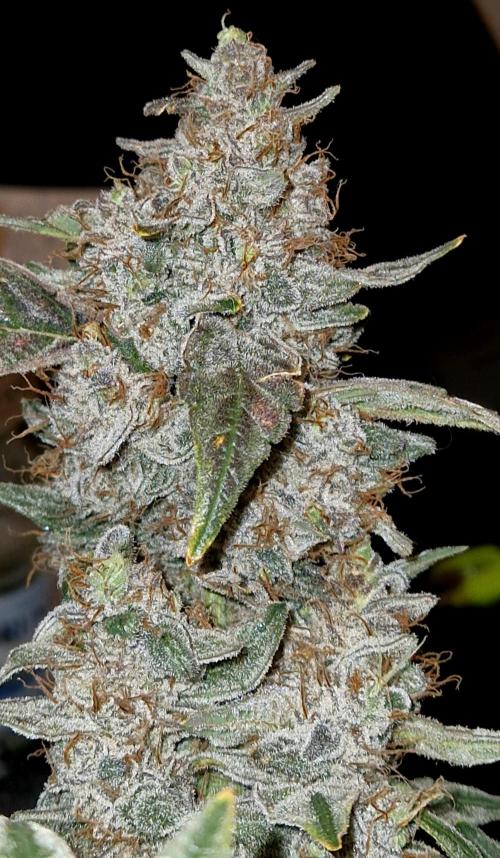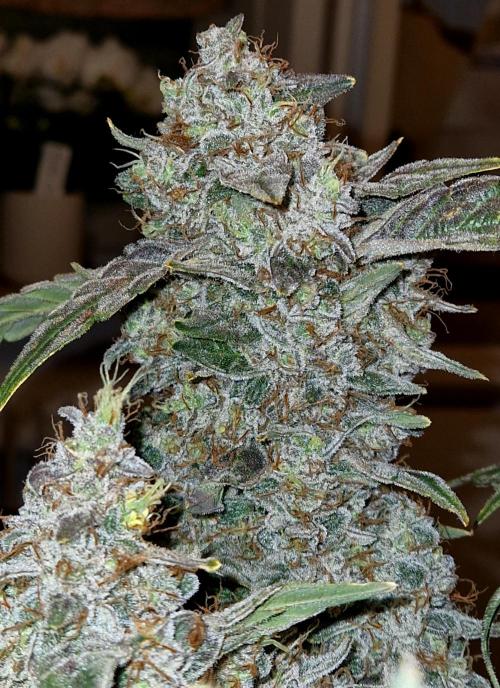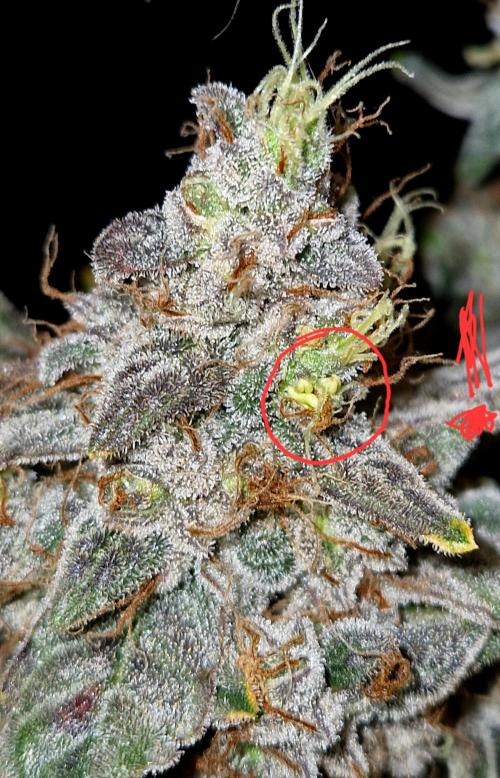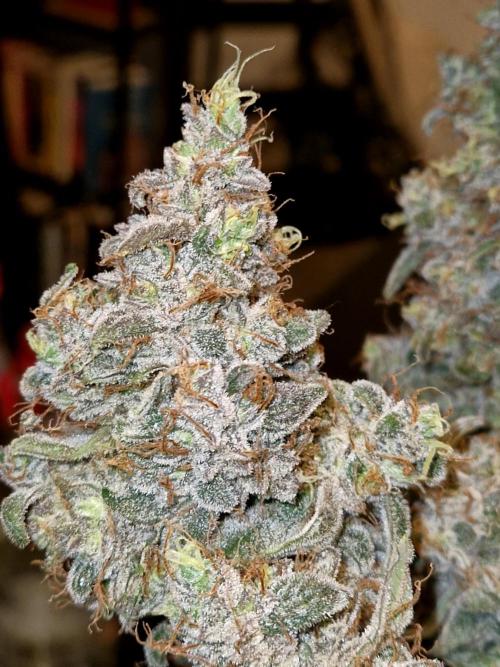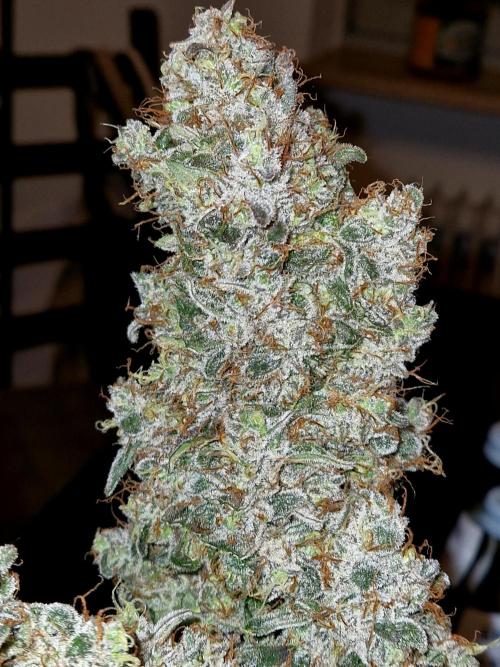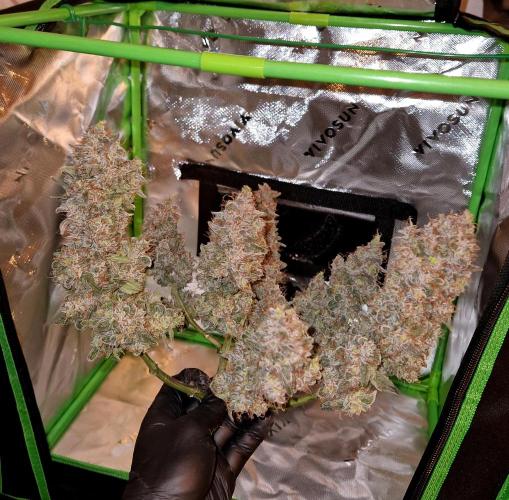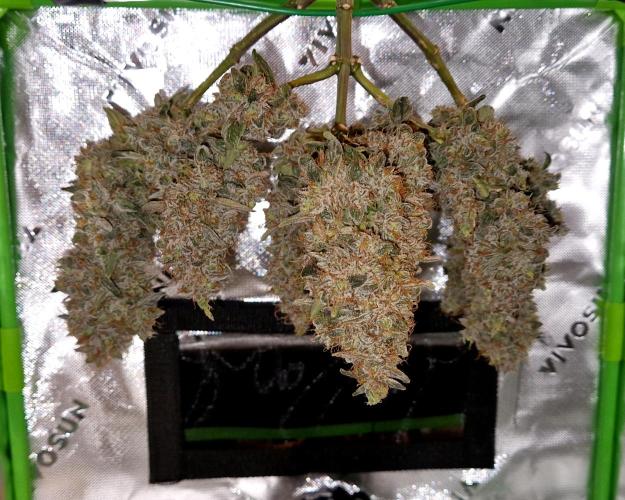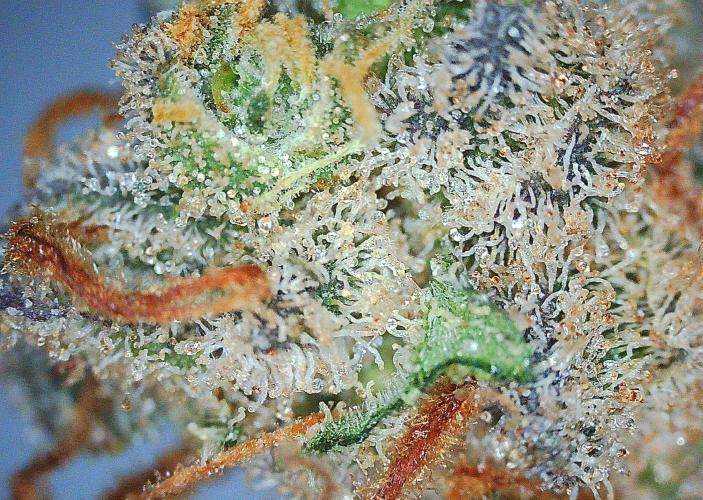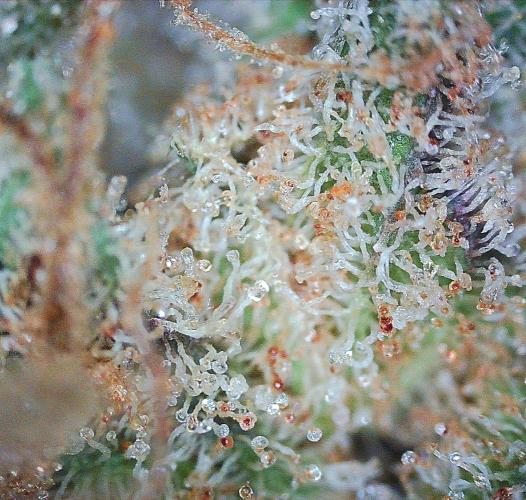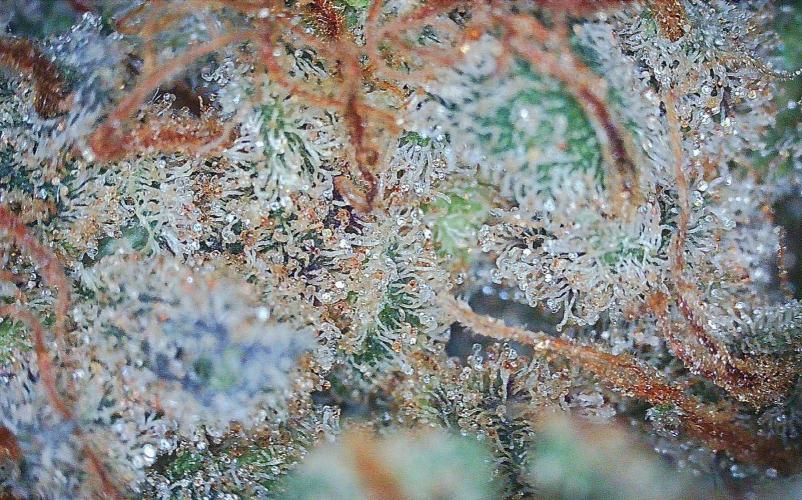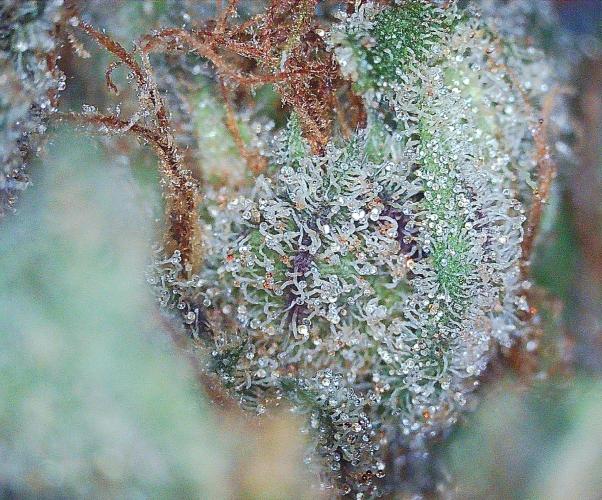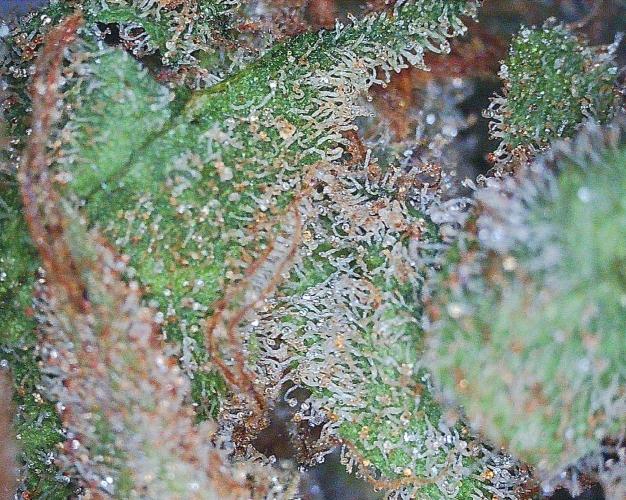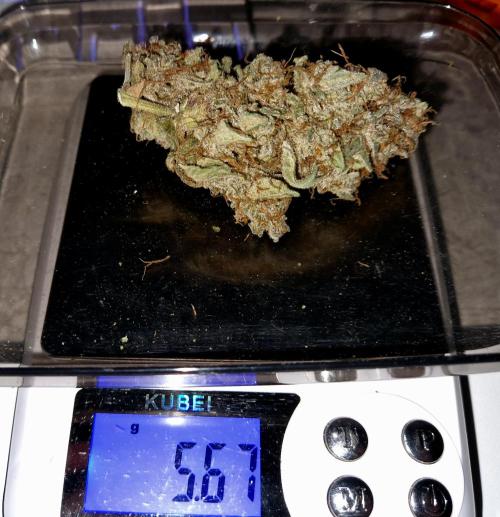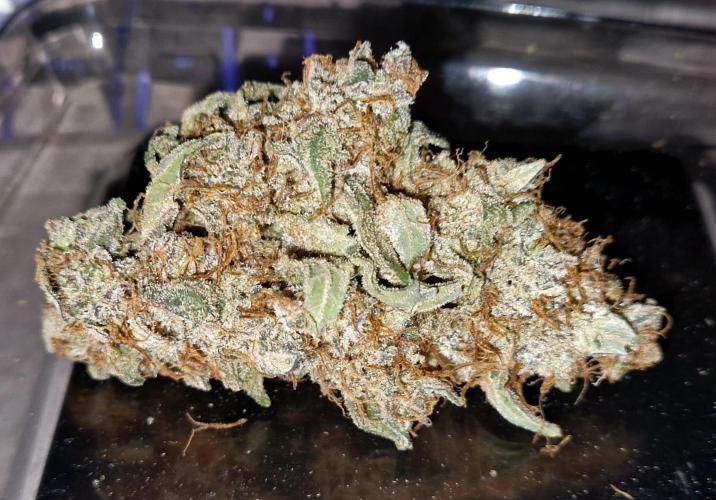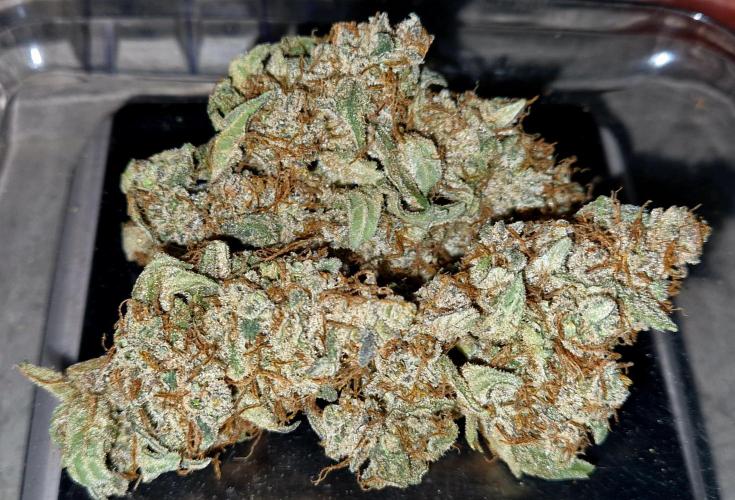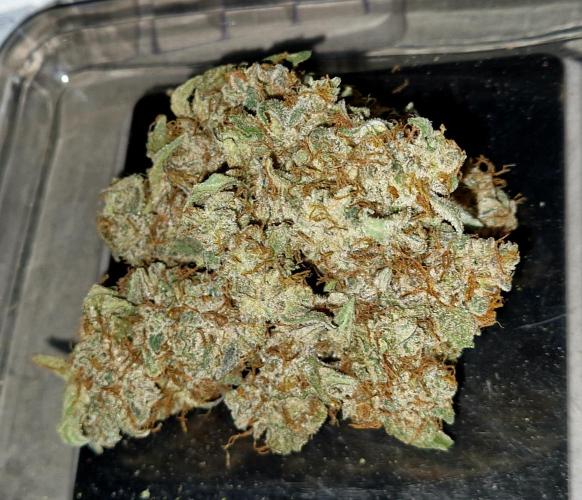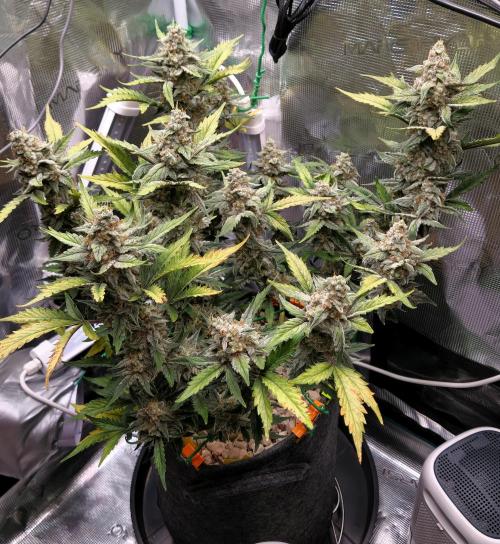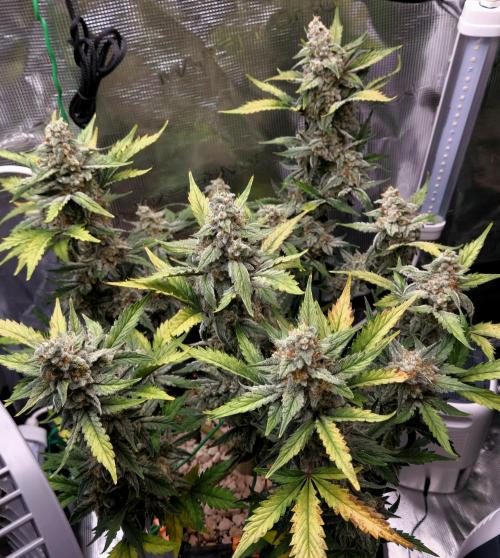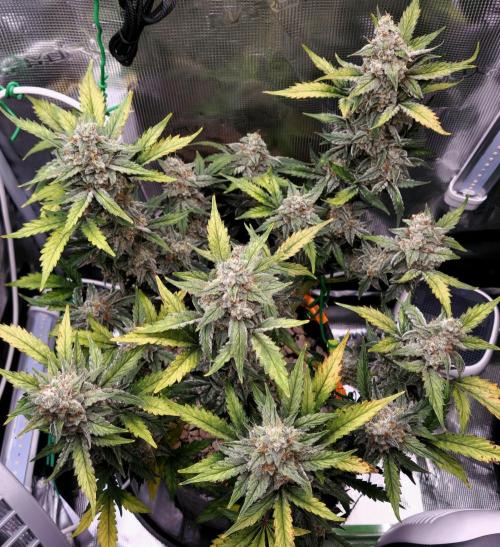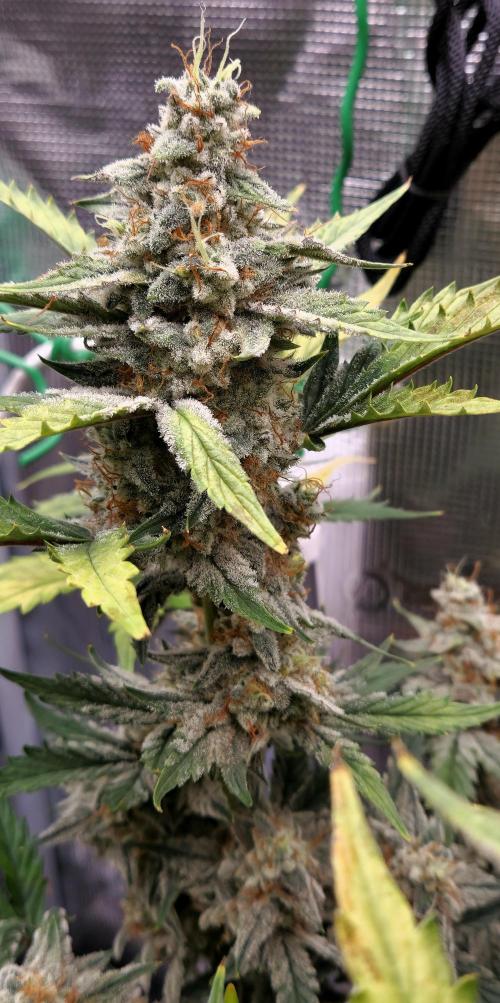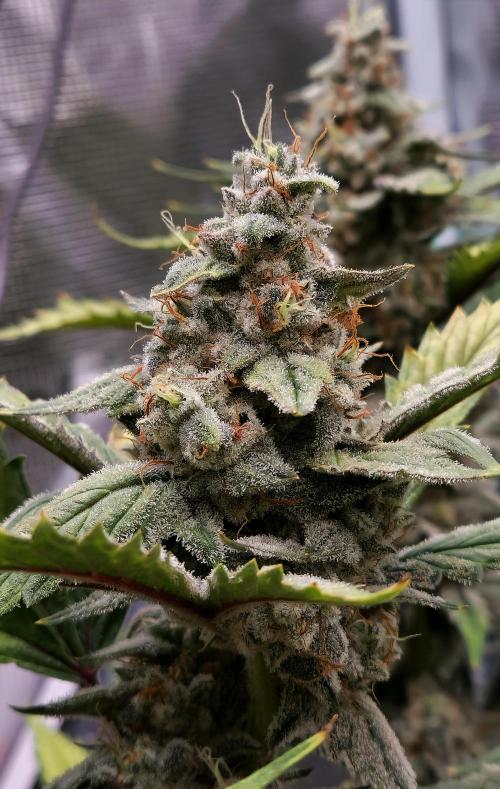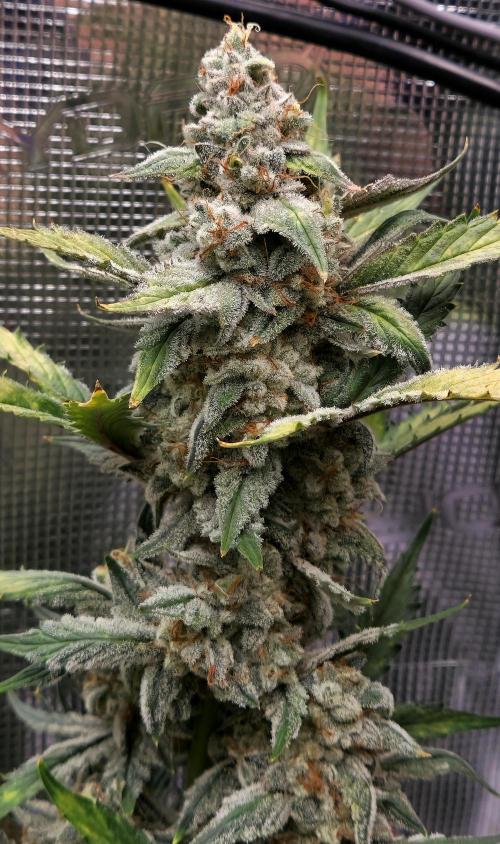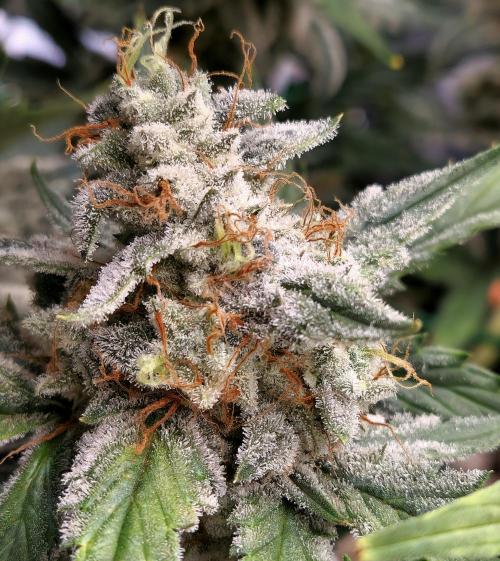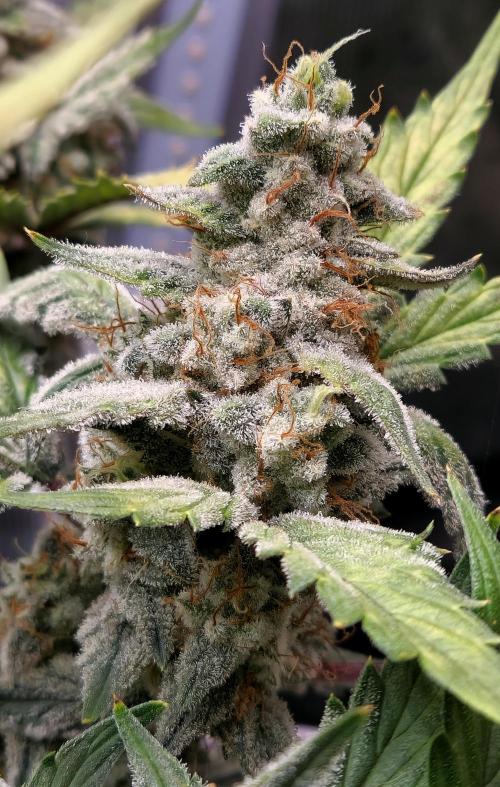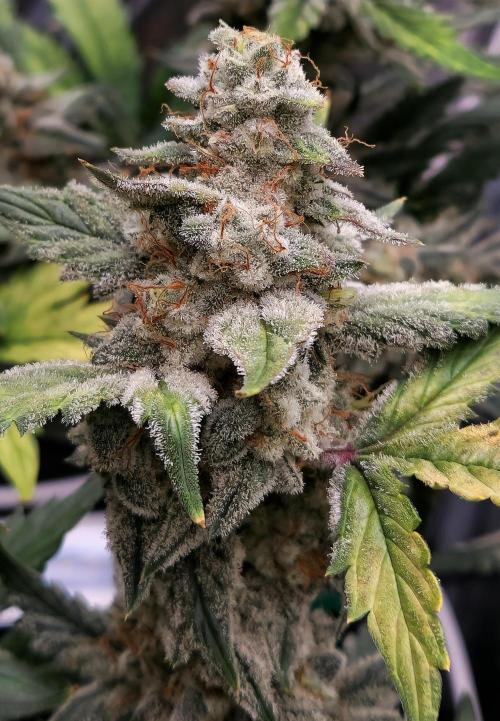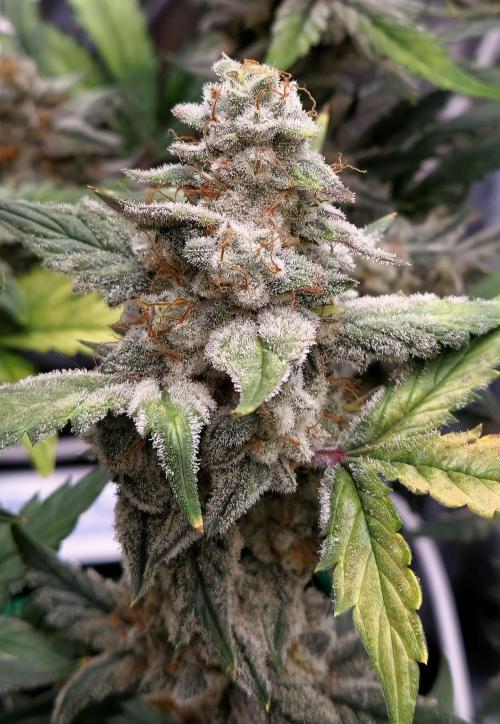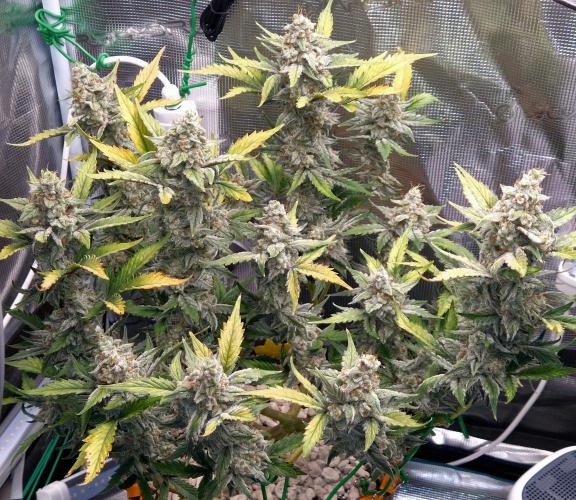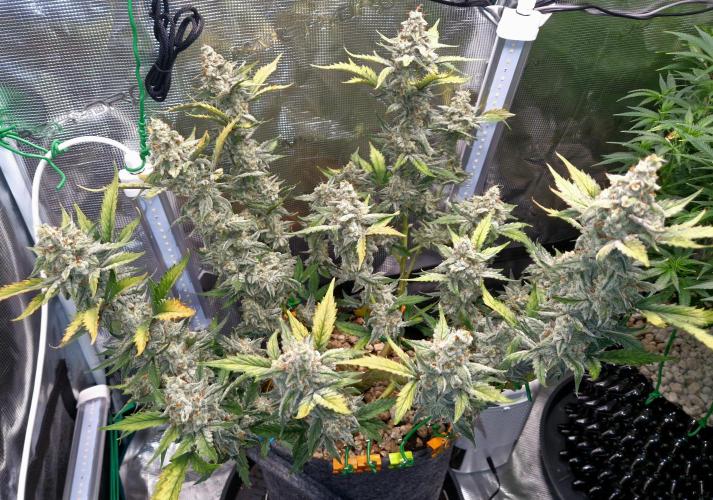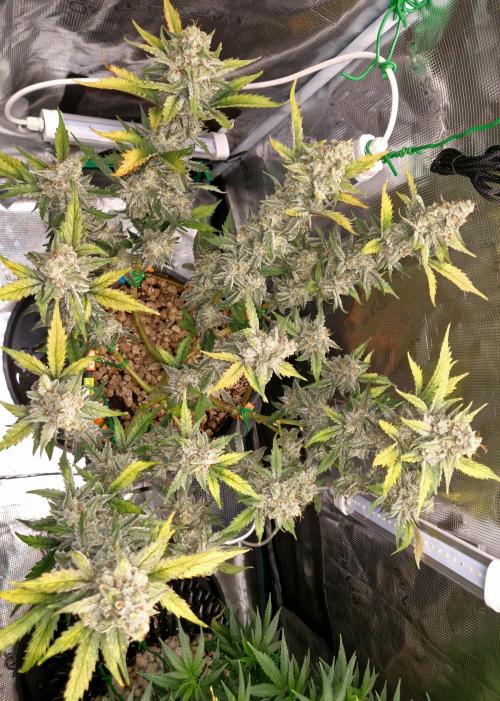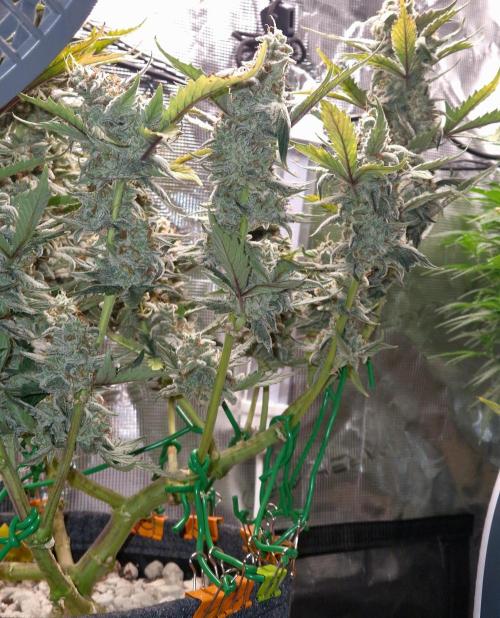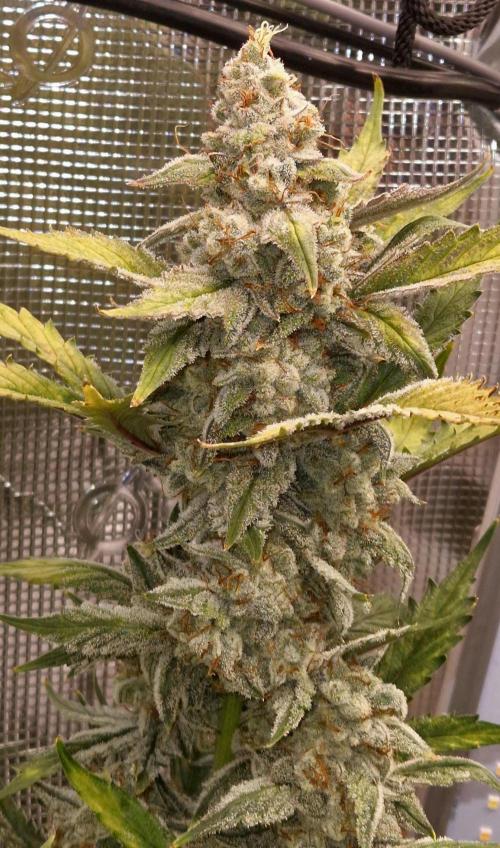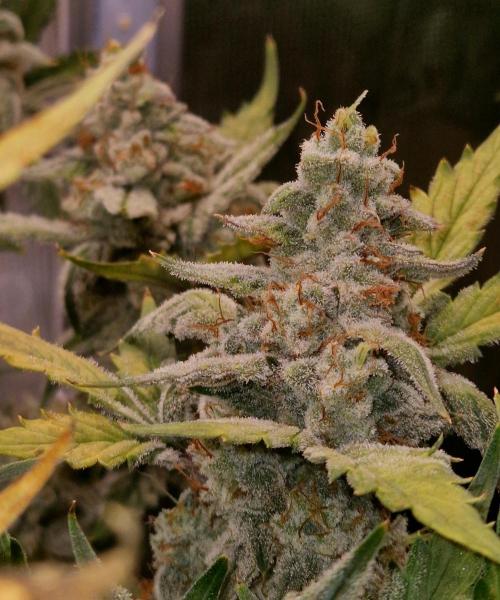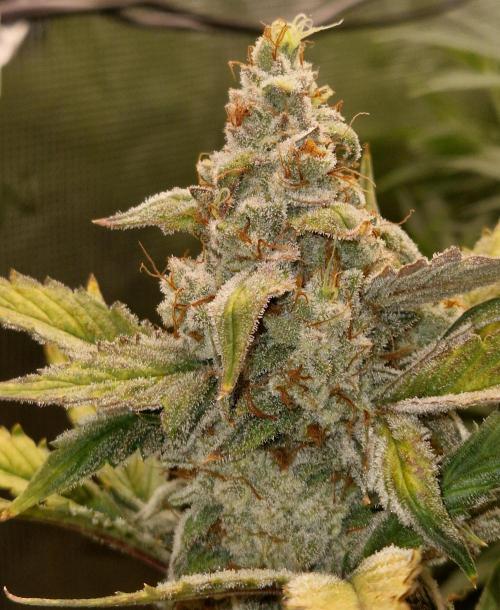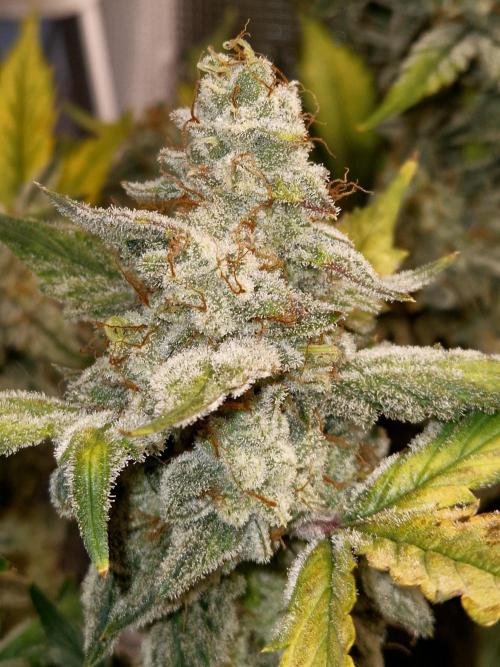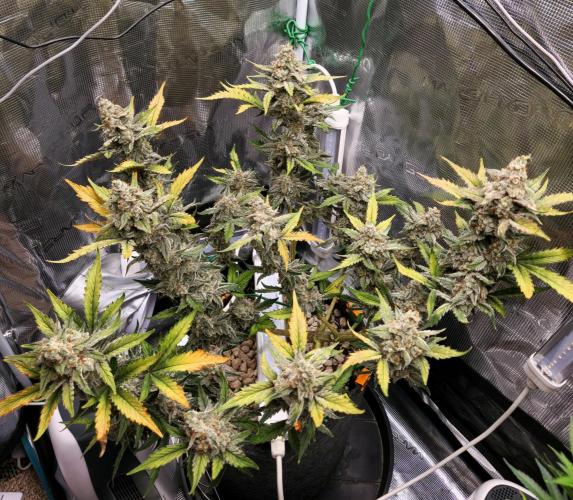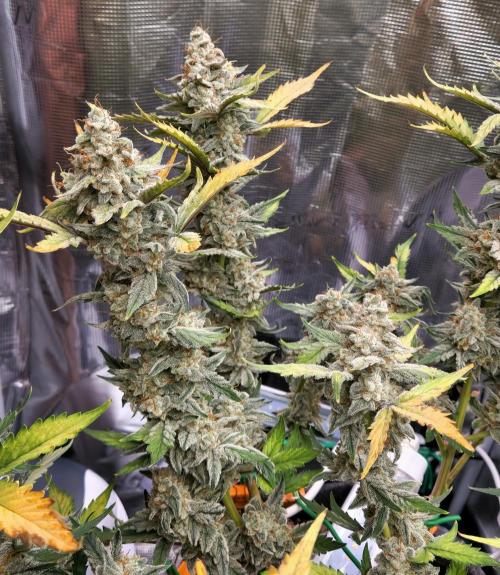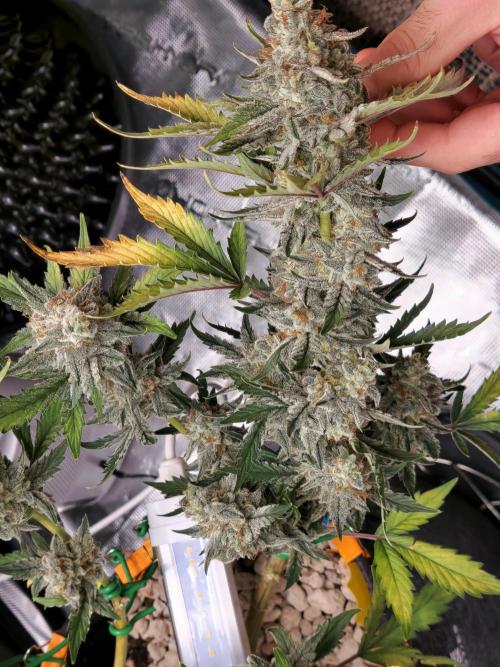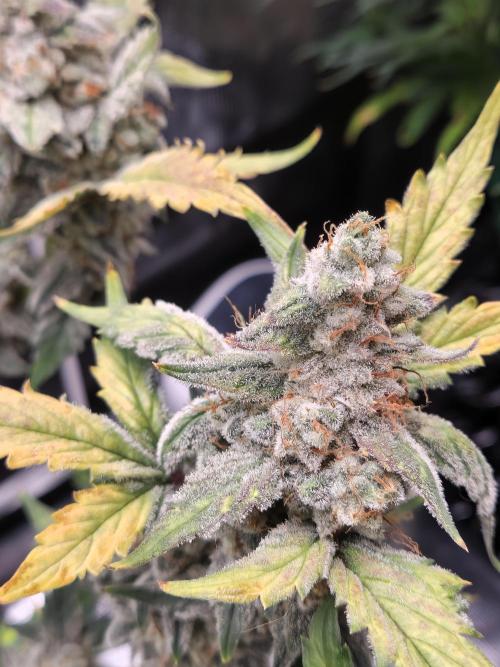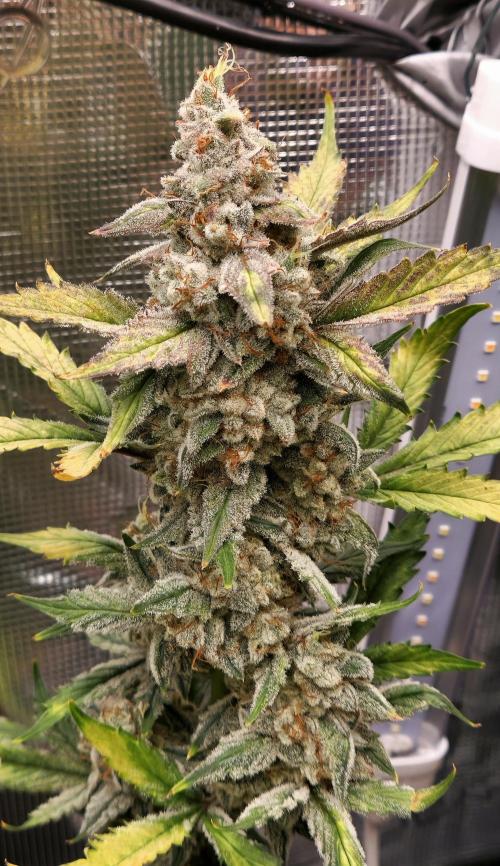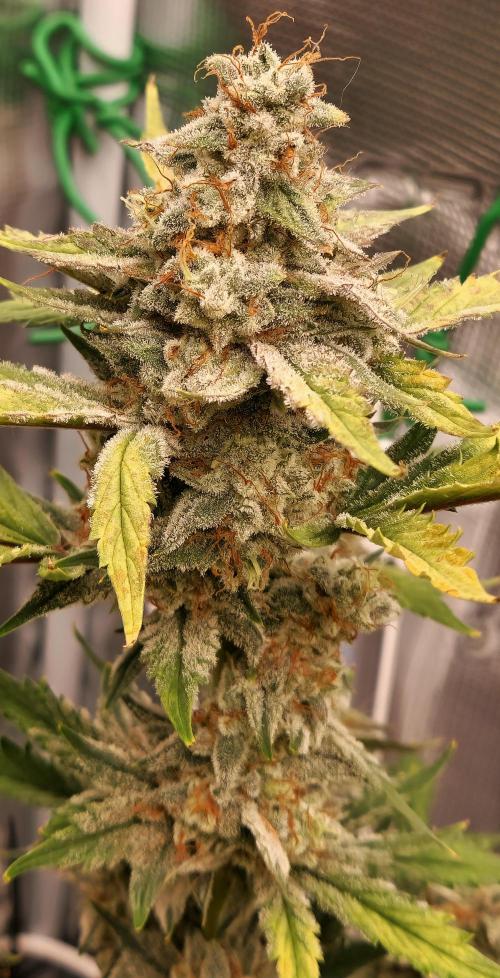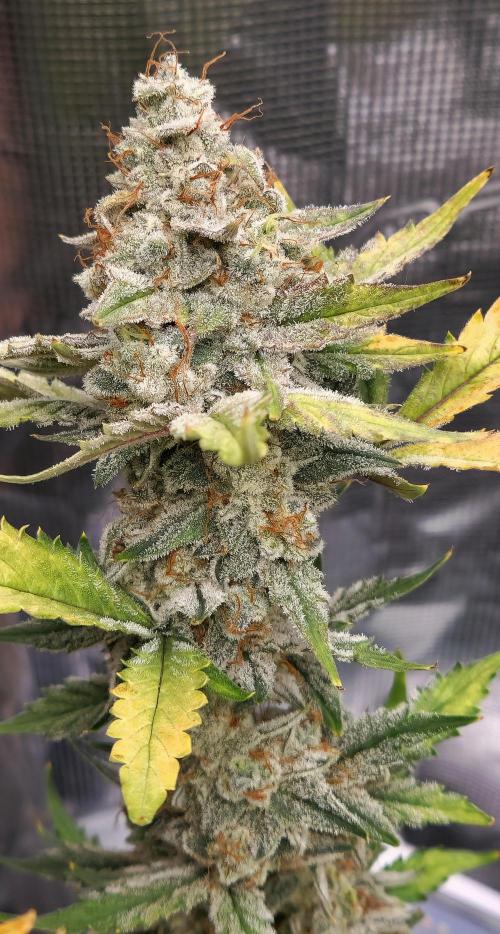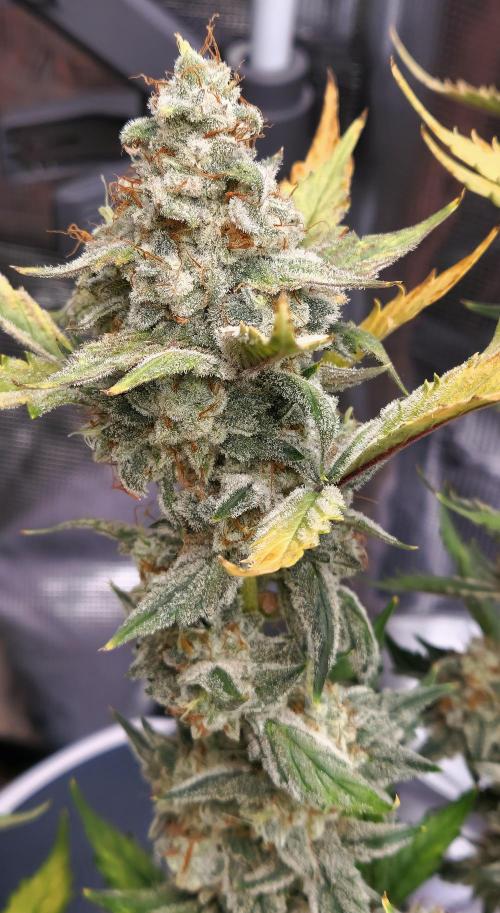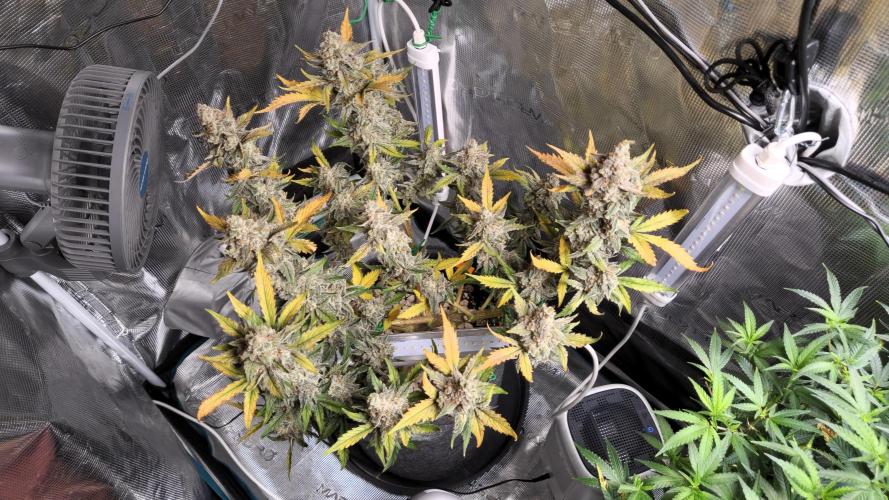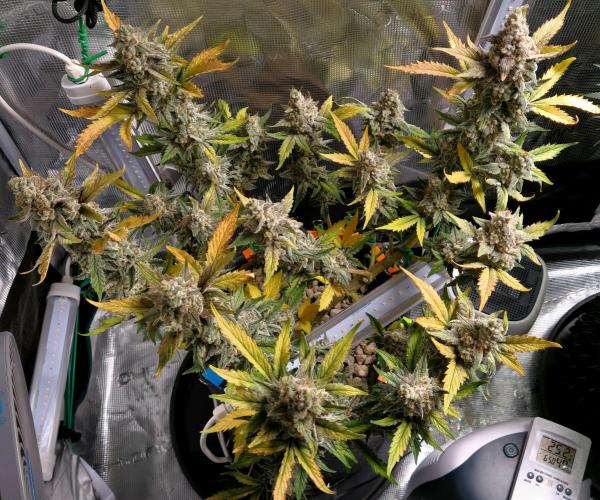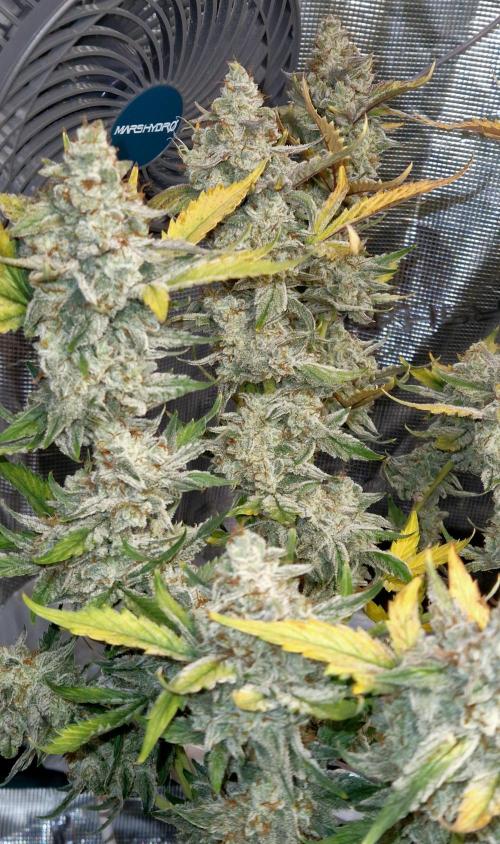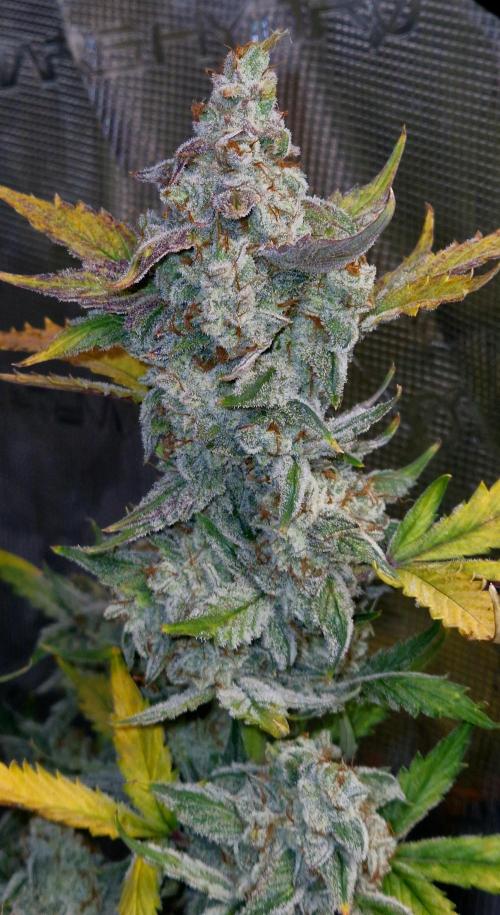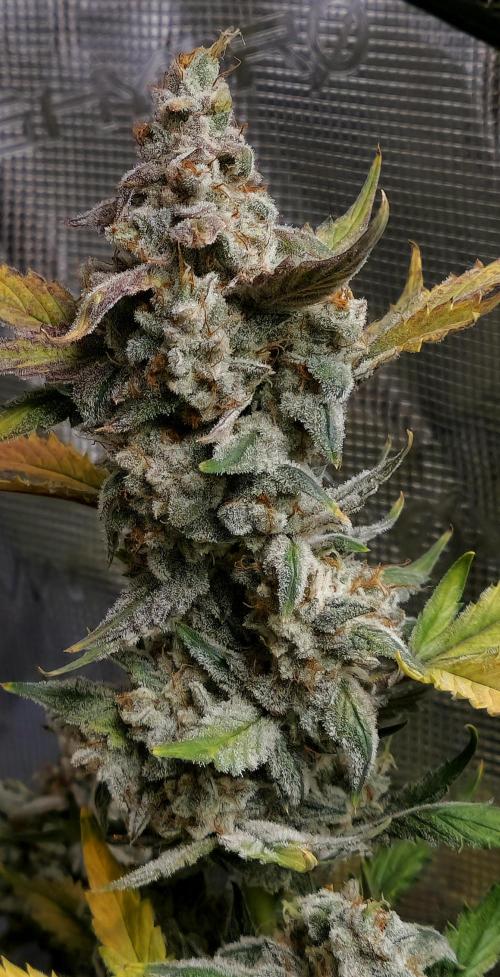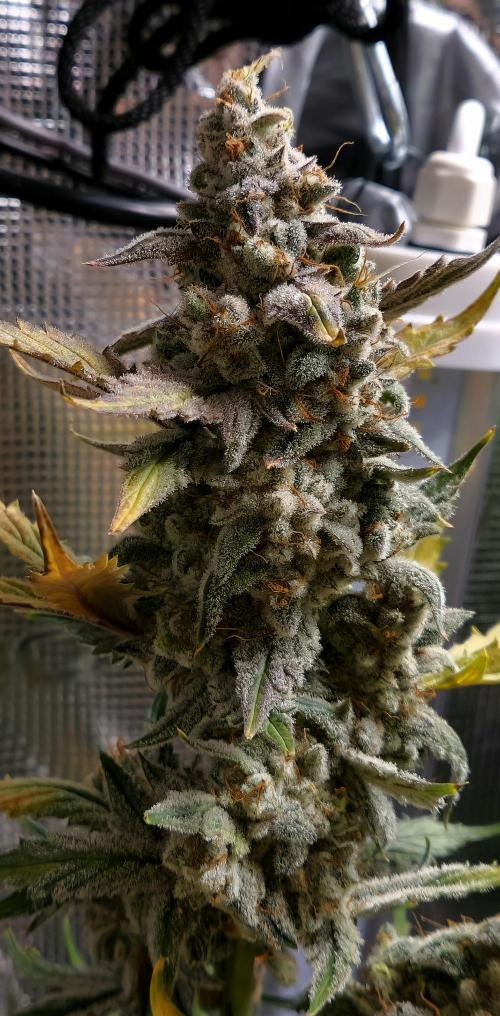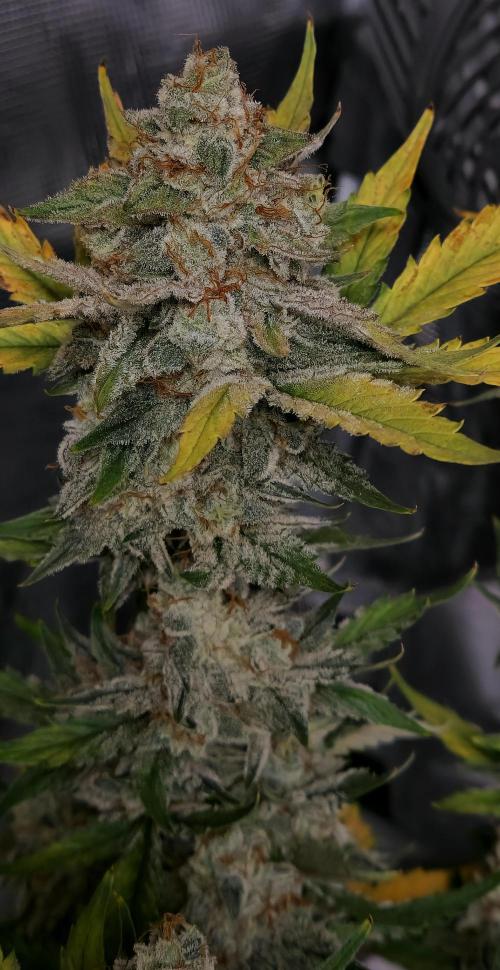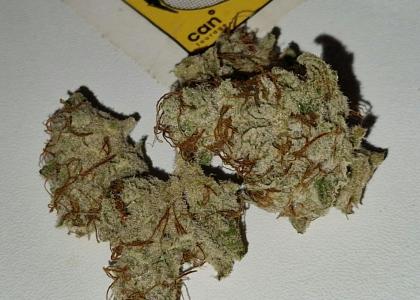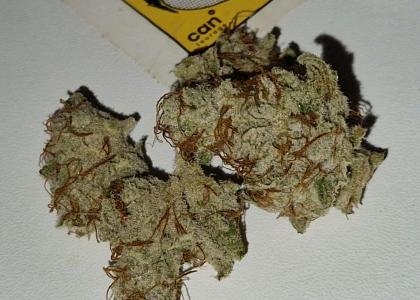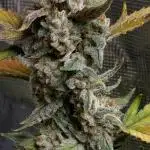The Grow Awards 2026 🏆 













💚Mephisto Genetics💚 (Experiment)

VEG
FC-E1500 Light Emitting Diodes/150W

FLO
FC-E1500 Light Emitting Diodes/150W

Fan
PK125WHSP-3
Prima Klima

Fan
Intake Fan 100 mm
Ventilation Fans

Fan
Intake Fan 125 mm
Ventilation Fans

Fan
Outake Fan 125mm
Ventilation Fans

Fan
2x Oscilating Fan

Filt
125mm Activated Carbon Filter L
Carbon Active

Filt
125 mm Activated Carbon Filter XL

Filt
125mm Activated Carbon Filter S
Perlite
Perlite
Indoor
Room Type
Topping
weeks 5-10
LST
weeks 5-10, 13
Lollipoping
weeks 6
Defoliation
weeks 6-10, 13
15 liters
Pot Size
Start at 14 Week
G
Germination7mo ago
BrediniGreeny Welcome to what I’m calling my Mephisto Genetics Experiment!😄
Why the dramatic name? Because the summer forecast is hotter than a jalapeño in a sauna.😫😫.
We’re about to find out how well we can dance through the heat—me, my plants, and the mighty air conditioner. I’ve already ordered a mobile AC unit to keep things chill—literally.
On May 15th, I kicked off the experiment by putting a Forum Stomper from Mephisto Genetics bean to germinate.
I couldn’t stop myself there (classic me), so on May 17th, I added a Double Grape to the mix because… let’s be honest, that grower itch is real, and I just had to scratch it.
Now here’s the twist: I'm keeping these seeds in the good ol’ wet paper towel method, tucked gently inside a plastic container.
But here’s where it gets a bit odd—they’re always with me. Like, on me. I’m experimenting to see if my body warmth helps with germination.
Will it make a difference? Will I become some kind of sprout whisperer? Only time will tell.
So that's it for now. Two seeds, one AC unit on the way, and a summer of sweaty suspense ahead. Let’s see how this goes—stay tuned and root for me (pun very much intended)!😏😛
5/19/25
May 19th – We Have Liftoff! 🚀
Today’s the day – both seeds have germinated! One of them, our little Forum Stomper, ditched her helmet (left her seed shell behind in the paper towel) and even spread her cotyledon leaves while I wasn’t looking. The other, Double Grape, is just starting to show her taproot.
I placed them both into pre-soaked coco tablets (soaked in pH 6.5 water with 0.1ml of root juice). Gave them a nice mist with room temperature water, tucked them into a glass container, and now it’s up to them. Fingers crossed, but for now — liftoff achieved! 🌱✨
5/23/25
The Mephisto Genetics experiment is going really well. The little ones are now a bit bigger and just moved into larger pots. I used BioBizz Light Mix with added perlite—about a 50/50 ratio. I also added TNC Mycorr Plus for beneficial fungi and microbes. To protect the roots from fungus gnats, I topped the soil with a layer of clay granules and a bit of sand.
The Double Grape is looking good, just slightly crooked from chasing light on the windowsill. Forum Stomper had some trouble with her cotyledons, but she's pushing out her first true leaves now and looks like she'll bounce back.🙏💚
I also gave them about 150 ml of water total, pH 6.3, PPM 105, at a temperature of 22.5°C. Each plant got roughly 75 ml. They’re now in the tent where just one SF-1000 is on over the Gelato Auto, far away😁 and receiving around 168 µmol/m²/s PAR.
Stay tuned—things are looking promising.😊💚🌱
20 likes
8 comments
Share
1
Week 1. Vegetation7mo ago
2 cm
Height
20 hrs
Light Schedule
26 °C
Day Air Temp
6.3
pH
No Smell
Smell
100 PPM
TDS
48 %
Air Humidity
22 °C
Night Air Temp
0.5 liters
Pot Size
BrediniGreeny 5/25/25
Veg Day 1
My little Mephisto Genetics babies are off to a solid start! 🌱 They’re about 2cm tall now and looking lively.
One of them (Forum Stomper) had a rough start with some cotyledon leaves drama 😥, but she’s bounced back and is pushing out her first true leaves—back on track and keeping pace with her sister.
Double Grape is thriving😍 !
5/27/25
So after asking my grow question and getting a ton of great responses (huge thanks to everyone!), I decided to recheck the DLI for all the plants to see exactly where things stand. Ended up adjusting the positions a bit—now the healthier-looking Double Grape (aka Grapey) is sitting at around DLI 14, and the Forum Stomper (Stompy) is getting about DLI 11. Hopefully that helps balance things out!
Also had a hunch that the layer of sand on top of the soil might be limiting oxygen flow to the roots. After reading through all the helpful feedback, that hunch got confirmed—big shoutout to @Ultraviolet for the clarity and good vibes!
Lesson learned: sand’s fine later on in air pots, but not ideal for young plants in regular plastic pots. Noted!
They also got a little treat today—about 100ml of water each with a sprinkle of cinnamon. Going in PH 6.5 ppm 112 temp 21°C.
Grow babies, grow!
Much love – 💚💚💚🌱
5/28/25
The little Mephisto girls got their own tent now! I moved them in to get better control over the light and overall conditions.
I wasn’t liking how the Double Grape was chasing the light from the flowering Gelato, so this should keep things more dialed in.
The Spider Farmer 32W under-canopy/veg LED lights arrived today — I ordered two sets, and I installed one in the new Spider Farmer nursery tent.
That space will now be dedicated to early veg and seedling stages.
I set the light schedule to 20 hours on / 4 hours off, which gives them just over 10 DLI. Super hyped to see how the Mephisto girls take off in their new setup!😊
5/31/25
Today I gave both Mephistogenetic plants some light watering. Each one got about 150 ml of water, mixed with:
0.2 ml Root Juice; 0.15 ml BioHeaven ; 0.15 ml ActiVera
The pH going in was 6.1, PPM at 160, and water temp was 23°C.
After watering, I put both plants on the counter near the sink. As I moved around I flung Forum Stomper into the sink. The soil spilling everywhere and "Stompy" ending up just in the coco puck with roots ticking out. I replanted it but I think that was it for her. She was already not growing very good. I am very, very disappointed in me. I don't know but since I started documenting my grows here I have a lot of bad luck. I think I should stop and just grow for myself. What's even the point in posting ?!? 😒😒
18 likes
2 comments
Share
Grow Questions
BrediniGreenystarted grow question 7mo ago
Hi Growmies✌️💚🌱 I am looking for opinios on what my little one has? And what can I do to help her, if anything? Started her 2 days before the Double Grape, she germinated first, had problems with cotyledon leaves from the start. Even when they weren't green,they had spotsThx
Solved
Leaves. Other
1 like
Ultravioletanswered grow question 7mo ago
Pot looks ceramic or plastic, limiting oxygen. Sand can act as an effective oxygen barrier, particularly when combined with other materials in a layered system designed to control water infiltration and oxygen diffusion. This is because sand's coarse nature and the resulting spaces between grains can limit the passage of oxygen through the soil. Oxygen readily diffuses through air, but its diffusion through water is significantly slower (up to 10,000 times slower). Sand is creating a moisture-retaining layer (MRL), hindering oxygen diffusion. God bless those hydroton pebbles.
Phosphorus is an essential plant nutrient, and its availability in the soil is strongly linked to the presence of oxygen. Plants primarily absorb phosphorus as phosphate (PO4), and oxygen is a key component of this molecule. Furthermore, the availability of phosphorus in the soil can be impacted by factors like soil aeration and temperature, which in turn affect the oxygen supply to the roots.
Phosphorus uptake in plants is most critical during the early stages of growth, particularly within the first few weeks of plant development. Young plants actively growing tissues have a high demand for phosphorus. They may absorb up to 75% of their total phosphorus requirements within the first few weeks of vegetative growth, with studies indicating in controlled environments up to 51% of uptake happening overnight, primarily in the first few hours or early nightfall.
Anaerobic respiration, unlike aerobic respiration, doesn't utilize oxygen as the final electron acceptor in the electron transport chain. This results in a significant drop in the amount of energy (ATP) produced, which is necessary for various plant functions, including growth, nutrient uptake, and maintenance of cellular processes. In the absence of oxygen, cannabis produces byproducts like ethanol and lactic acid during anaerobic fermentation. These byproducts can be toxic to the roots and inhibit their function, the lack of oxygen in the plant medium leads to a decrease in pH due to the production of carbon dioxide during anaerobic respiration and impaired pH regulation within the plant.
You can survive weeks without food.
You can survive days without water.
You can survive minutes without oxygen.
You can survive 16 seconds without ATP.
2
Week 2. Vegetation7mo ago
2 cm
Height
20 hrs
Light Schedule
24 °C
Day Air Temp
6.3
pH
No Smell
Smell
100 PPM
TDS
48 %
Air Humidity
0 °C
Solution Temp
22 °C
Night Air Temp
0.5 liters
Pot Size
BrediniGreeny 6/1/25
Starting a new week. Stompy turns out to be a mutant😁[for now, until she shows me some normal leaves]. Grapey is growing strong💚
Although Stompy germinated first, she is more then twice as small as her sister Grapey😊
No matter, I will keep them both, give them care and love and see if Stompy surprises me😁.
6/4/25
Today they got 150 ml of water each with: RootJuice 0,2ml; Activera 0,2 ml; BioHeaven 0,2ml; CalMag 0,15ml.
Going in PH 6,2 ppm 230 temp. 23°C.
16 likes
comments
Share
3
Week 3. Vegetation6mo ago
9 cm
Height
20 hrs
Light Schedule
25 °C
Day Air Temp
6.3
pH
No Smell
Smell
160 PPM
TDS
52 %
Air Humidity
0 °C
Solution Temp
22 °C
Night Air Temp
0.5 liters
Pot Size
BrediniGreeny 6/8/25
Starting a new week. Very good, growing.😍💚
They got around 200ml of water each with:
RootJuice 0,4ml; Activera 0,2ml; CalMag 0,3ml
Going in:
PH 6,16 ppm 260 Temp 25°
Grow babies groooow😍🍇🍇👣💚🌱
6/10/25
Grapey is doing very good, soon to be transplanted💚🍇🍇
Stompy on the other hand is throwing another set of mutant leaves😅💚 i am very interested where the journey will go👣💚
6/12/25
Both Grapey and Stompy got transplanted today💚
I decided to go for a 15l "High Edition" Rooties textile pot for Grapey and for a 6l Rooties textile pot for Stompy😊.
My decision is based on Stompy not growing so vigorously. I think she will be a small plant. Grapey might be a medium-small plant because of not transplanting sooner😁
I don't mind 😊
The first layer that went in the pots, so the last layer the roots will reach, was composed of:
BioBizz Light Mix, Perlite, a little bit of Worm Hummus, a sprinkle of spent coffee grounds, a sprinkle of guano and a sprinkle of TNC MycorrPlus.
The layer is about 10 cm or such.
On top of that i added just BioBizz Light Mix, a sprinkle of spent coffee grounds and a sprinkel of TNC MycorrPlus😁.
As for the top soil I put the little stones that i use in the last time.
Gave them both 500ml of water with PH at 6,2 ppm around 115 temp 23,5° C.😊
Grapey got the top 2 fan leaves cut down so to slow down the main and introduce more light to the other nodes.
17 likes
2 comments
Share
4
Week 4. Vegetation6mo ago
9 cm
Height
20 hrs
Light Schedule
28 °C
Day Air Temp
6.3
pH
No Smell
Smell
160 PPM
TDS
52 %
Air Humidity
0 °C
Solution Temp
25 °C
Night Air Temp
0.5 liters
Pot Size
BrediniGreeny 6/13/25
Started a new week after transplant.
They didn't took it so well but now recovering. We will see how it goes. It is an experiment afterall.😊💚🌱
6/16/25
Today, Grapey gets around 2.1 liters of water with pH at 6.0, PPM at 90, and water temperature at 21°C.
Stompy gets around 1.4 liters of water, pH at 6.2, PPM at 95, and temperature at 21°C.
19 likes
comments
Share
5
Week 5. Vegetation6mo ago
9 cm
Height
20 hrs
Light Schedule
28 °C
Day Air Temp
6.3
pH
No Smell
Smell
160 PPM
TDS
52 %
Air Humidity
0 °C
Solution Temp
25 °C
Night Air Temp
0.5 liters
Pot Size
BrediniGreeny 6/20/25
Starting a new week and doing just fine. 💚 Grapey is showing preflowers😍 Stompy is really small and kinda bushy.😅😅 💚
6/21/25
Today I thought, okay, Grapey is going into flowering — she’s showing pre-flowers — so she got a guano top dressing.
I did it how I felt like it, didn’t measure how much I put in, just kind of like what I did with the Gelato automatic plant.
Then she also got 1.4 liters of water with RootJuice, 4 ml Activera, 3 ml BioHeaven, 3 ml Algamic, 3 ml SiCaMag 0.1 ml CalMag 0.5 ml .
Going in, pH was 6.2, PPM at 250, and water temperature at 22°C. I also topped her — I don’t even remember when, I did it spontaneously — and yeah, did some LST on her.
I try to look for little signs of flowers or nodes starting down in the under canopy (if you can even call it that since she’s small) and I plucked like two, not really much yet.
Stompy, on the other hand, is super bushy and still not showing any pre-flowers, so she’s staying in veg and just growing and growing, making very big leaves.
She got the same water: 1.4 liters with the same nutrients as Grapey, just without the guano top dressing. We’ll see what happens.
6/25/25
Grapey has just a little too much nitrogen, but she will make it.😅💚❤️🌱
Stompy is showing vigorous growth all of a sudden. With big leafs almost as big as my hand😍 that's why they needed to go to make light available for the bushiness beneath😅💚🌱
Today, Grapey got 2.1 liters of water with Activera 4 ml, BioHeaven 3 ml, Algamic 3.5 ml,SiCaMag 0.15 ml, BioBloom 4 ml, and TopMax 1 ml.
Going in, pH was 6.4, PPM at 242, and water temperature at 22.5°C.
Stompy also got 1.4 liters of water with Activera 3 ml, Algamic 3 ml, BioHeaven 6 ml,SiCaMag 0.15 ml, and BioGrow 1.5 ml.
Going in, pH was 6.3, PPM at 261, and temperature at 22.5°C.
13 likes
comments
Share
Used techniques
Topping
Technique
LST
Technique
6
Week 6. Flowering6mo ago
38 cm
Height
20 hrs
Light Schedule
28 °C
Day Air Temp
6.3
pH
No Smell
Smell
160 PPM
TDS
52 %
Air Humidity
0 °C
Solution Temp
25 °C
Night Air Temp
15 liters
Pot Size
BrediniGreeny 6/27/25
New week💪💚🌱😍
6/28/25
The ladies from the Mephisto experiment are doing great! Yesterday marked the start of a new week, and everything’s looking solid so far.
Double Grape a.k.a Grapey:
She’s now in pre-flower and starting to stretch a bit. About a week or maybe a week and a half ago, I topped her spontaneously — didn’t really plan it, just felt like the right time.
I had left the big fan leaves at the topped node in place to act like little power stations, giving the lower growth a boost.
Today, I finally snipped those off since all the surrounding branches caught up and leveled out nicely.
I also did the absolute minimum amount of lollipopping — just a gentle clean-up — and now she’s back under the lights, cruising along happily.
Forum Stomper a.k.a Stompy:
Still no full pre-flowers yet, but I did spot a couple pistils at some nodes, so she’s getting there. I’ve been going hard on LST with her since I don’t plan to top.
She’s short and bushy, and I really want to encourage some nice even growth. Now, I’m toying with the idea of transplanting her into a 15L Rooties textile pot — she’s currently in a 6L one.
Honestly, I didn’t expect her to turn out this vigorous, especially considering the rocky start she had with those cotyledon issues. But wow, she’s bounced back beautifully.
Very hyped to see how things go from here. Stay tuned and thanks for following along!😊💪
6/29/25
🌱 Feeding Day!
Grapey (Double Grape):
She got 2.4L of water today, mixed with:
Activera: 3ml ;BioHeaven: 3ml; Algamic: 3ml; BioBloom: 8ml; TopMax: 3ml; RootJuice: 5ml
Going in: pH: 6.2 PPM: 325 Temp: 24.5°C
She’s settled in and seems done with her stretch. Staying compact, but she’s focused on building flowers now.
I don’t expect her to get much taller, but the bud sites are looking promising—quality over quantity vibes.
She’s a small girl, but she’s giving that frosty energy.😍
Stompy (Forum Stomper)
Same amount of water (2.4L), but a slightly different feed mix: Activera: 4ml; RootJuice: 8ml; CalMag: 1.6ml; SiCaMag: 0.1ml; BioGrow: 3ml; BioHeaven: 3ml; Algamic: 3ml
Transplant Update:
Stompy also got moved from a 6L to a 15L Rooty's High Edition pot. I really like the format—taller and narrower than a standard 15L textile, fits the space better.
Since the transplant? She exploded. Honestly, she was already exploding before, but now it’s another level. Serious vigor.😍
7/2/25
Today, Grapey (Double Grape) received 3.1 liters of water mixed with: 12 ML Activera; 12 ML of BioHeaven, 10 ML of Algamic, 10 ML of BioBloom, 5 ML of TopMax, 3 ML of CalMag, 6 ML of BrutJuice, and 0.2 ML of SiCaMag.
Going in: pH6,2 PPM 436 temperature 21,5°C.
Stompy (Mephistogenetics Sister) also got 3.1 liters of water, mixed with 12 ML of Activera, 12 ML of Algamic, 12 ML of BioHeaven, 8 ML of BrutJuice, 0.25 ML of SYCAMAG, 2.5 ML of CalMag, and 5 ML of BioGrow.
Going in: pH6,2 PPM 475 temperature 21,5°C.
The tent is getting a bit warm during the day, hovering around 29°C, sometimes a little higher, but not quite hitting 30°C yet—which I’m happy about, though it feels like it might soon.
Humidity has been stable, staying right around 50%, give or take 2–3%.
14 likes
2 comments
Share
Used techniques
Topping
Technique
LST
Technique
Defoliation
Technique
Lollipoping
Technique
Grow Questions
BrediniGreenystarted grow question 6mo ago
Hi Growmies💚🌱so Forum Stomper is in a 6l Rooties textile pot because after all the problems she had I thought she will remain small. She is still in veg,no signs of flowering soon, growing like crazy.Can i transplant to 15l now?Rooties have zippers so minimal root damage.thx💚
Solved
Plant. Other
1 like
All_our_small_plantsanswered grow question 6mo ago
Ja sehe da kein Problem wen. Die Wurzeln nicht beschädigt werde, habe schon X mal Pflanze umgetopf auch ihn der Blütephase, wenn mann es vorsichtig macht geht das ohne Stress und Nachteile, sie wird es dir auch sicher danken wenn sie mehr Platz für ihre Wurzeln hat.
7
Week 7. Flowering6mo ago
55 cm
Height
20 hrs
Light Schedule
25 °C
Day Air Temp
6.3
pH
No Smell
Smell
160 PPM
TDS
45 %
Air Humidity
0 °C
Solution Temp
22 °C
Night Air Temp
15 liters
Pot Size
BrediniGreeny 7/4/25
New week started💚💚🌱
7/6/25
🍇🍇Grapey gets 3.1 liters of water with BioBloom 12 ml, TopMax 6 ml, BioHeaven 15 ml, Activera 15 ml, Algamic 12 ml, CalMag 3 ml. Going in pH at 6.3, ppm 575, temp 22°C.
No LST today, just removed 3–4 large leaves that were shading lower growth.
👣👣Stompy gets 3.1 liters of water with BioBloom 6 ml, Activera 15 ml, BioHeaven 15 ml, Algamic 12 ml, CalMag 3 ml, BioGrowth 6 ml, C-CalMag 0.15 ml. Going in pH at 6.2, ppm 703, temp 21.2°C.
Did light defoliation, took 4–5 leaves that were shading, plus a bit of LST to open her up.💚
15 likes
comments
Share
Used techniques
Defoliation
Technique
LST
Technique
Topping
Technique
8
Week 8. Flowering5mo ago
60 cm
Height
20 hrs
Light Schedule
25 °C
Day Air Temp
6.3
pH
No Smell
Smell
160 PPM
TDS
45 %
Air Humidity
0 °C
Solution Temp
22 °C
Night Air Temp
15 liters
Pot Size
BrediniGreeny 7/11/25
New week babieess😍😍!!!!
7/13/25
Ohhh baby, the Mephisto experiment is cooking so so good right now.
I’m actually kind of stunned at how things are evolving, especially with Forum Stomper, a.k.a. Stompy the Comeback Queen.
She had kind of a rocky start — I mean, cotyledons were looking funky, and she went all bush-mode on me: dense structure, super tight internodal spacing, real short-stack energy.
But oh no no, she wasn’t done. Fast forward to now... Stompy is a straight-up MONSTER. A chunky, thriving beast that just keeps getting bigger — and I know she’s not done yet.
She’s officially stretching into flower now. Not just hinting at it — nah, full flowering stretch is underway, and she’s reaching up like she just realized she’s got room to take over the whole tent. I love this part.
Today was watering day, and both girls got their special cocktails.
First up, Grapey.
She drank 4.4 liters of love, with her mix spiked up with BioBloom at 16 ml, Topmax at 12 ml, BioHeaven at 16 ml, Activera at 16 ml, Agamic at 12 ml, and a touch of CalMag at 3.5 ml.
She’s hitting flower hard now too, and this brew should set her up to swell up sweet and loud.
Going in: pH 6,23, PPM 510 Temp 22,5 °C
Runoff: pH 6,47, PPM 1350
Then we’ve got Stompy, the Comeback Queen.
She got 4 liters of her own nutrient-rich mix: BioBloom 12 ml, Topmax 10 ml, Activera 12 ml, BioHeaven 12 ml, Agamic 10 ml, CalMag 3.5 ml, and just a whisper of CicaMax at 0.3 ml to finesse that vigor.
Oh, and let’s not forget — she also got her guano top dress today. I scooped out one of my little measuring cups, sprinkled it in like fairy dust, and let nature do its thing.
This is going to kick the bloom engine into overdrive.
Going in: pH 6,22 PPM 485 Temp 22 °C
Runoff: pH 6,7 PPM 650
7/17/25
Today Grapey got 4.8 liters of water, going in pH at 6.0, PPM 88, temperature 21.2 degrees Celsius. Runoff was pH 6.8 and PPM 760.
Stompy got also 4.8 liters of water, pH going in at 6.0, PPM 106, temperature 21 degrees. Runoff came out pH 6.2 and PPM 2000. Goddamn 😅 but she seems okay with it.
I think the next watering will also be just plain water because she has enough there. I will see.😍
20 likes
2 comments
Share
Used techniques
LST
Technique
Topping
Technique
Defoliation
Technique
9
Week 9. Flowering5mo ago
60 cm
Height
20 hrs
Light Schedule
25 °C
Day Air Temp
6.3
pH
No Smell
Smell
880 PPM
TDS
45 %
Air Humidity
0 °C
Solution Temp
22 °C
Night Air Temp
15 liters
Pot Size
70 cm
Lamp Distance
BrediniGreeny 7/18/25
💚💚🍇🍇👣🍪💚💚
7/20/25
Today, Stompy gets 4 liters of water with BioBloom, 10 ml, and TopMax, 15 ml.
Going in, the pH was at 6.2, PPM at 265, and the temperature at 23 degrees.
She’s also blooming — started very, very well. Nice structure, and she seems to be handling everything with ease so far.😍
7/22/25
Grapey gets 4.8 liters of water today with BioBloom, 18 ml, TopMax, 18 ml, ActiVera, 20 ml, BioHeaven, 20 ml, Algamic, 16 ml, CalMag, 4 ml, and SiCaMag, 0.3 ml.
Going in, the pH was at 6.2, PPM at 600, and the temperature at 22 degrees. The runoff measured at pH 6.6 and PPM 1050 .
I also measured the soil — it’s not super accurate, but I got readings around pH 6.0 to 6.2, and the temperature was steady between 21 and 22 degrees.
I’m thinking of setting up some side lights, mainly for Grapey since she’s starting the late flowering stage,I think😄 but also a little for Stompy too.
Honestly, Stompy isn’t that “stumpy” anymore, as you can probably tell from the photos. I also adjusted the lighting a bit — raised the lights over Stompy and LSD, and slightly dimmed them, because both plants were showing a bit of light stress. Over Grapey, I played around a bit with her light as well — small tweaks, just to keep things balanced.
Also thinking about starting the UV cycle, should benefit both😋,until then I must measure and get of an idea of the PPFDs and DLs in the different ares of the tent, but all in the days to come.
I also had a go at the ventilators, just to fine-tune them how I wanted.The outake ventilator, the big one, is set at max now, very pleased with the noise and power😍 Shoutout Prima Klima for the Whisper Series😍💪 Also put a little intake ventilator 100mm on the right side of the tent, so now bot sides have airflow from underneath.
As for Grapey’s cycle, I think we can still push now for more THC development — but she’s already quite frosty, so I’m not too worried.
We’ll see how Stompy performs in that area, especially with the current tweaks.
In the tent, the climate has been mostly stable. During the day, with the lights on, the temperature stays between 24.5°C and 27°C. Nights are a bit cooler, usually around 23 to 24°C, which I’m happy with. Humidity tends to jump up and down quite a bit, but overall I like where it’s heading. It did spike a little at one point, so I decided to introduce the smaller dehumidifier in the tent also.
Right now, it’s hovering nicely around 55%, and I’m keeping it between 45% and 55% — feels like the sweet spot for this stage. Everything’s breathing well in there.
All in all, I’m really happy with how the experiment is going. Progress is steady, and the girls are speaking😍. Stay tuned — more updates soon.😊😇💪
22 likes
1 comment
Share
Used techniques
LST
Technique
Topping
Technique
Defoliation
Technique
10
Week 10. Flowering5mo ago
60 cm
Height
20 hrs
Light Schedule
26 °C
Day Air Temp
6.3
pH
No Smell
Smell
880 PPM
TDS
52 %
Air Humidity
0 °C
Solution Temp
22 °C
Night Air Temp
15 liters
Pot Size
70 cm
Lamp Distance
BrediniGreeny 7/25/25💚🍇🍇👣🍪💚
7/26/25
Today, 🍇🍇Double Grape, aka Grapey🍇🍇, got herself 4.8 liters of water 💧.
In the mix was Biobloom, 10 ml, Top Max, 17 ml, Activera, 10 ml, Bioheaven, 8 ml, Algamic, 6 ml, SiCaMag at 0,2ml and CalMag at 3 ml 🌱.
Going in, pH sat at 6.1, ppm was at a smooth 306, and temp was a steady 20.5°C 🌡️. No runoff to measure today, she drank it all up 😌.💚
7/28/25
Today, 👣🍪Forum Stomper, aka Stompy,👣🍪got a good 5.6 liters of water 💦.
Biobloom was in at 20 ml, Top Max 20 ml, Bioheaven and Activera both at 15 ml, Algamic also 15 ml, SiCaMag at 0.4 ml, and Biogrow 15 ml too. Oh, and CalMag 3 ml ⚡.
Going in, pH was 6.3, ppm landed at 700, temp right on at 20.5°C 🔥.
Runoff came back with a pH of 6.48 and ppm climbing to 1200 — she's been eating well 💚🍽️.
Grapey is looking very good 🍇. She’s showing a little signs on the fan leaves that she’s taking nutrients from there — I think it’s potassium... phosphorus, maybe. I hope it’s not a magnesium lockout 🤞.
She’s going now, I would say, into the last two weeks. In the next two weeks she should be ready to harvest... but I’ll see about that. I don’t know yet.😋
Probably with her I must drop the PPM now. But I think I will do one more light feed, and then after that, just water. Just water 💧. No more nutrients. 😝
Yeah, Forum Stomper — she’s thriving 🌿. Stompy’s in turbo mode now. She’s putting on the trichomes production like crazy, snowy ❄️, Snowy the snowman comes to town 😍😆.
She’s showing it off on the sugar leaves, and also on the fan leaves that are really close to the main buds. And yeah, we will see. Stompy will keep getting feeds, because she went into flower a lot later than Grapey.
So let’s see. Stay tuned 🌀.Let’s see where they go next.Thank you very much for taking time and stoping by🙏🙏
If you like my work, feel free to drop a like, follow, even an DM and be sure to stay tuned💚🍇🍇👣🍪💚
19 likes
comments
Share
Used techniques
LST
Technique
Topping
Technique
Defoliation
Technique
11
Week 11. Flowering5mo ago
70 cm
Height
20 hrs
Light Schedule
27 °C
Day Air Temp
6.3
pH
Strong
Smell
50 %
Air Humidity
0 °C
Solution Temp
23 °C
Night Air Temp
15 liters
Pot Size
70 cm
Lamp Distance
BrediniGreeny 8/1/25
New week💚🍇🍇👣🍪💚
I'm so happy with the Mephisto experiment — they are floweriiiinnngg😍😍, and it's very, very beautiful. 💚🌱
The Double Grape 🍇 is on the end stretch, looking very good — just a little small. But no problem. It will be a very, very, very tasty treat🍇🍇 .
It smells so, so beautiful. I think about a week or so and she’ll be done.⏳
And the Forum Stomper 👣 🍪— so stompy! Well… not so stompy anymore 😄. She’s now very lengthy and made very beautiful, structured flowers. ✨
The under branches took over and built up like four very beautiful colas. And the main one is still on there — I didn’t top her, just LST, and she’s so beautiful. 🌿💚
I also took some pictures of my LST work on her — proud of how she came together!😍
The Double Grape, unfortunately, got a bit shocked during the transplant — very young🤷♂️.
But the Forum Stomper got transplanted three times and didn’t say a word — just grew strong and kept on pushing! 💪🌱
Oh, and both are very frosty ❄️ — really frosty flowers. I think the Forum Stomper will be even frostier than the Double Grape. But we’ll see! 👀
Today I also turned on the UVB light — it comes on in the morning right when the IR light goes off and stays on for half an hour, then again for half an hour at noon, once more in the evening, and one final time right before all the main lights go off. In total 2 hours of UVB exposure.
Thank you very much for stopping by, for looking at the pictures, and taking the time to read what I write here — or even for a like and follow if you like what I do. 😄🙏
Stay tuned. Keep on growing. Peace. ✌️💚🍇🍇👣🍪💚
16 likes
2 comments
Share
12
Week 12. Flowering4mo ago
70 cm
Height
20 hrs
Light Schedule
28 °C
Day Air Temp
6.3
pH
Strong
Smell
50 %
Air Humidity
0 °C
Solution Temp
25 °C
Night Air Temp
15 liters
Pot Size
80 cm
Lamp Distance
BrediniGreeny 8/8/25
So, starting a new week. The Double Grape 🍇🍇 has been harvested and is still drying nicely.
The Forum Stomper 👣🍪 — Stompy for short — is still going strong. I’m going to let her run just a little bit longer before harvest.
I don’t think I’ll do a full chop; instead, I’ll take just half of her and leave the bottom half on to finish up a bit more.
8/9/25
Today Stompy 👣🍪 enjoyed 6.4 liters of water mixed with BioBloom 15 ml, BioHaven 15 ml, TopMax 15 ml, ActiVera 15 ml, Alg·A·Mic 15 ml, and CalMag 6 ml.
The feed went in at pH 6.2 with 360 ppm, and the temperature was 20 °C. Her runoff came back at pH 6.8 with 1050 ppm.
Super duper frazilistic. 🌿✨
8/12/25
She’s super frosty —👣🍪Stompy😍 honestly blew my mind with the frost on both of the Mephisto Genetics strains.
The Double Grape 🍇🍇 might have been a little smaller, but I’m pretty sure that was on me. Still… wow. As I write this, it’s the 12th of August, and it’s been about four days in the jar.
I couldn’t resist testing some in the vaporizer and… wow again. I can’t wait to give her a good, long cure. I did dry her a little too fast, but that’s okay — lesson learned.
We’ll see about her sister, the Forum Stomper 👣🍪. I’ll try to dry her a bit slower, but with the temperatures here, it’s not going to be easy.
The next few days are looking like 33–35 °C, so I’ll try to wait out the big swings if I can.
🙏🙏😇Thank you very much for taking the time to look at my work, for the likes, and for the support.🙏🙏😇 Blessings be upon you — may you have a very, very, very, very, very wonderful day. Stay tuned! 😍😇🌿✨
4 likes
comments
Share
12
Week 12. Harvest5mo ago
Happy Harvest Day!

10/10
Rated
Wow — I’m really, really impressed with the flavor, even without a proper cure. In the four days since harvest, I’ve been guilty of taking just a little bit… then a little bit more… and a little bit more again. Initially, the little Double Grape came in at 52.52 g — very frosty, very fragrant — though fast-dried by mistake because of the high temperatures. Even so, it’s been very, very tasty.
Now, after four days in the jar, she’s at 49.7 g. I say I won’t touch her so she can cure… but I’m lying. I’ll definitely dip in from time to time — she’s just too tasty to resist. Potency-wise, she’s got that pleasant, relaxing indica side that you can really feel. The flavor is fruity, with some imagination it reminds of grapes, with a gassy,creamy, smooth note that’s just so good. Very frosty, very flavorful — I can’t wait to see what a proper cure will do to the taste.
Show more
Translate
Spent 100 days
Ger Veg Flo Har
1
Plants
Normal
Difficulty
Height
Day air temperature
Air humidity
PPM
PH
Light schedule
Solution temperature
Night air temperature
Pot size
Lamp distance
BrediniGreeny 8/5/25💚🍇🍇💚
Unplaned harvest😅 because of bananas😅
8/12/25
Wow — I’m really, really impressed with the flavor, even without a proper cure. In the four days since harvest, I’ve been guilty of taking just a little bit… then a little bit more… and a little bit more again. Initially, the little Double Grape 🍇🍇 came in at 52.52 g — very frosty, very fragrant — though fast-dried by mistake because of the high temperatures. Even so, it’s been very, very tasty.
Now, after four days in the jar, she’s at 49.7 g. I say I won’t touch her so she can cure… but I’m lying. I’ll definitely dip in from time to time — she’s just too tasty to resist. Potency-wise, she’s got that pleasant, relaxing indica side that you can really feel. The flavor is fruity, with some imagination it reminds of grapes, with a gassy,creamy, smooth note that’s just so good. Very frosty, very flavorful — I can’t wait to see what a proper cure will do to the taste.
I only vape my flower, as I’m a medicinal patient, so I get the cleanest flavor possible. I enjoy showing that with a good setup, you can grow a small plant like the Double Grape 🍇🍇 and still pull around 50 g for personal use. You don’t need my exact system — just the right light and some care for one plant at a time. 🌿✨Keep on growing💪💪💚💚
19 likes
13 comments
Share
Equipment Reviews
13
Week 13. Flowering4mo ago
70 cm
Height
20 hrs
Light Schedule
28 °C
Day Air Temp
6.3
pH
Strong
Smell
50 %
Air Humidity
0 °C
Solution Temp
25 °C
Night Air Temp
15 liters
Pot Size
80 cm
Lamp Distance
BrediniGreeny 8/15/25💚👣🍪💚new week
8/17/25
Stompy 🌱👣🍪💚 is almost ready, and wow — she’s made such fine, frosty buds❄️, truly unlike any autoflower I’ve had before.
Compact, beautifully formed, with just a little hint of fox tails 🦊✨, conic in shape at the top, not oversized, just perfect. I really like her very much 👣🍪💚.
The terpenes are there, the parfume is insane, the smells… wow 🌸👃. I accidentally broke a small bud while watering 💧, and even that little piece smells amazing.
I’ve already put it to dry — it’ll be a demo.
Today she got just water 💧 at pH 5.95 ⚖️, ppm 95 📊, and 22.5°C 🌡️, keeping her hydrated and happy as she finishes.
Stay tuned 📖💚👣🍪💚 — this harvest is going to be a good one 🌟✨.
15 likes
comments
Share
Used techniques
LST
Technique
Defoliation
Technique
14
Week 14. Flowering4mo ago
70 cm
Height
20 hrs
Light Schedule
28 °C
Day Air Temp
6.3
pH
Strong
Smell
50 %
Air Humidity
0 °C
Solution Temp
25 °C
Night Air Temp
15 liters
Pot Size
80 cm
Lamp Distance
BrediniGreeny 8/22/25💚👣🍪💚
New week and in the next few days she will be harvested🤤🤤 it's been a good unespected ride😍💚
Update soon to come💚😍❤️ stay tuned❤️💚💪🙏
13 likes
14 comments
Share

the end.
Enjoying this diary? Follow for more updates!
Prefer the old Diary view?
Go back to the old Diary view

























































